
The outline of the body of Kola Dusmani, who according to criminal investigators, was killed by Russian para-militiaries in a small village outside the ancient market town of Gjakove. After he was murdered, the house where the crime was committed was burned. Soot and ashes covered the body. After the war was over and the family that owned he home returned, they removed Dusmani's remains from their living room. This outline could not be removed. Today it is concealed by a carpet.
Evidence: War Crimes in Kosovo
“Evidence: War Crimes in Kosovo,” is a body of work produced in Albania, Macedonia, and Kosovo between February and July 1999. This work was a deliberate effort to address the issue of war crimes and was my first attempt to construct a documentary project in a war environment. Up until this moment, I had always worked on weekly journalism projects.
I had photographed the war in Bosnia from January 1993 until it ended in December 1995 and continued to photograph its aftermath through the late 1990s. My work in Bosnia was driven by news events and the demand for imagery from media clients in the USA and Europe. By the time the war ended, I felt I’d fulfilled my obligation to my clients but had failed to address directly what I saw as the critical issues of the war—crimes against humanity and war crimes. During that war, I established a friendship with photographer Gilles Peress, who had a significant impact on the way I approached my work. We were frequent traveling companions during the violent years in the former Yugoslavia, where Gilles challenged me to use my photography with greater urgency and militancy and to explore the remote areas beyond the boundaries of my experience and imagination.
The war in Kosovo was the final act of dismemberment of Yugoslavia, a vicious endgame. It was evident during the prelude to the war that the pattern of murder, rape, deportation, and persecution the world had witnessed in Bosnia was being revisited by military or paramilitary forces loyal to the Republic of Serbia on what it considered to be a subjugated civilian populace. I agreed with my editors at Newsweek, Charles Borst, and Guy Cooper, and with my longtime collaborator, Newsweek correspondent-at-large Rod Nordland, that I would focus my work on the issue of war crimes from the beginning of our coverage of the story. What remained was to find a narrative structure. Gilles encouraged me to approach the story like an investigator (he seemed to think my family’s history in the British police gave me some useful genetic advantage). But how would I frame the project?
A few weeks after I arrived in Albania to start working amongst the displaced Kosovars fleeing Serb war crimes in Kosovo, a colleague from Newsweek acquired a copy of the International Criminal Tribunal for Yugoslavia’s indictment of Serbian President Slobodan Milošević and his collaborators. Once I read the indictment, I immediately understood that it provided the perfect structure for my project. The indictment notes every war crime in Kosovo and names the perpetrators, if known, the victims, and the locations of the crimes. It is divided into three parts: Deportation, Persecution, and Murder.
Deportation
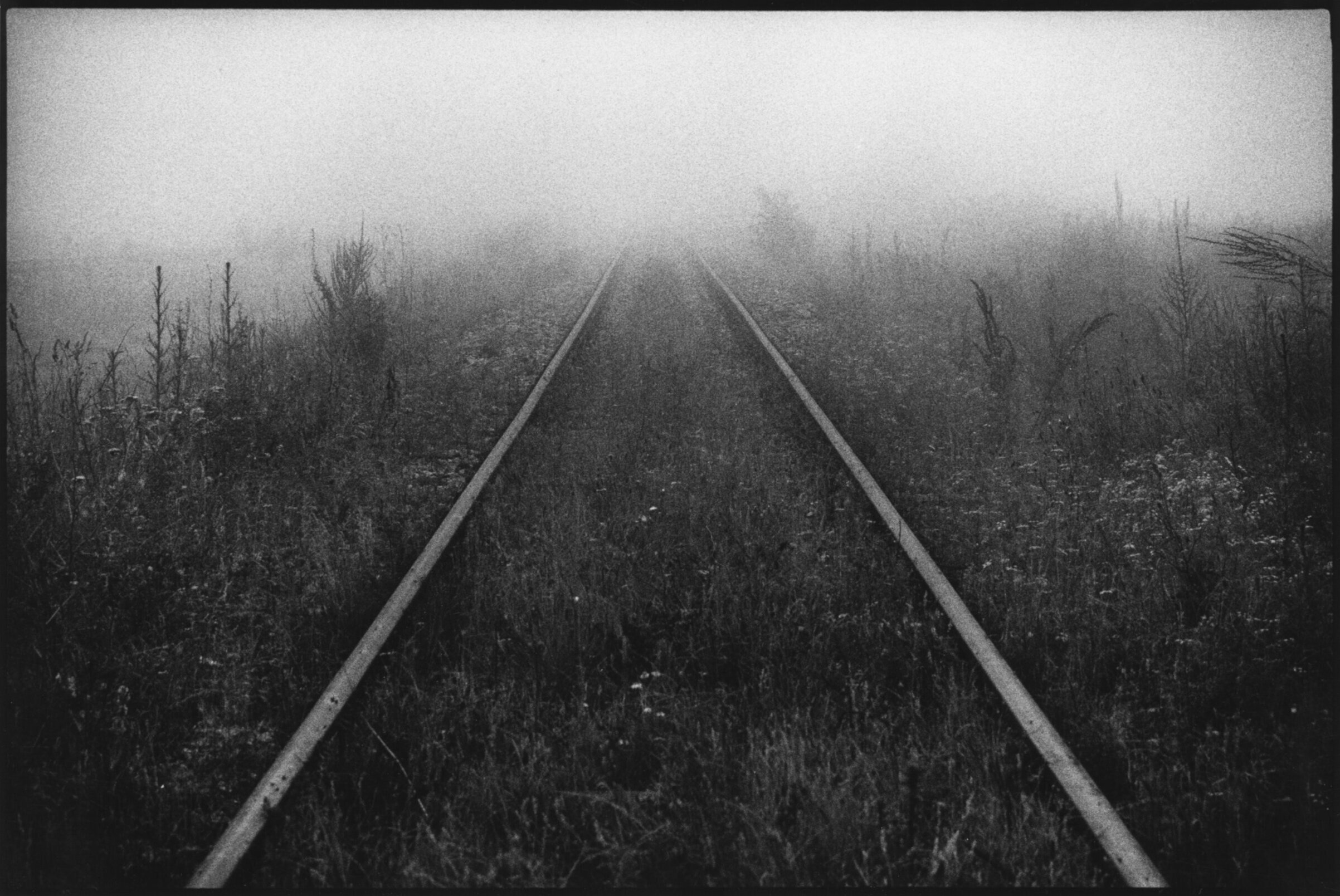
Railway track in Kosovo down which ethnic Albanian Kosovars were deported to Albania by Federal Republic of Yugoslavia authorities.
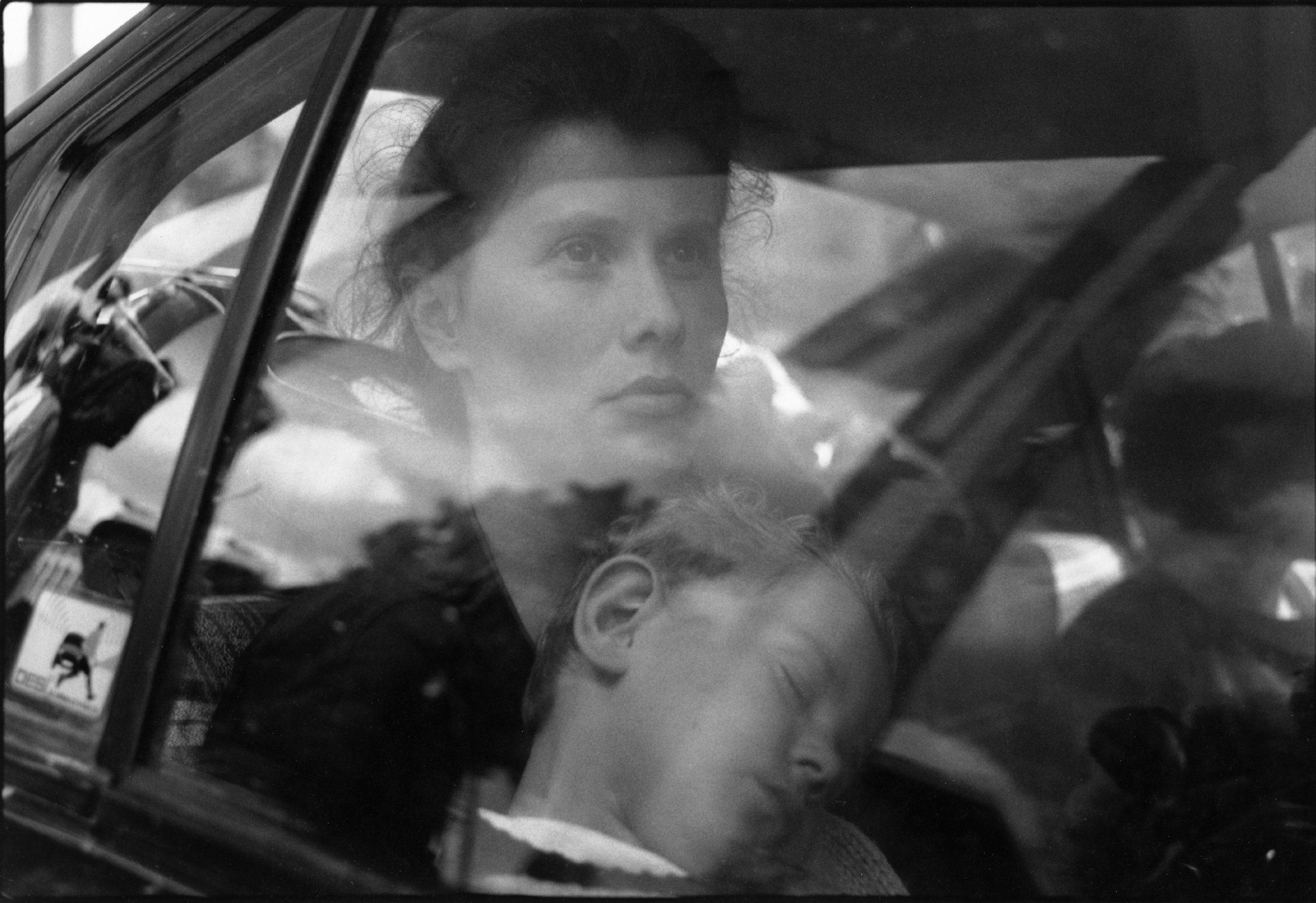
Ethnic Albanian Kosovar refugees cross the Kosovo/Albanian border in March 1999.
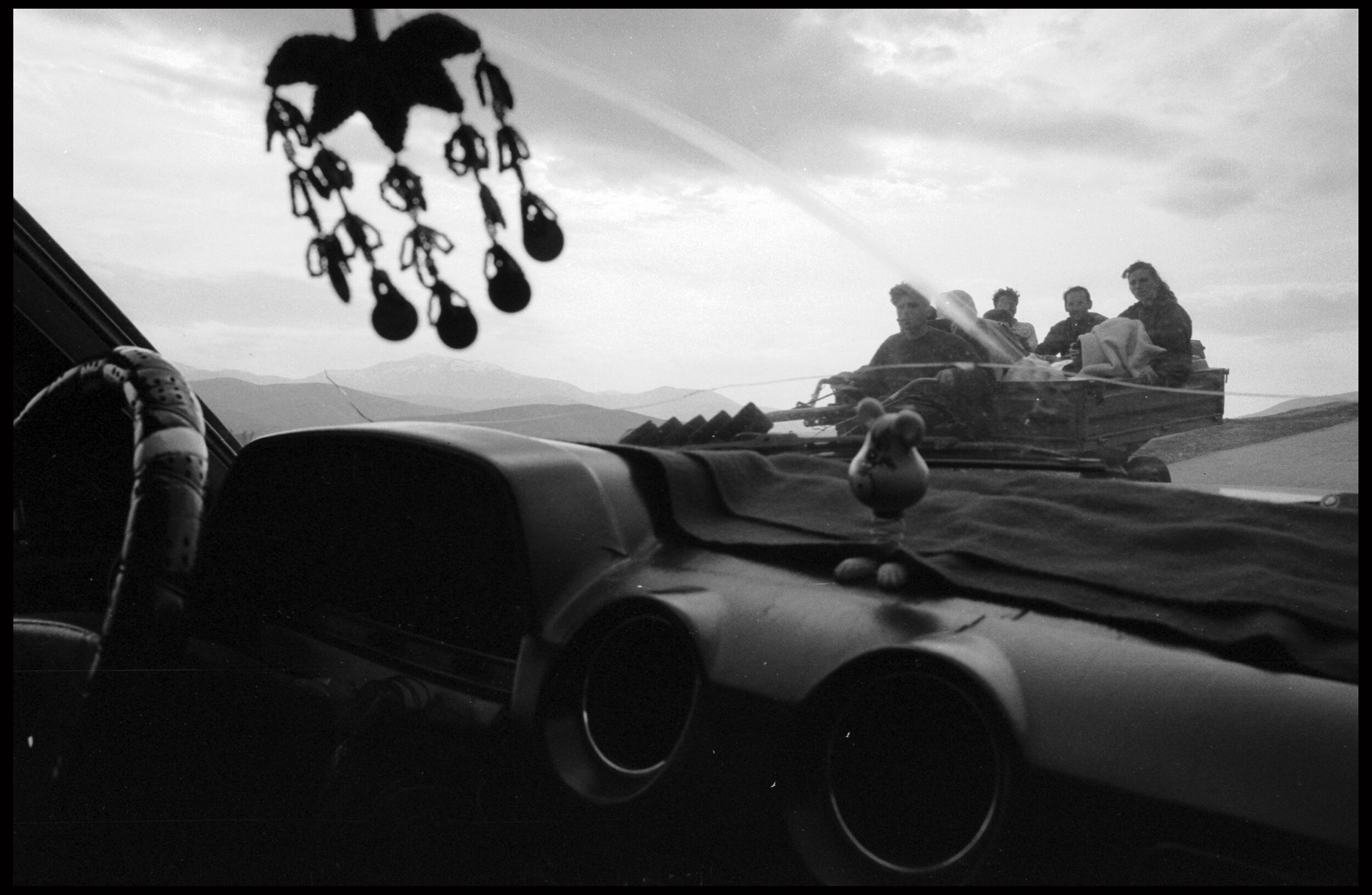
Kosovar refugees en-route to a settlement camp in Kukes Albania.
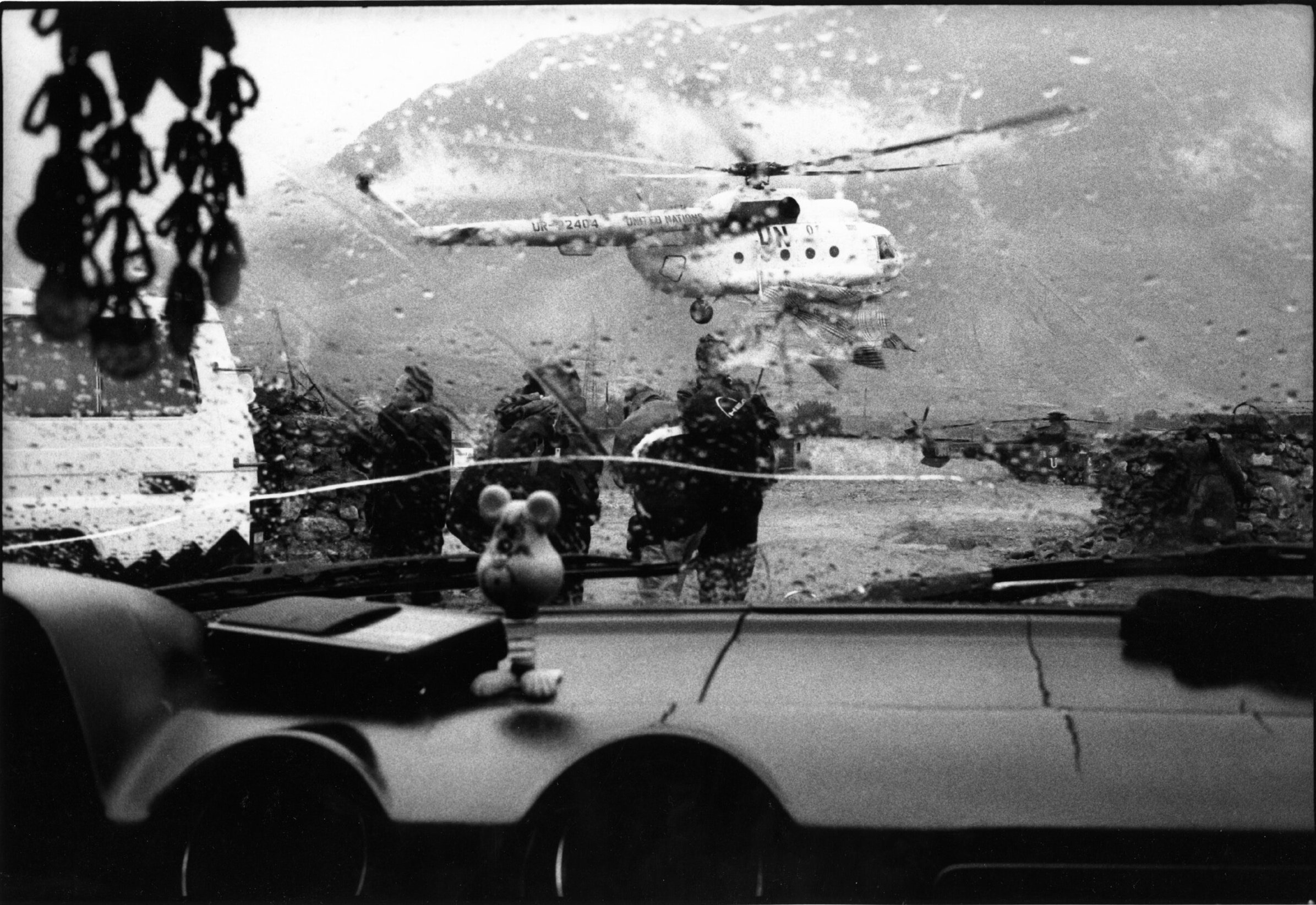
A United Nations helicopter in a resettlement camp in Kukes, Albania.
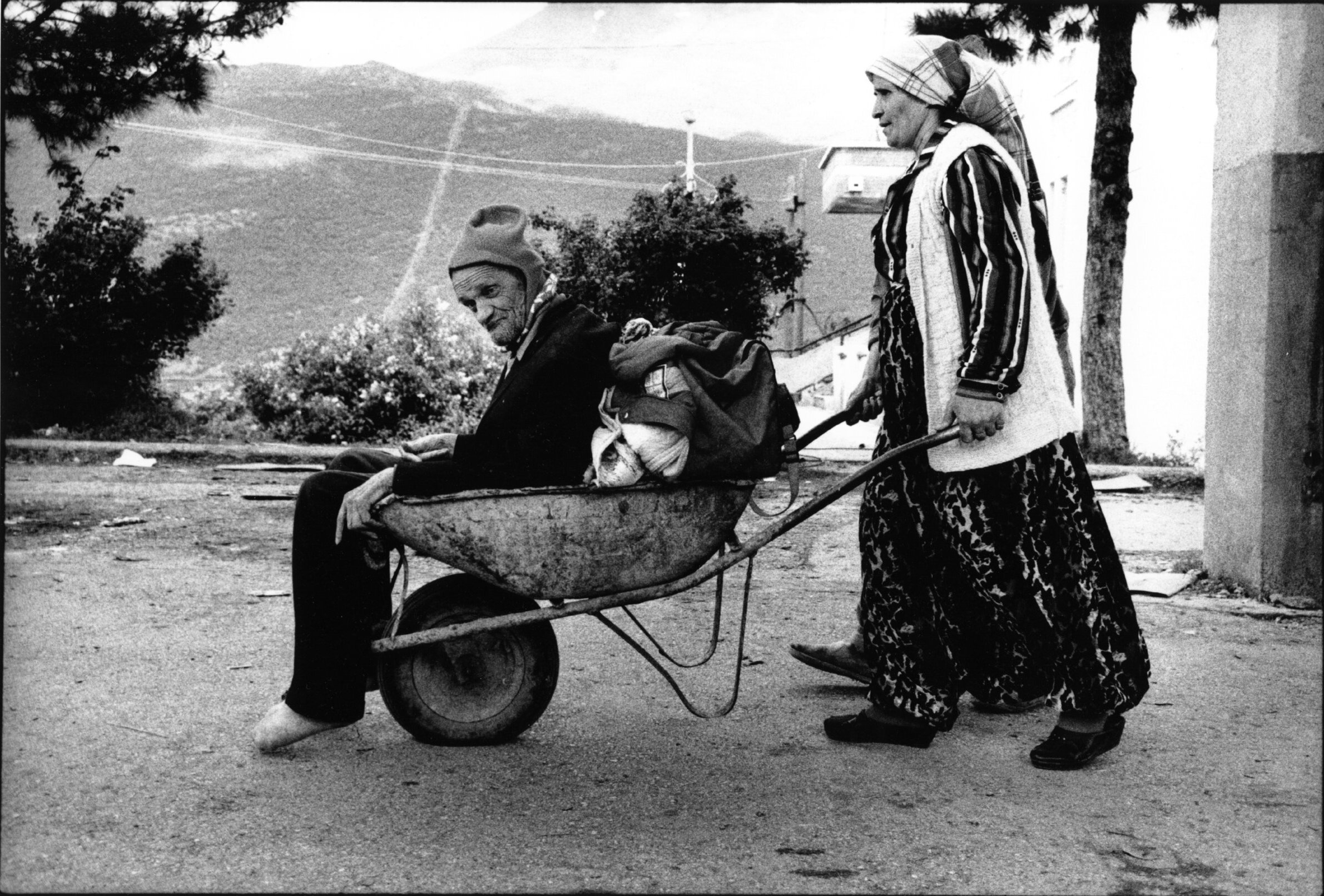
A Kosovar refugee is transported across the border from Kosovo to Albania by his wife.
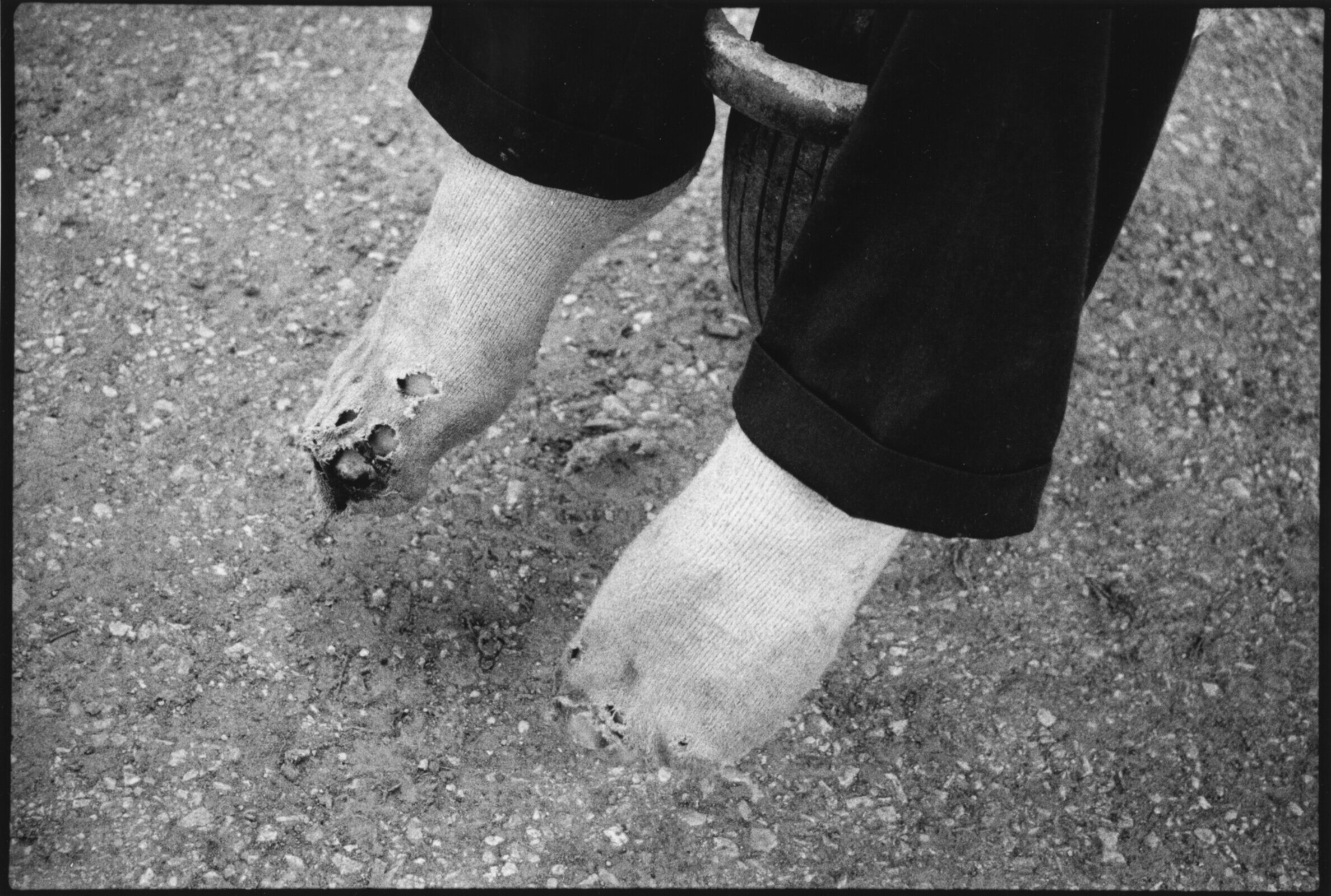
A Kosovar refugee is transported across the border from Kosovo to Albania by his wife.

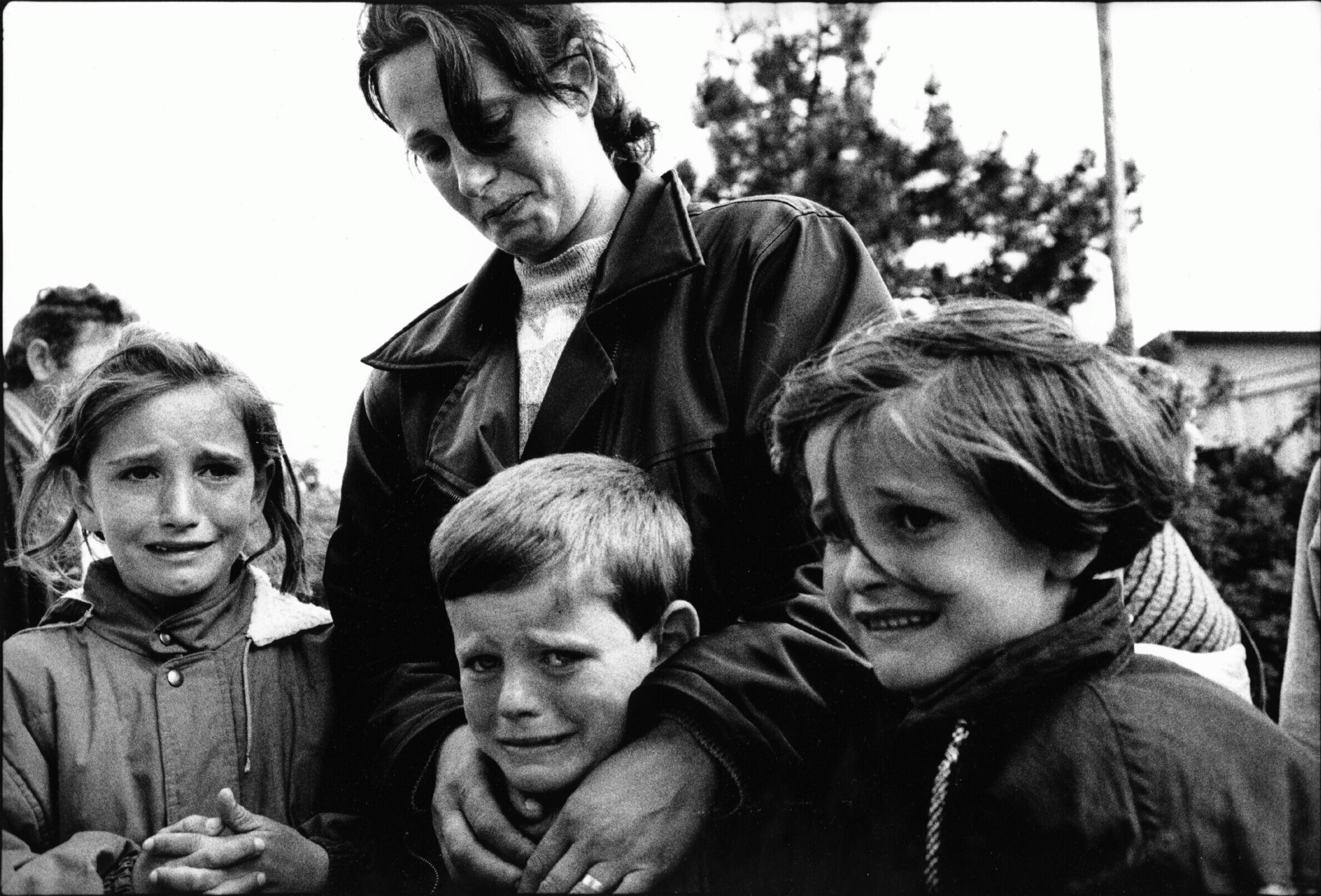
Kosovar children who had just crossed the border into Albania having witnessed the murder of their father a few hours earlier in the village of Meja.
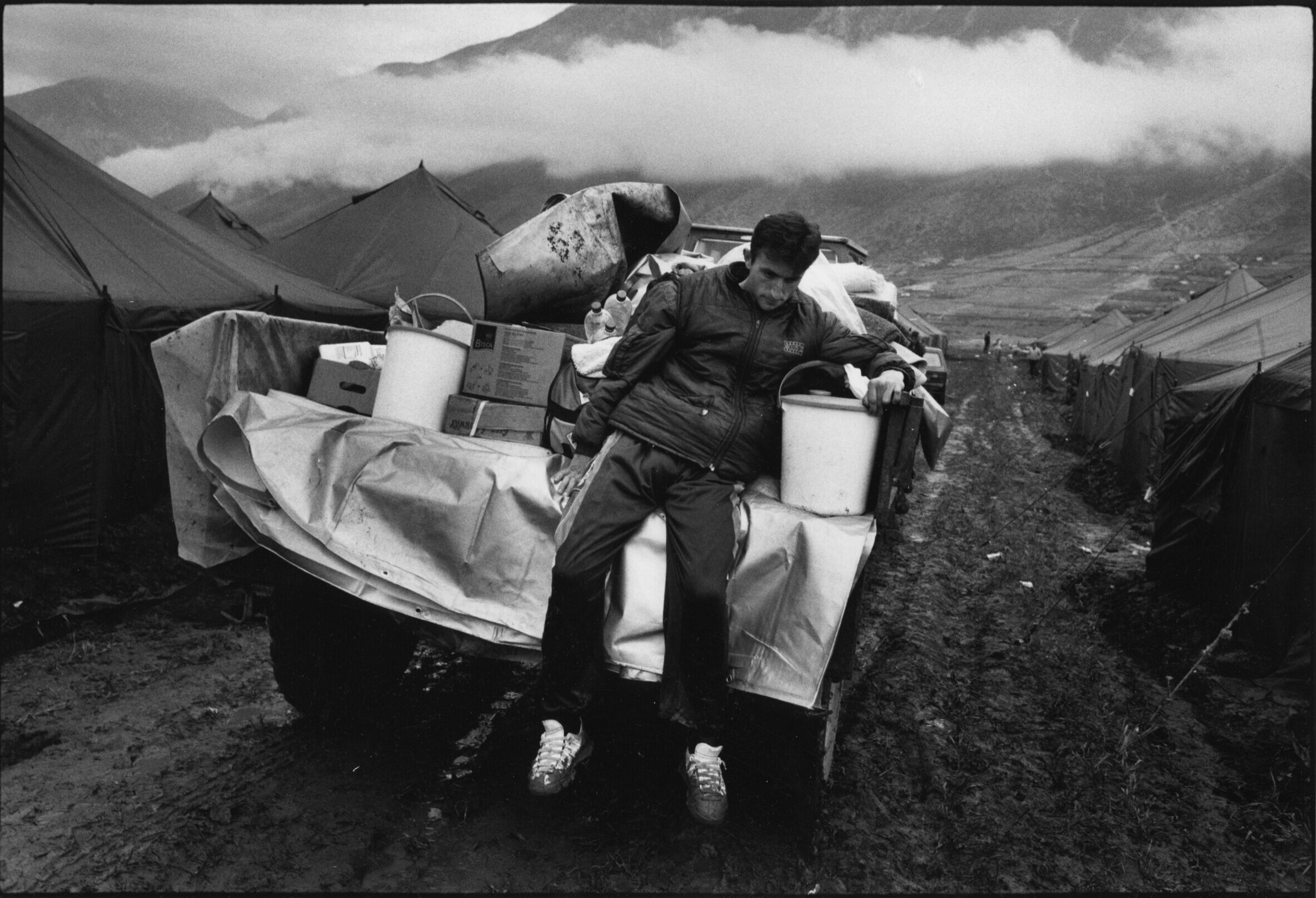
A Kosovar refugee arriving in a camp managed by Medecines-Sans-Frontieres in Kukes, Albania.
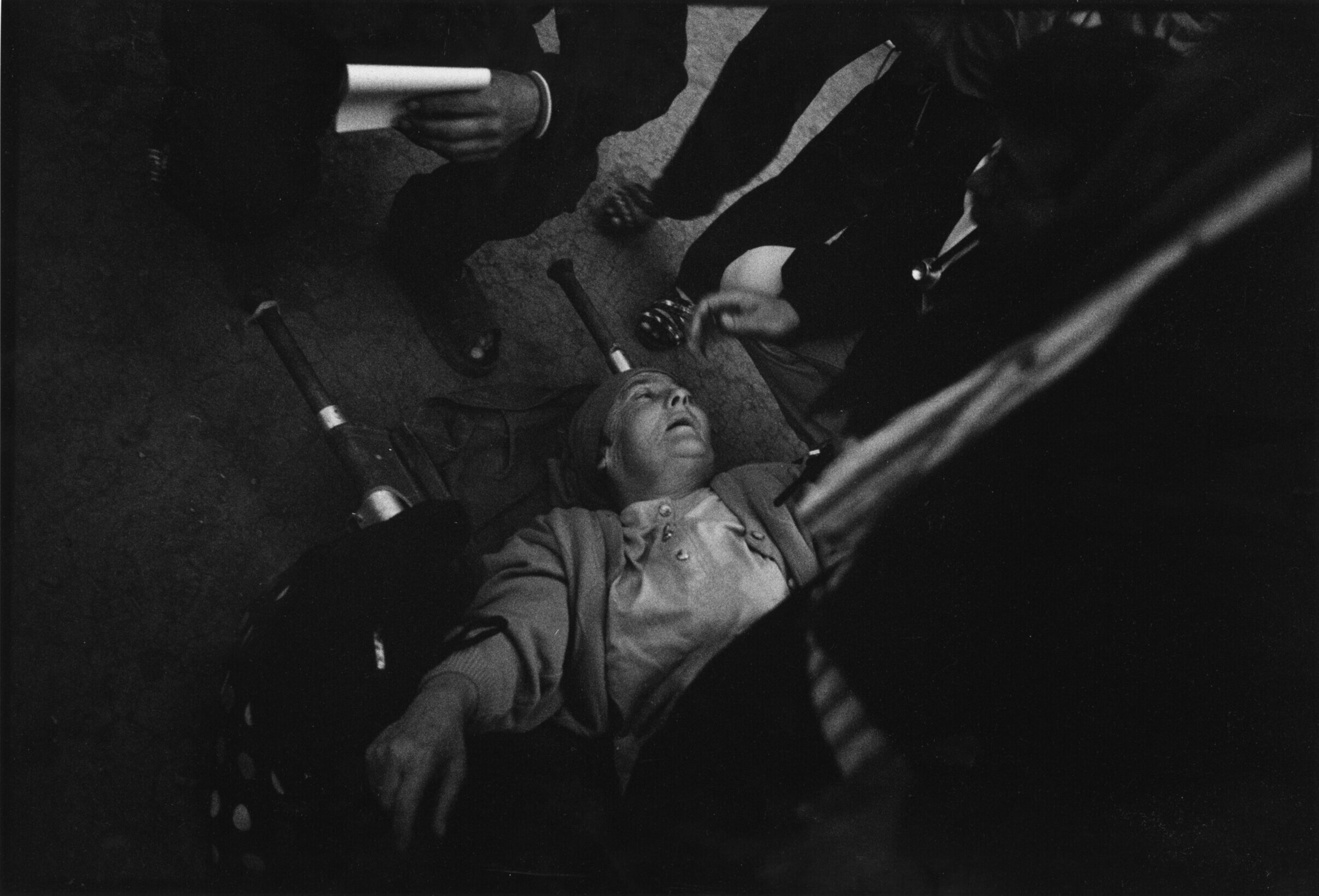
A female Kosovar refugee collapses after making the journey from Kosovo to Stankovic refuge camp in Macedonia after several hours without food or water.

Kosovar refugees bathing and washing clothes near a resettlement camp in Kukes, Albania.
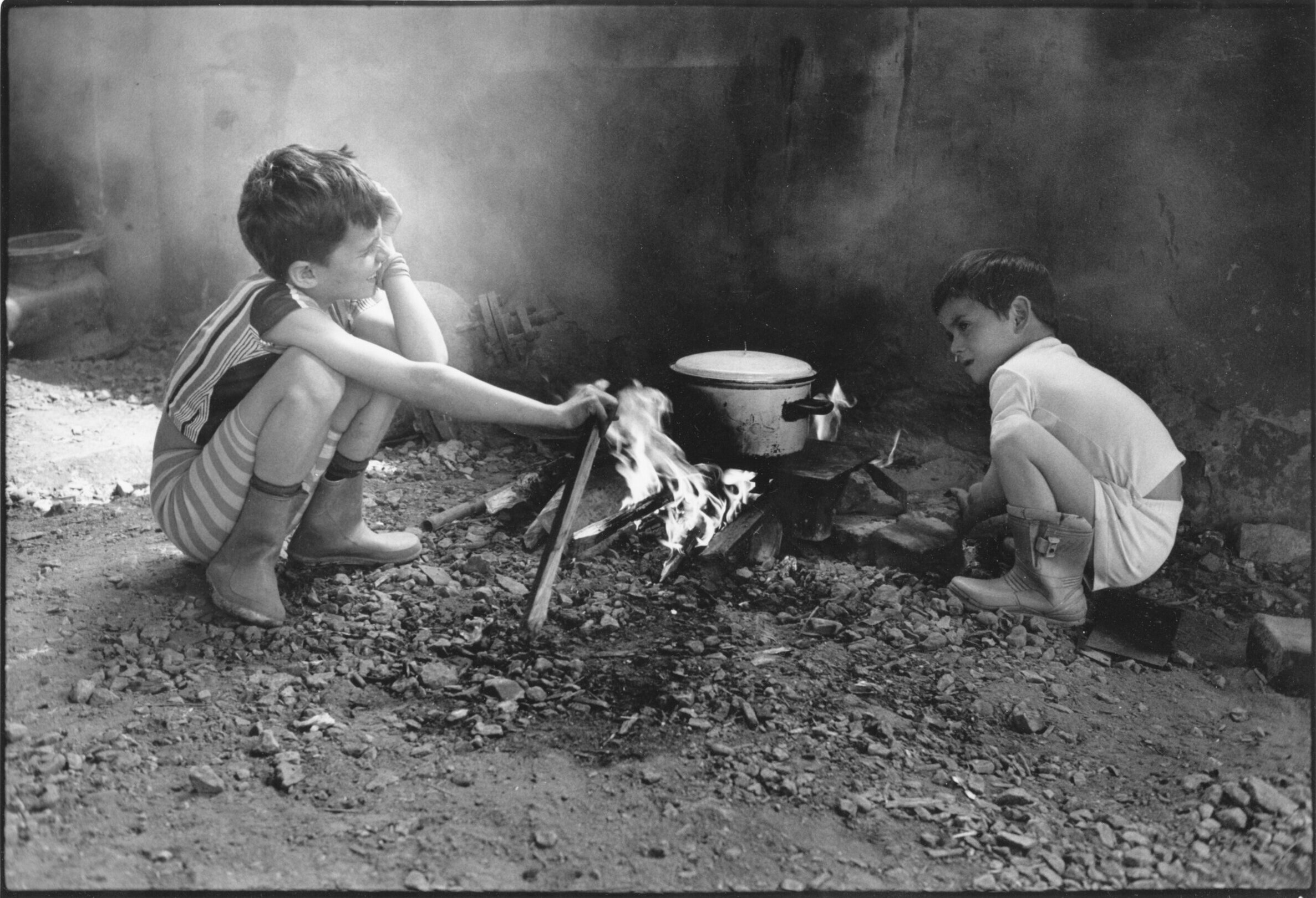
Kosovar refugees cooking in an abandoned warehouse near a refugee camp in Kukes, Albania.
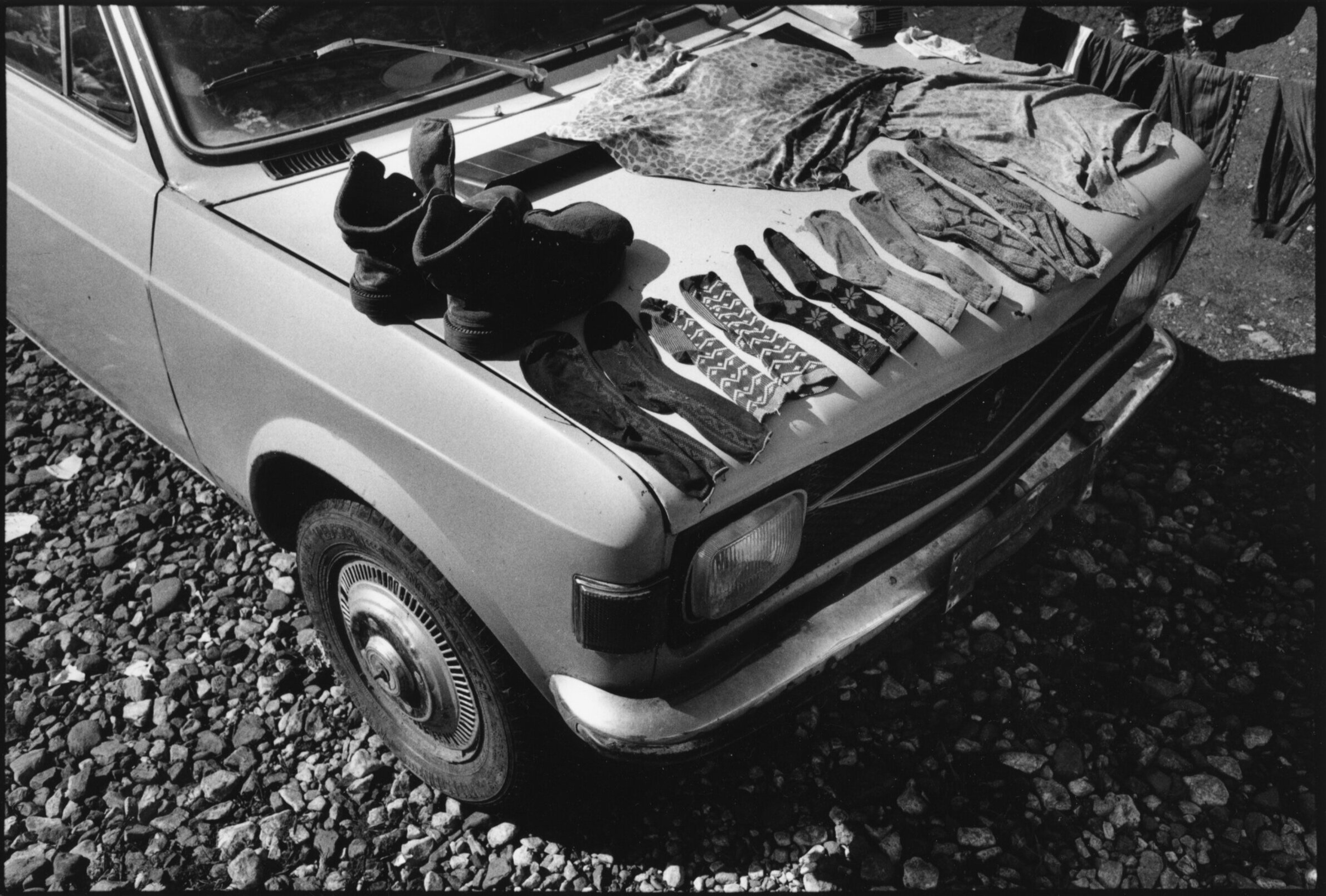
Refugee laundry drying on a Yugo car in the grounds of a potato processing factory near a refugee camp in Kukes, Albania.
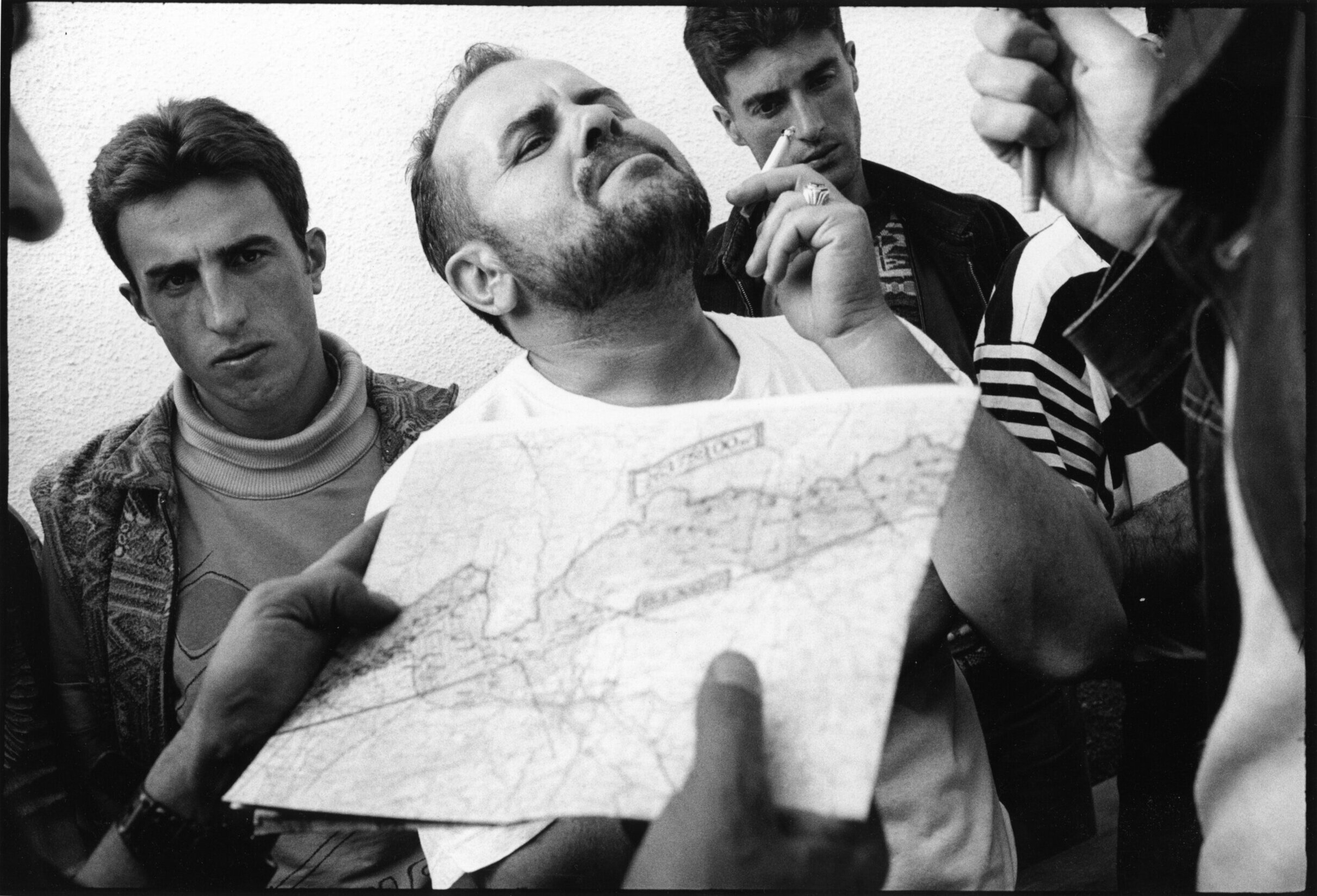
Kosovar refugees who had just crossed into Macedonia on foot show Gilles and I the route they took.
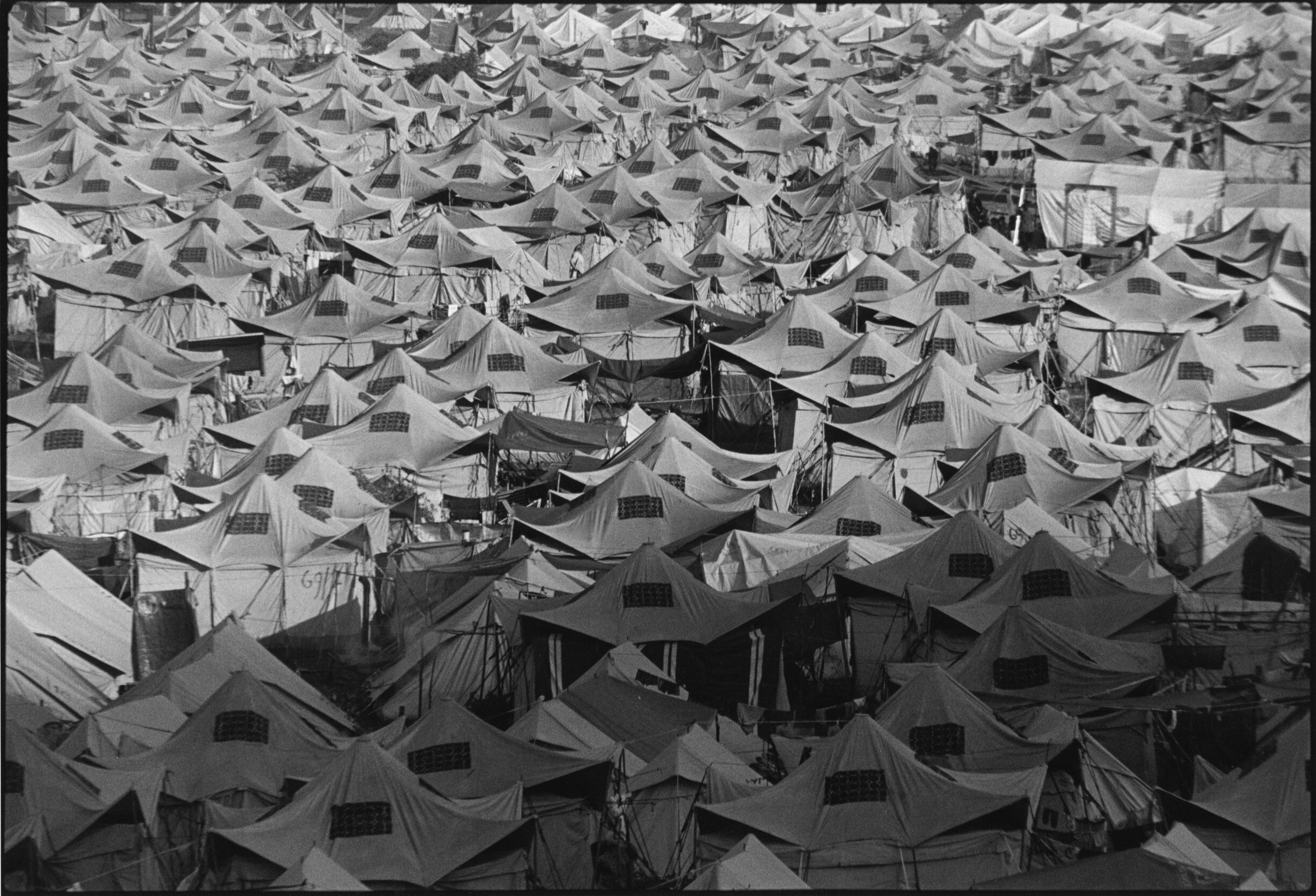
Cegrane refugee camp, Macedonia.
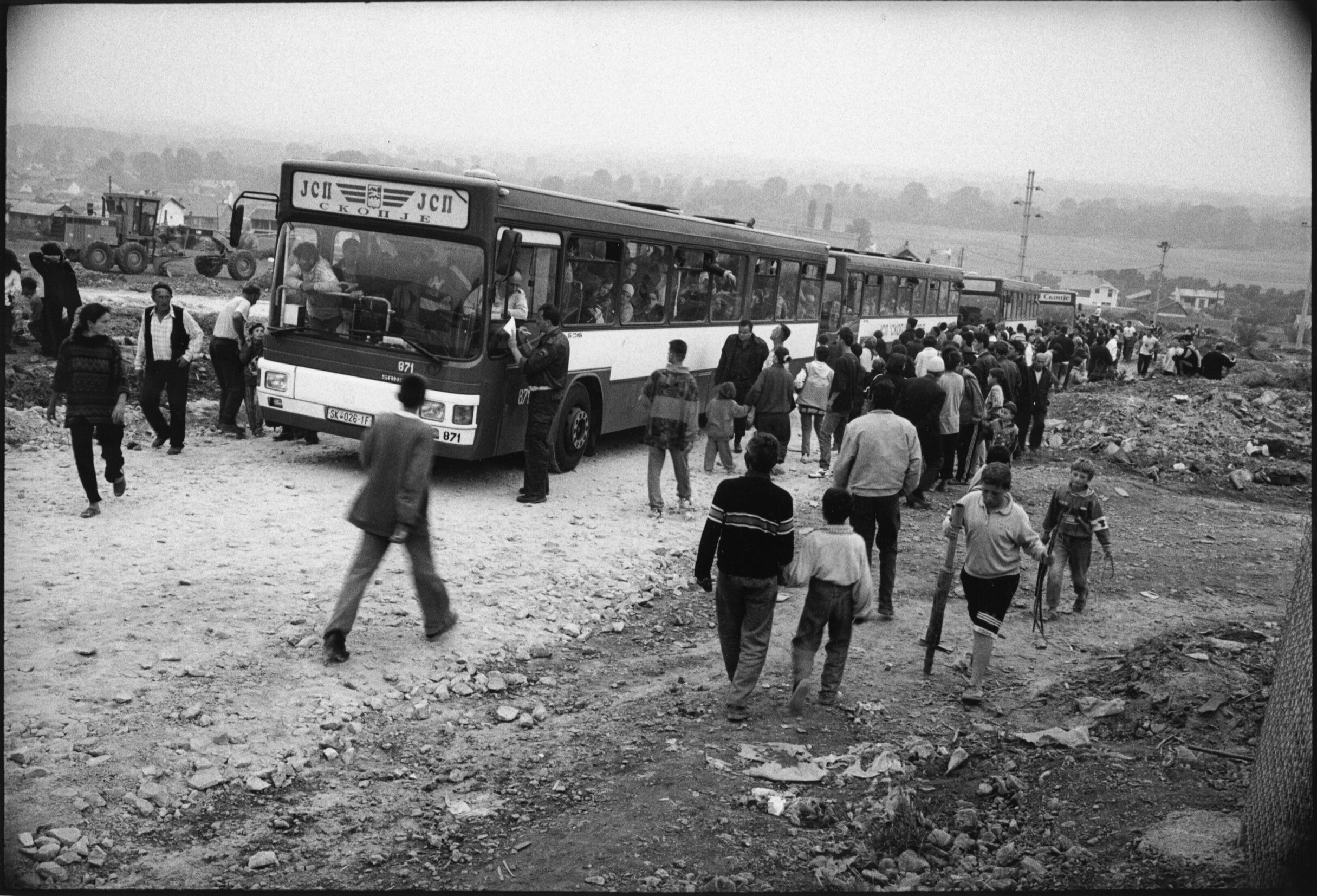
New arrivals at Cegrane refugee camp, Macedonia

Newly arrived refugees in Cegrane refugees camp search through ICRC lists for the name of family and friends who have been given asylum in other countries.

Refugees clamour for the morning edition of the Kosovar newspaper Koha Dittore which was printed in exile in Stankovic refugee camp, Macedonia.
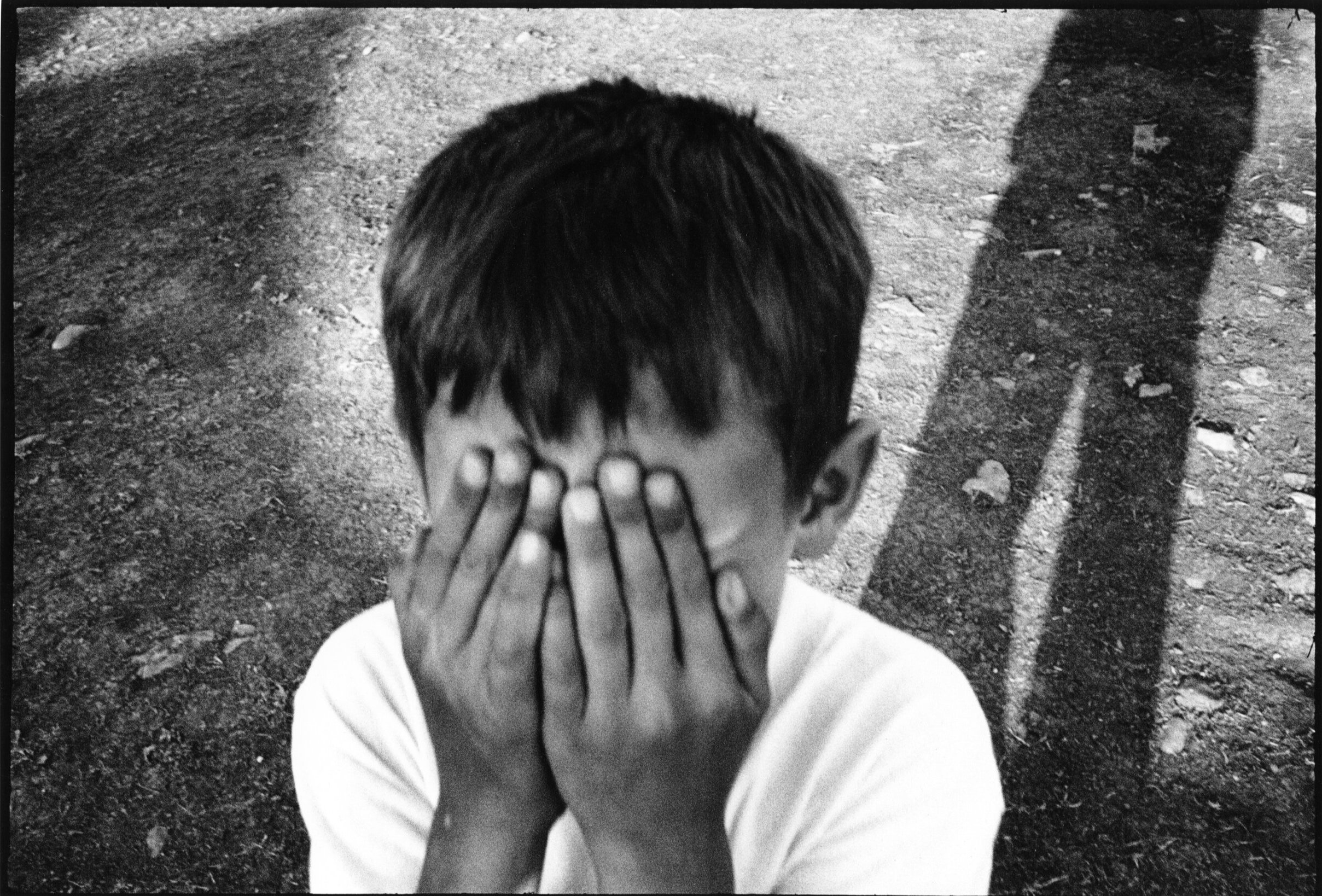
A boy playing hide and seek in Cegrane refugee camp, Macedonia.



















Persecution
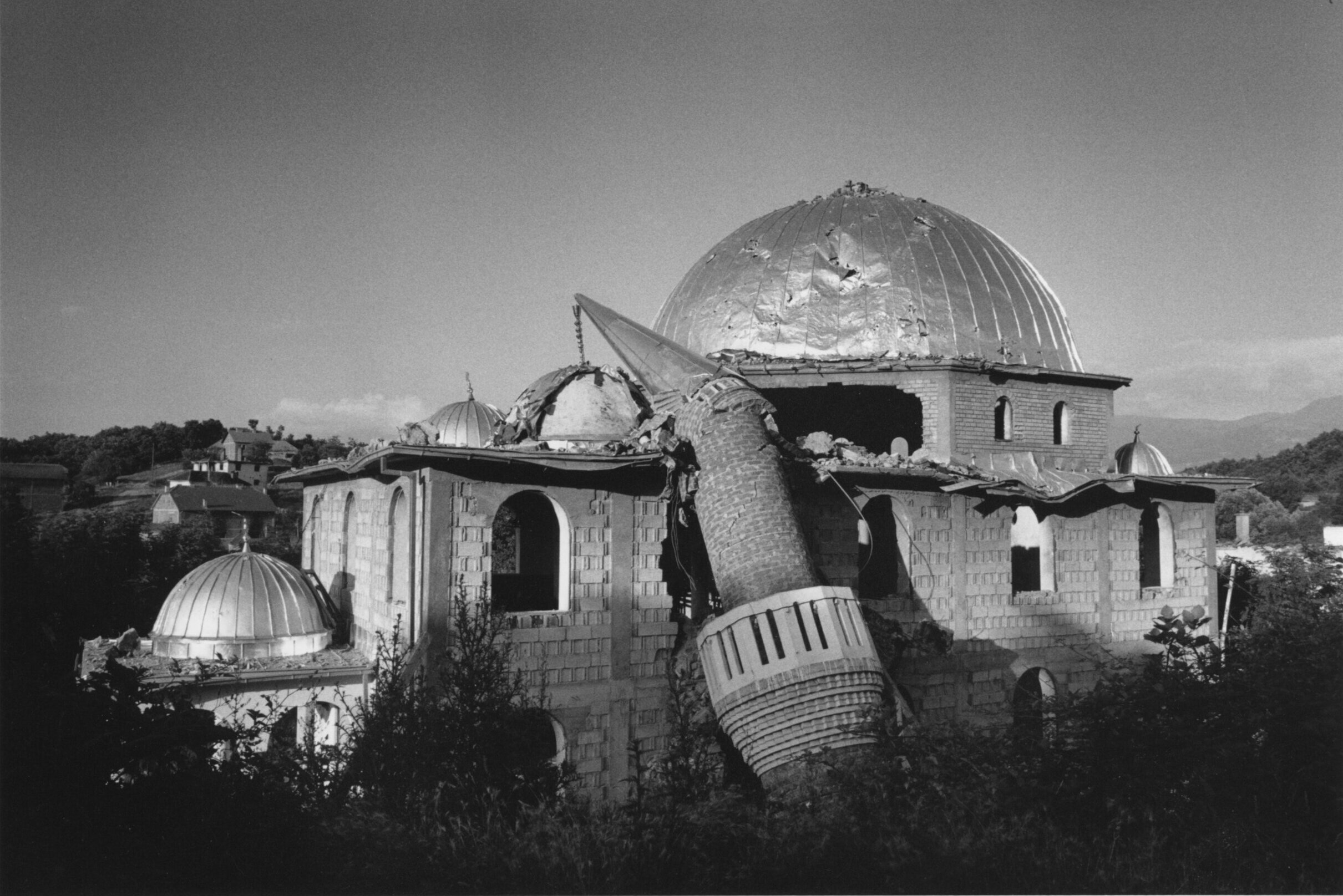
A mosque destroyed by Serb military or paramilitary forces on the road between Prizren and Djakove. Kosovo.
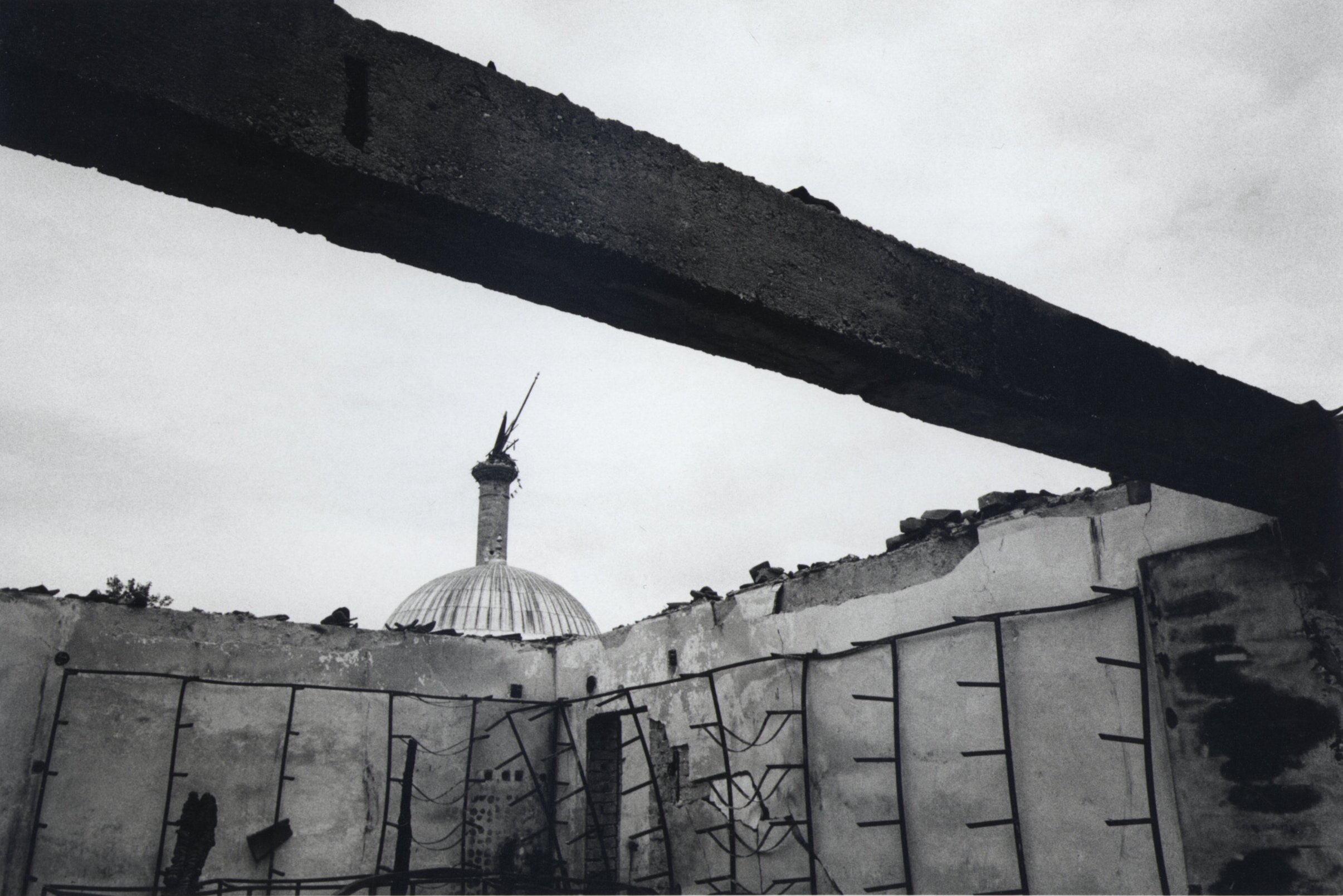
The historical Ottoman centre of Djakove, leveled by Serb military and paramilitary forces shortly after NATO commenced their bombing campaign. Kosovo.
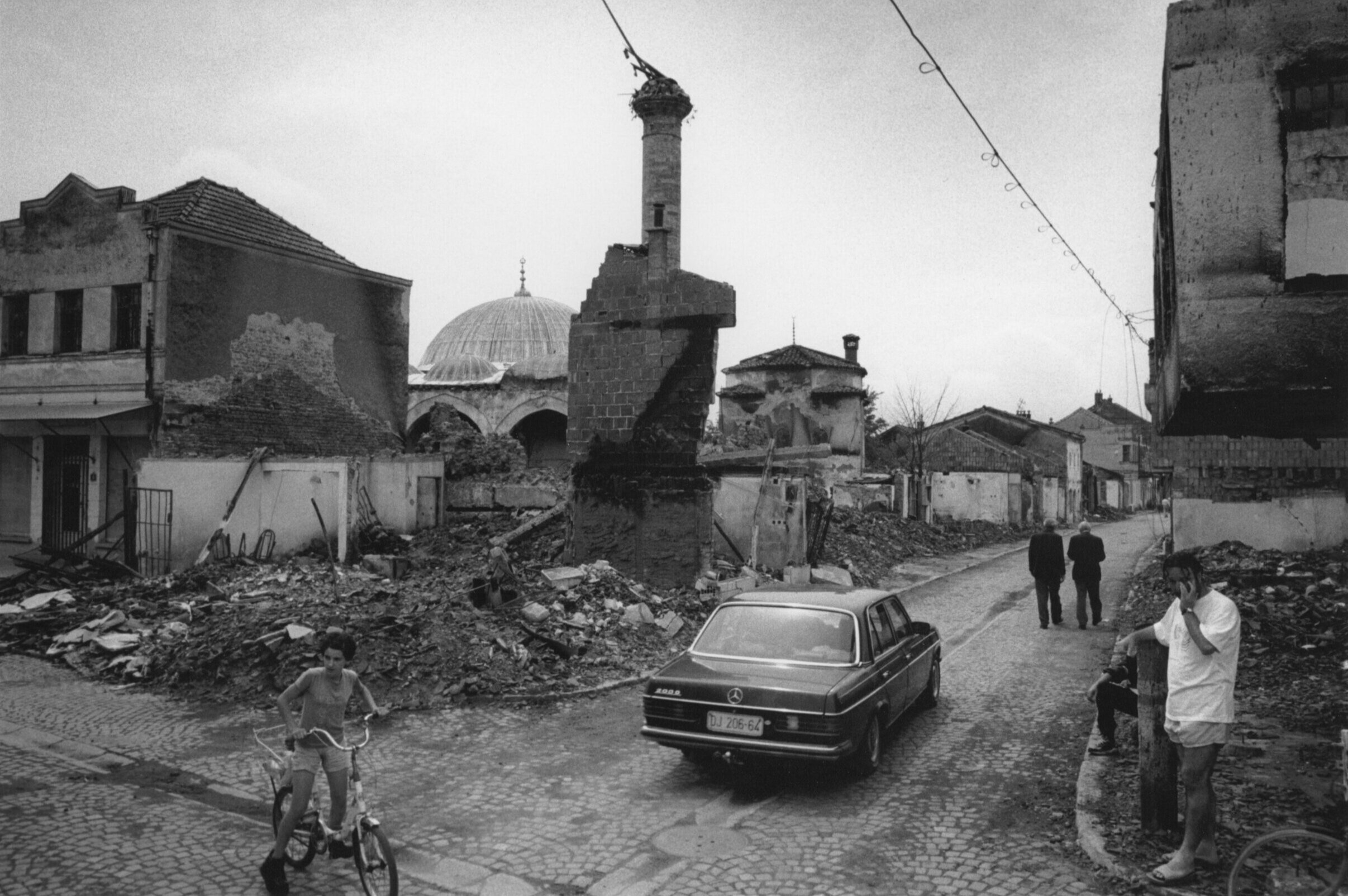
The historical Ottoman centre of Djakove, leveled by Serb military and paramilitary forces shortly after NATO commenced their bombing campaign. Kosovo.
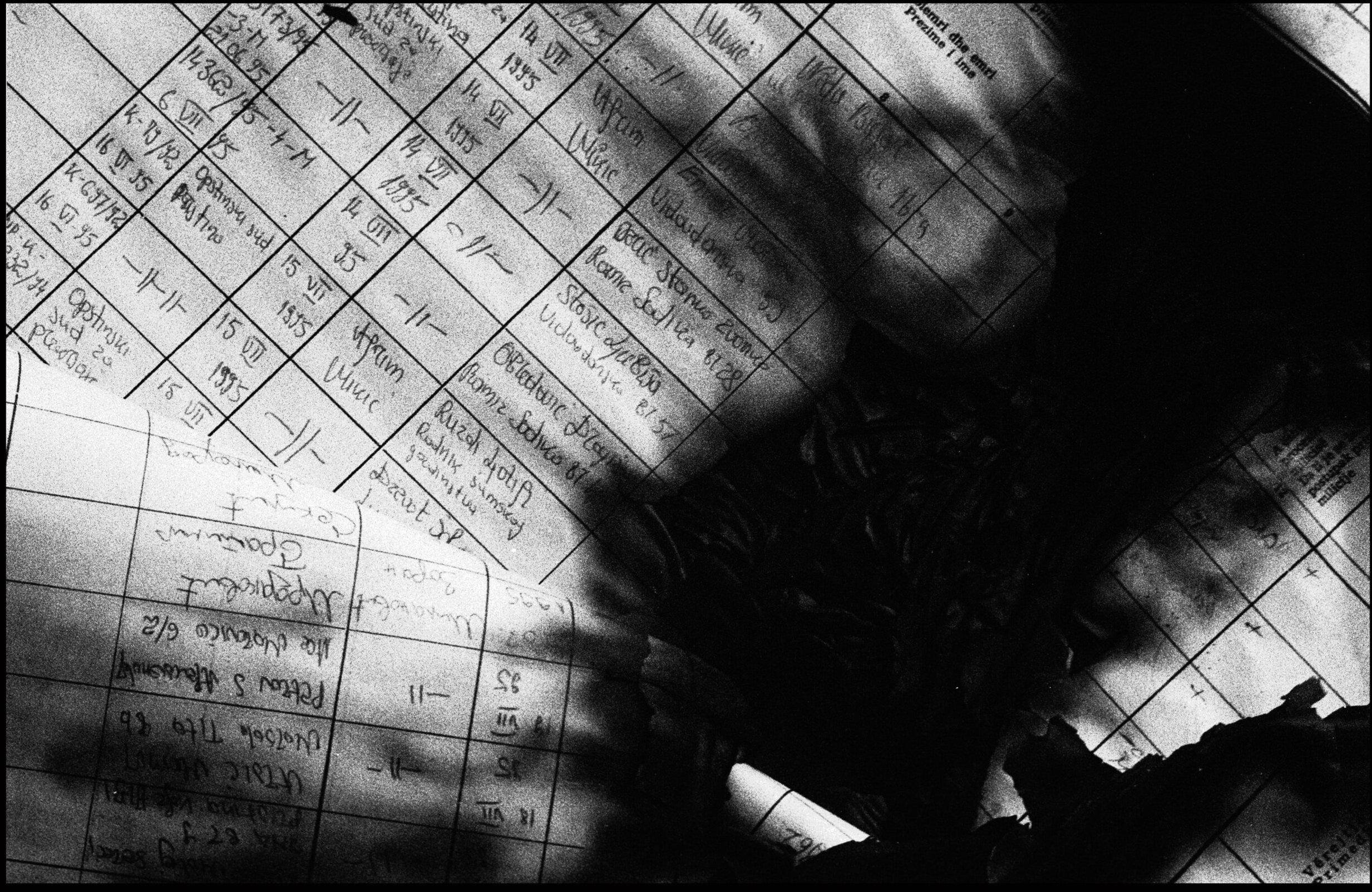
Albanian Kosovar records destroyed by Serb military or paramilitary forces in Prizren police station. Kosovo.
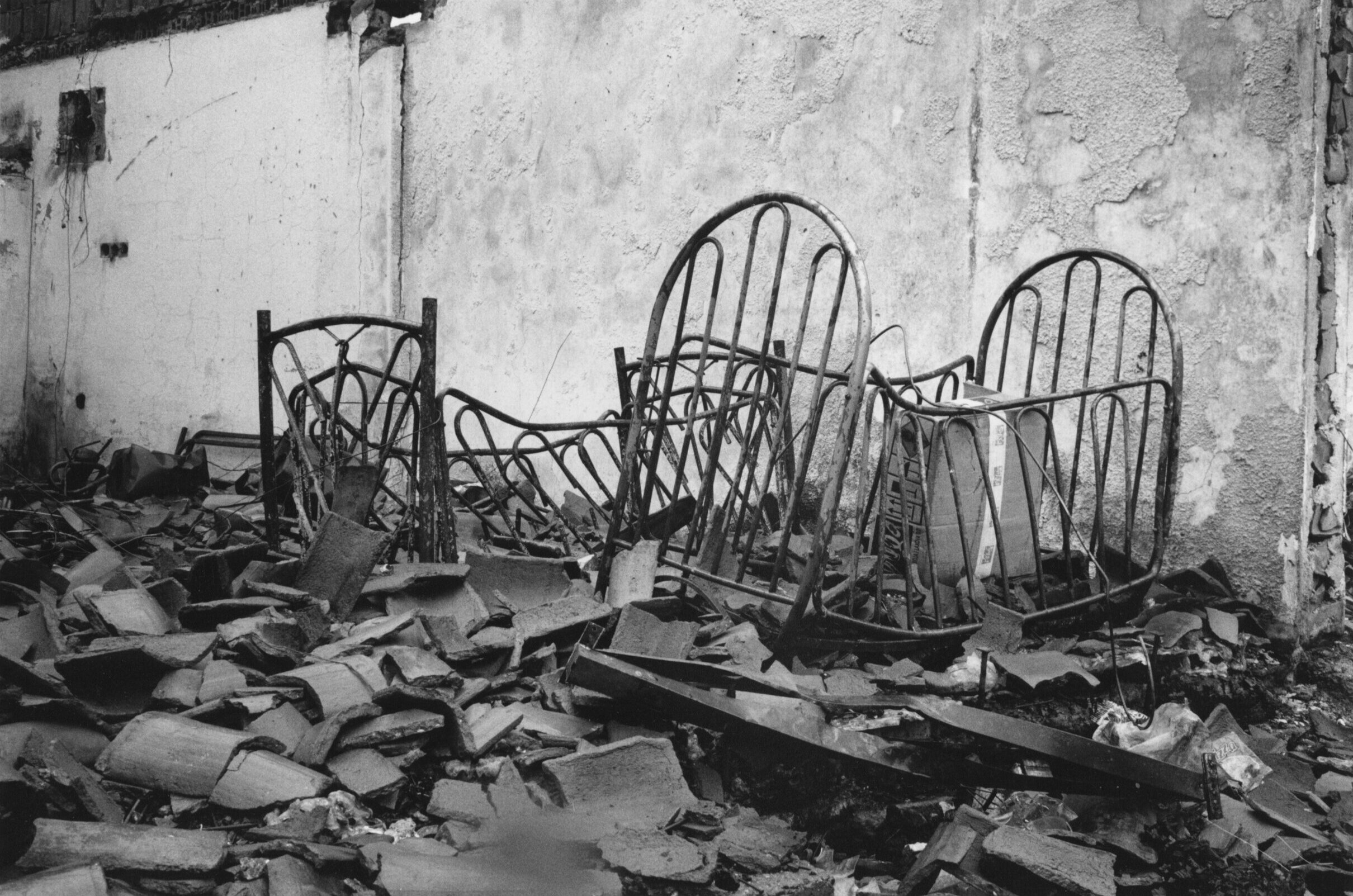
The historical Ottoman centre of Djakove, leveled by Serb military and paramilitary forces shortly after NATO commenced their bombing campaign. Kosovo.

The Albanian quarter of Peja, destroyed by Serb military or paramilitary forces shortly after NATO commenced their bombing campaign. Kosovo. Gilles and I saw this horse and donkey over several weeks as we crisscrossed the area. The first time we saw them was a moment after I had asked Gilles why every Magnum photographer had a photograph of a white horse in a distressed environment in their portfolio. Gilles did not photograph this horse.
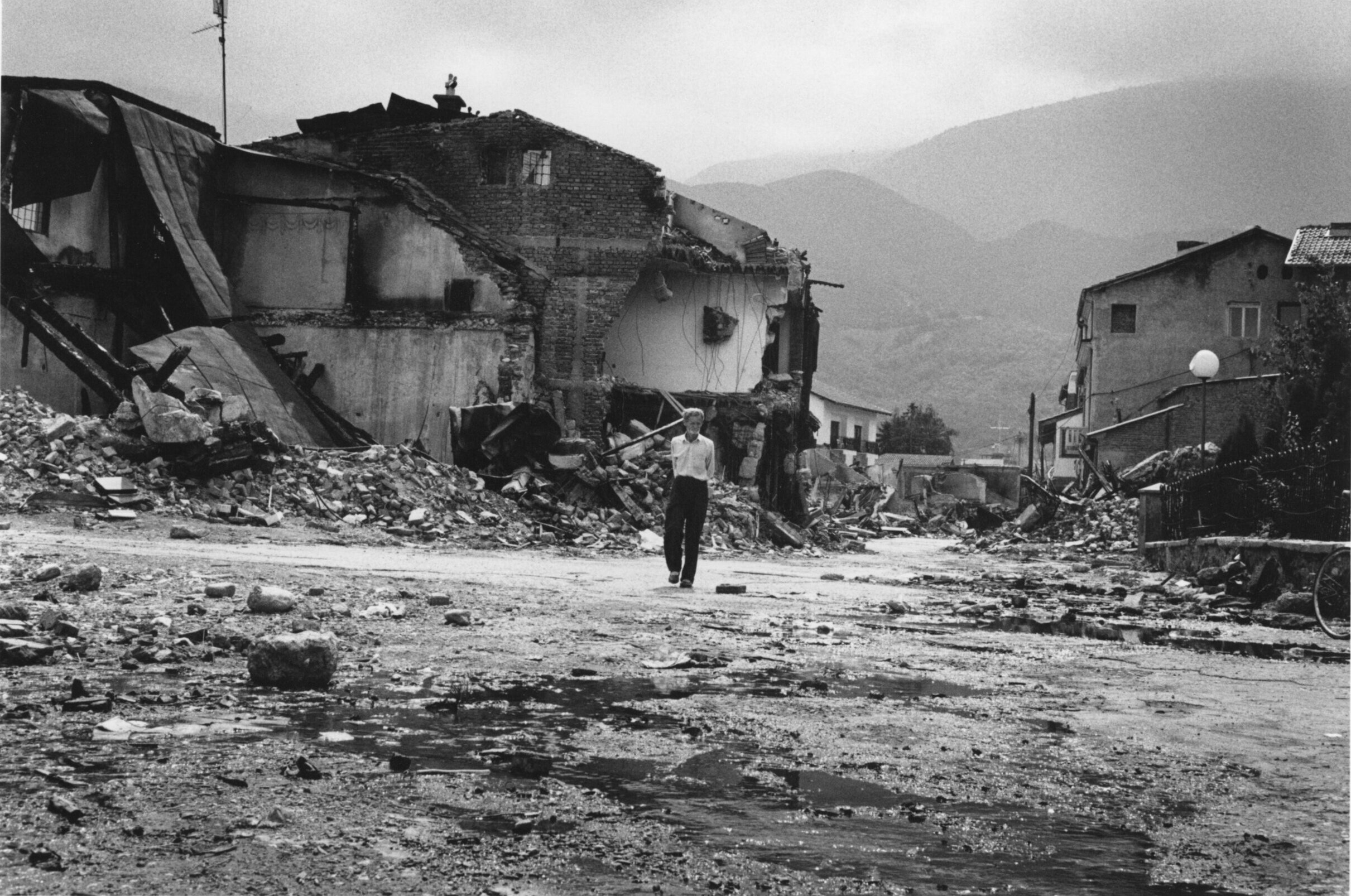
The Albanian quarter of Peja, destroyed by Serb military or paramilitary forces shortly after NATO commenced their bombing campaign. Kosovo.
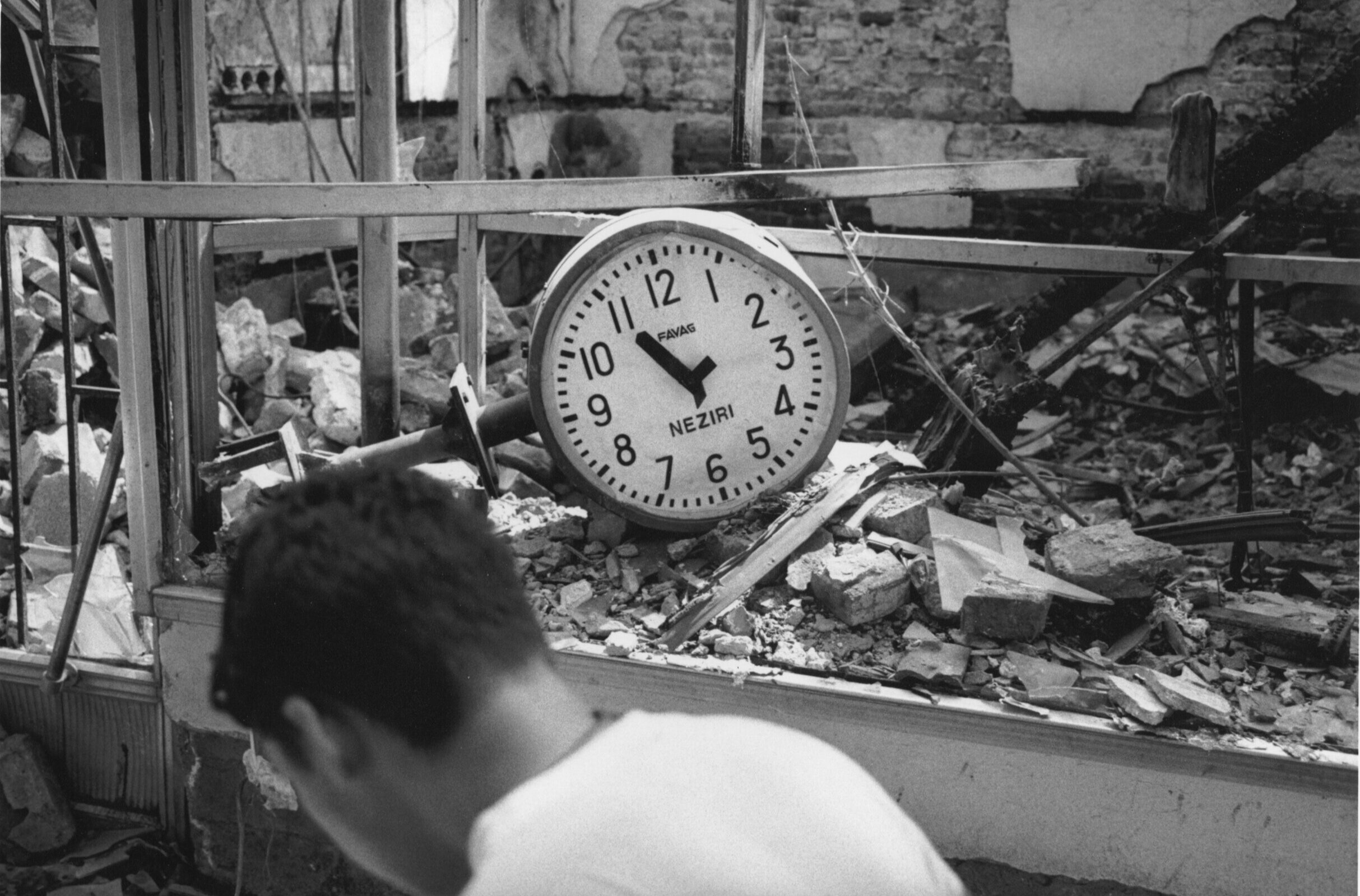
The historical Ottoman centre of Djakove, leveled by Serb military and paramilitary forces shortly after NATO commenced their bombing campaign. Kosovo.








Murder
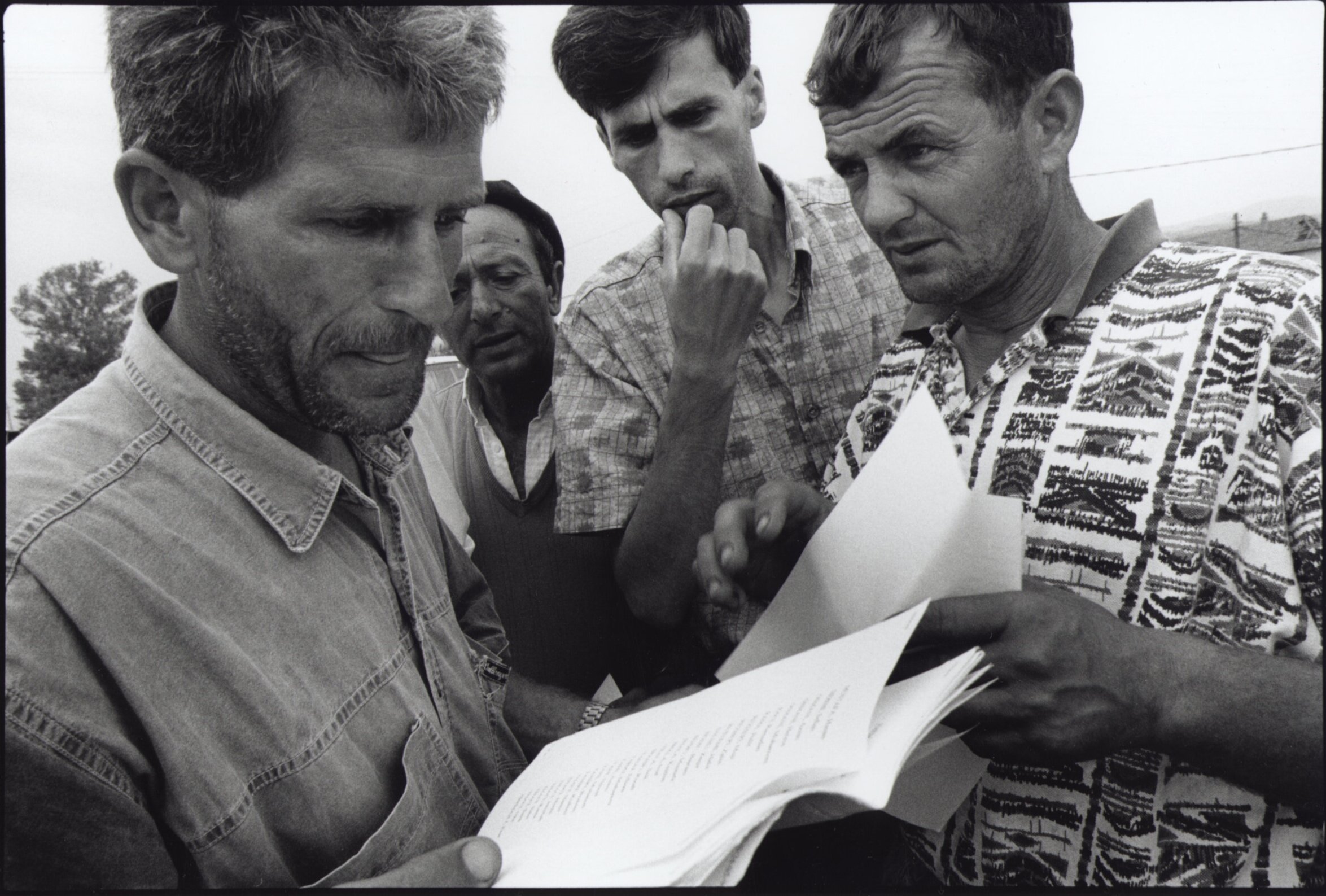
I asked these men - who came to assist me while I was looking at a map - if they could help me identify a specific place mentioned in the indictment of Milosevic where a number of civilians had been murdered. The men were all from the village of Velika Krusha, and had returned to locate missing family members. They asked to see the copy of the indictment I was carrying so they could help me. One of the men called Naser Mazreku looked slowly at the indictment and was watched closely by his friends. It was a fraught and silent minute. What I didn't know or anticipate was that in the incitement were the names of everyone in the village killed by the Serbs which included Naser Mazrekus family who were shot and burned in a house 50 meters from where we were standing.
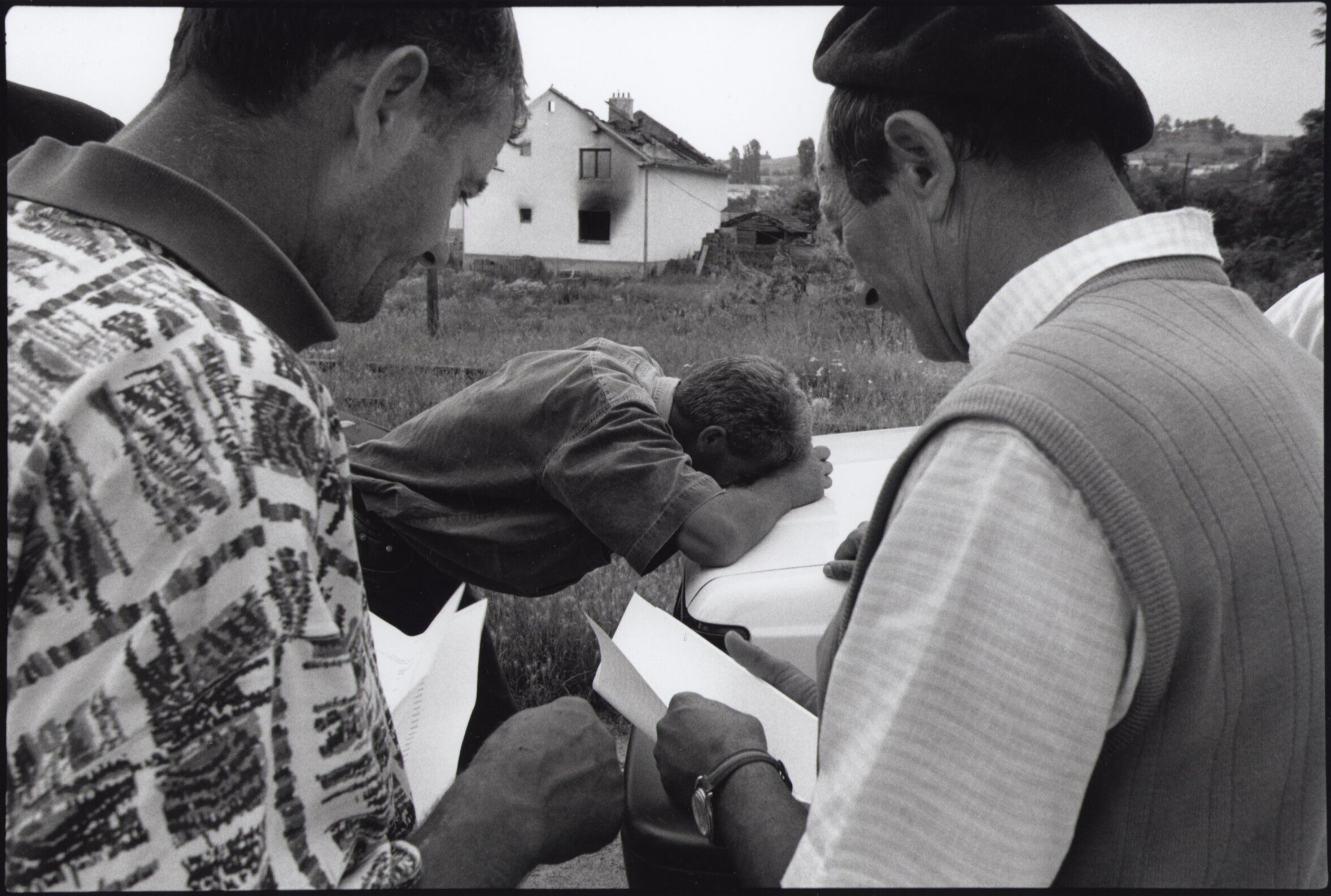
The NATO War in Kosovo, Yugoslavia. April to June 1999. Photograph by Gary Knight / VII
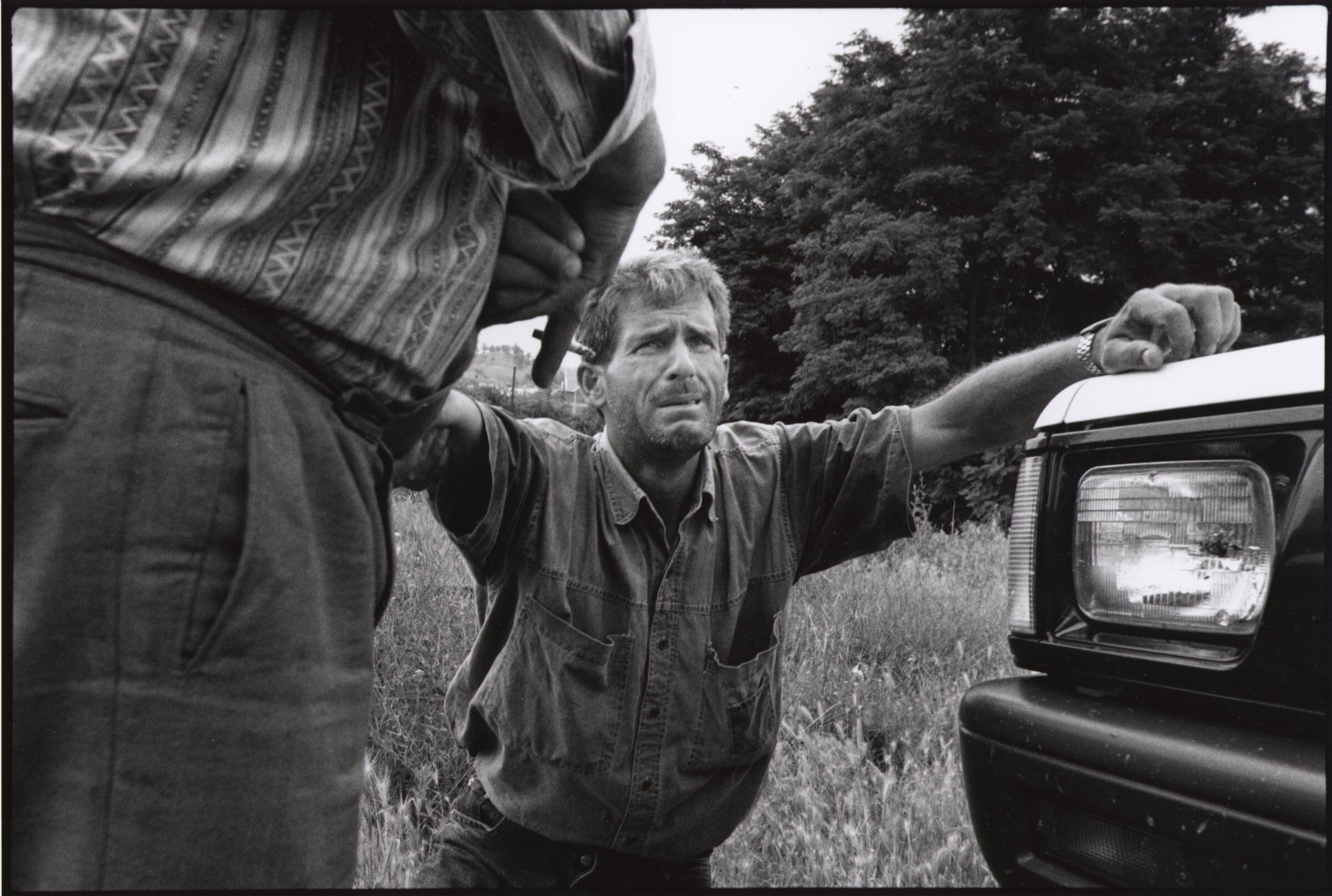
I asked these men - who came to assist me while I was looking at a map - if they could help me identify a specific place mentioned in the indictment of Milosevic where a number of civilians had been murdered. The men were all from the village of Velika Krusha, and had returned to locate missing family members. They asked to see the copy of the indictment I was carrying so they could help me. One of the men called Naser Mazreku looked slowly at the indictment and was watched closely by his friends. It was a fraught and silent minute. What I didn't know or anticipate was that in the incitement were the names of everyone in the village killed by the Serbs which included Naser Mazrekus family who were shot and burned in a house 50 meters from where we were standing.
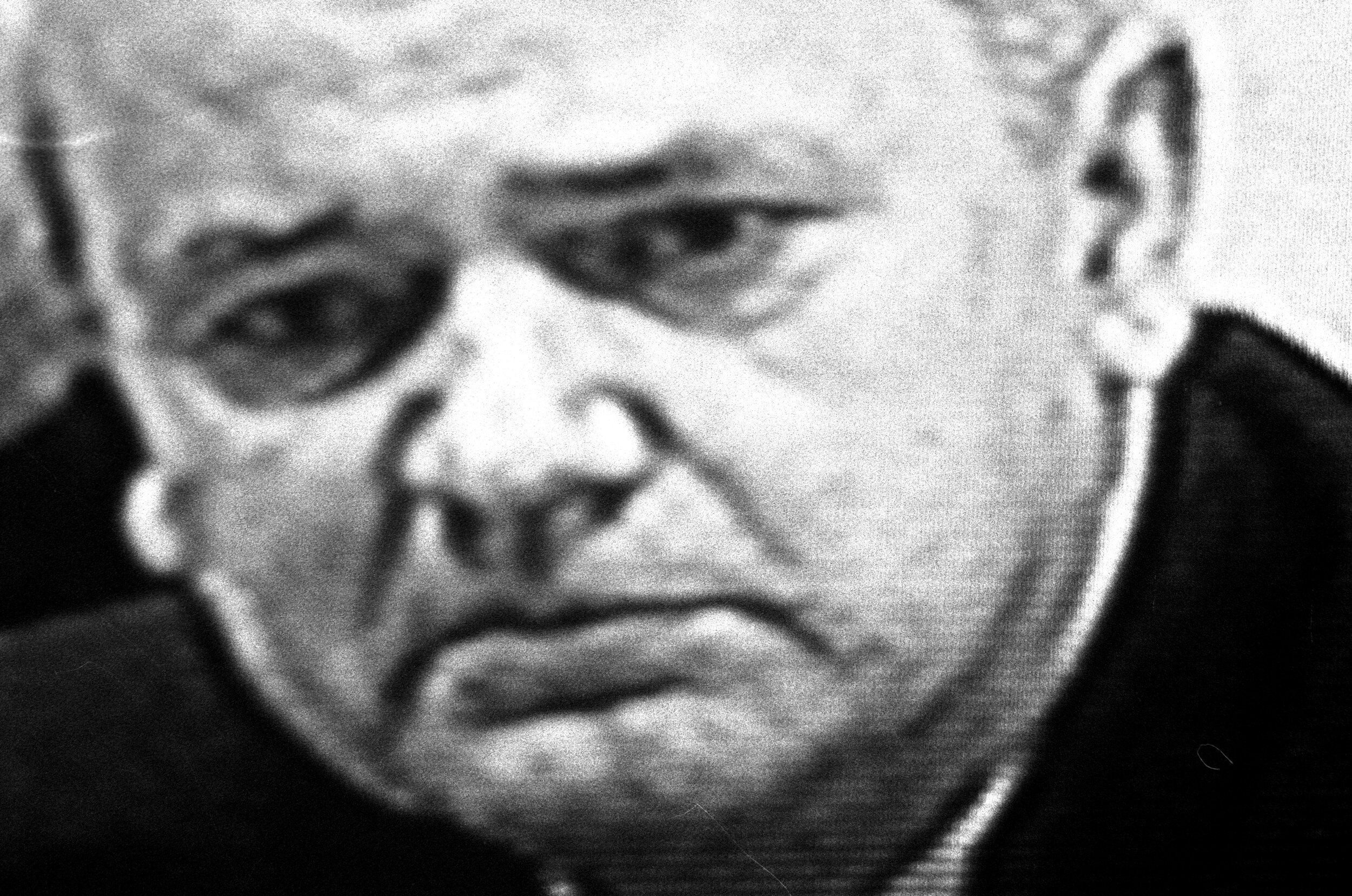
Former President Slobodan Milosevic seen on closed circuit television during his trial for war crimes at the International Criminal Tribunal for Yugoslavia at the The Hague. Netherlands.

Graffiti on a roadside wall between Prizren and Pristina.
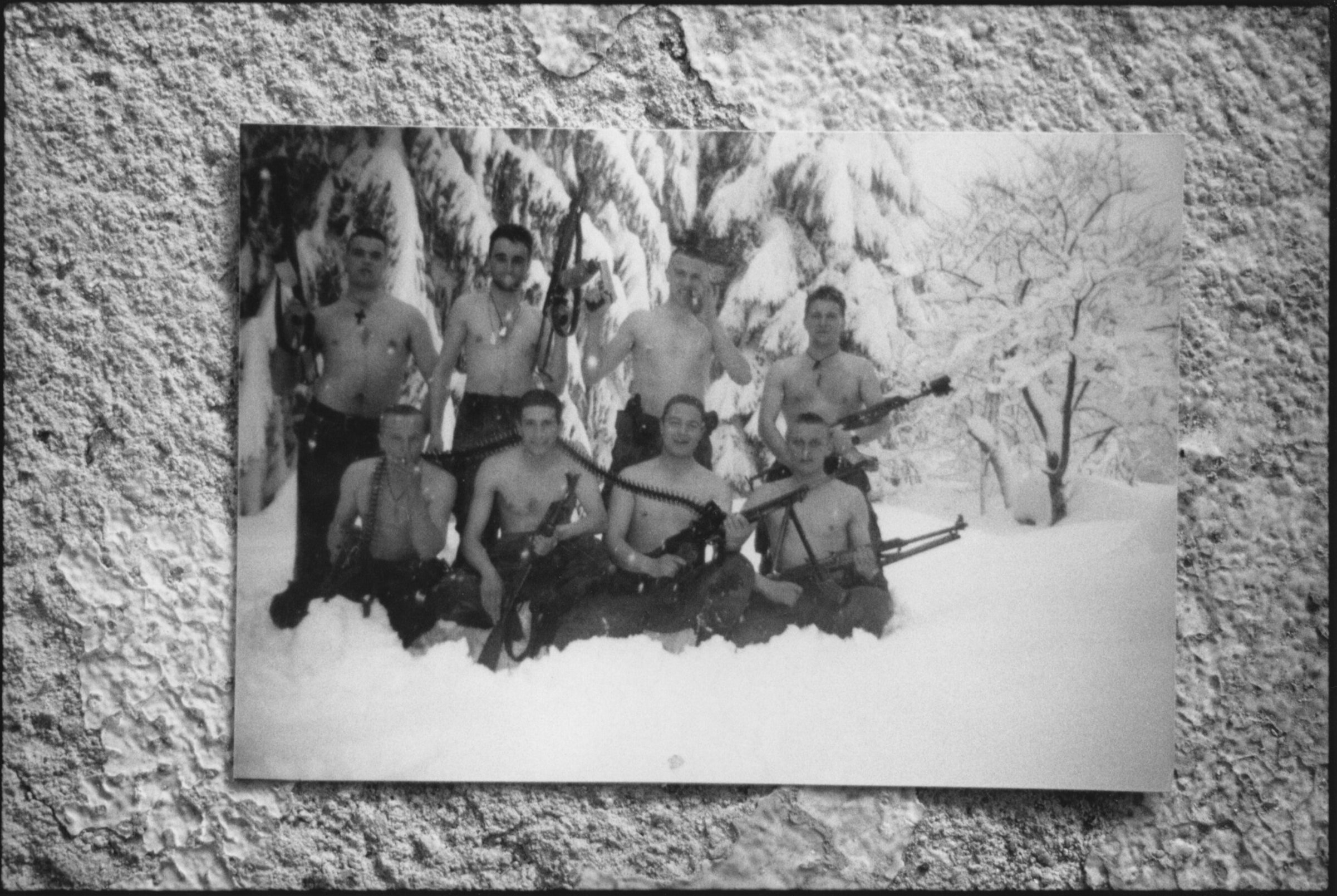
Self portrait made by Serb soldiers.
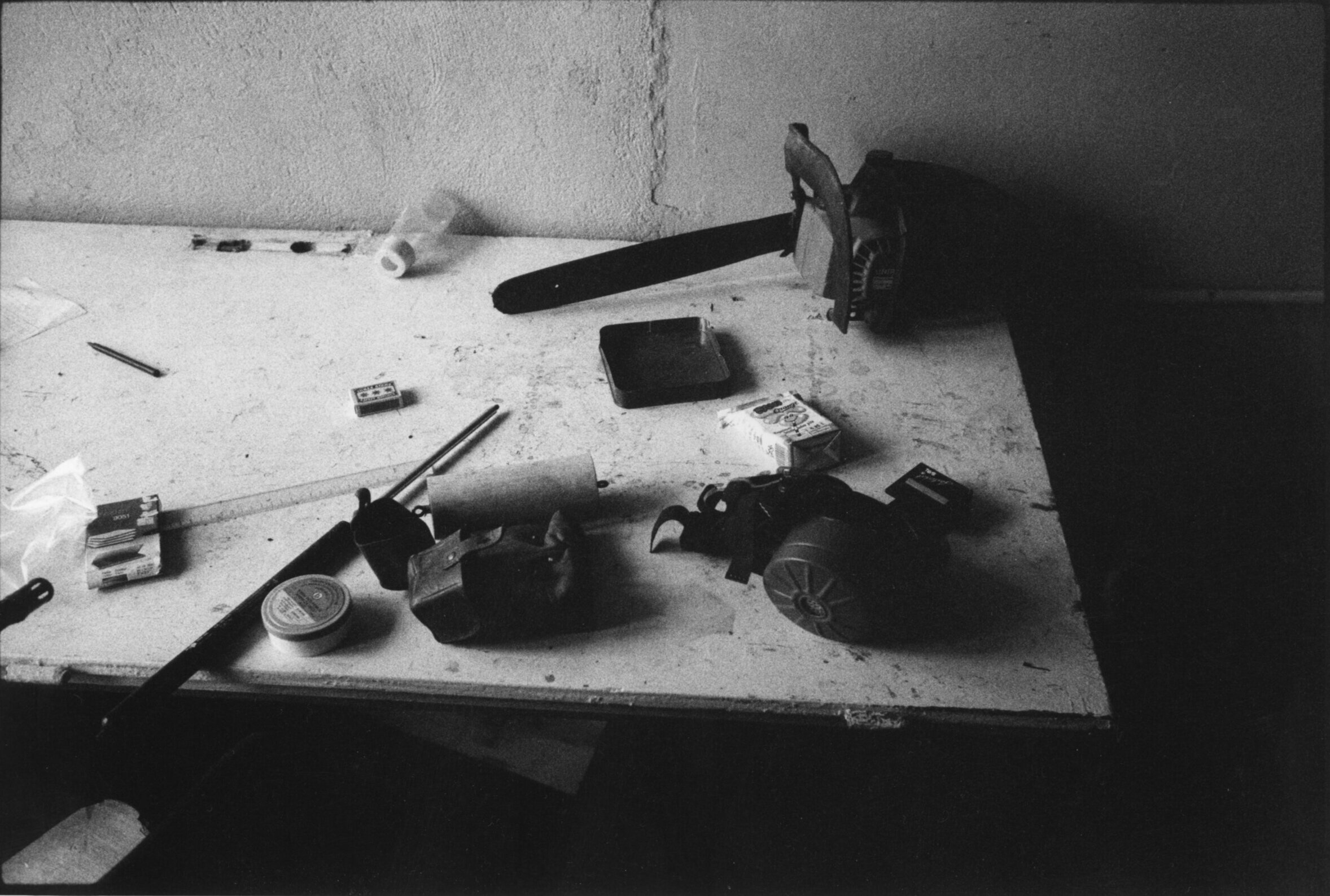
Tools used for torturing prisoners found in Pristina police station.
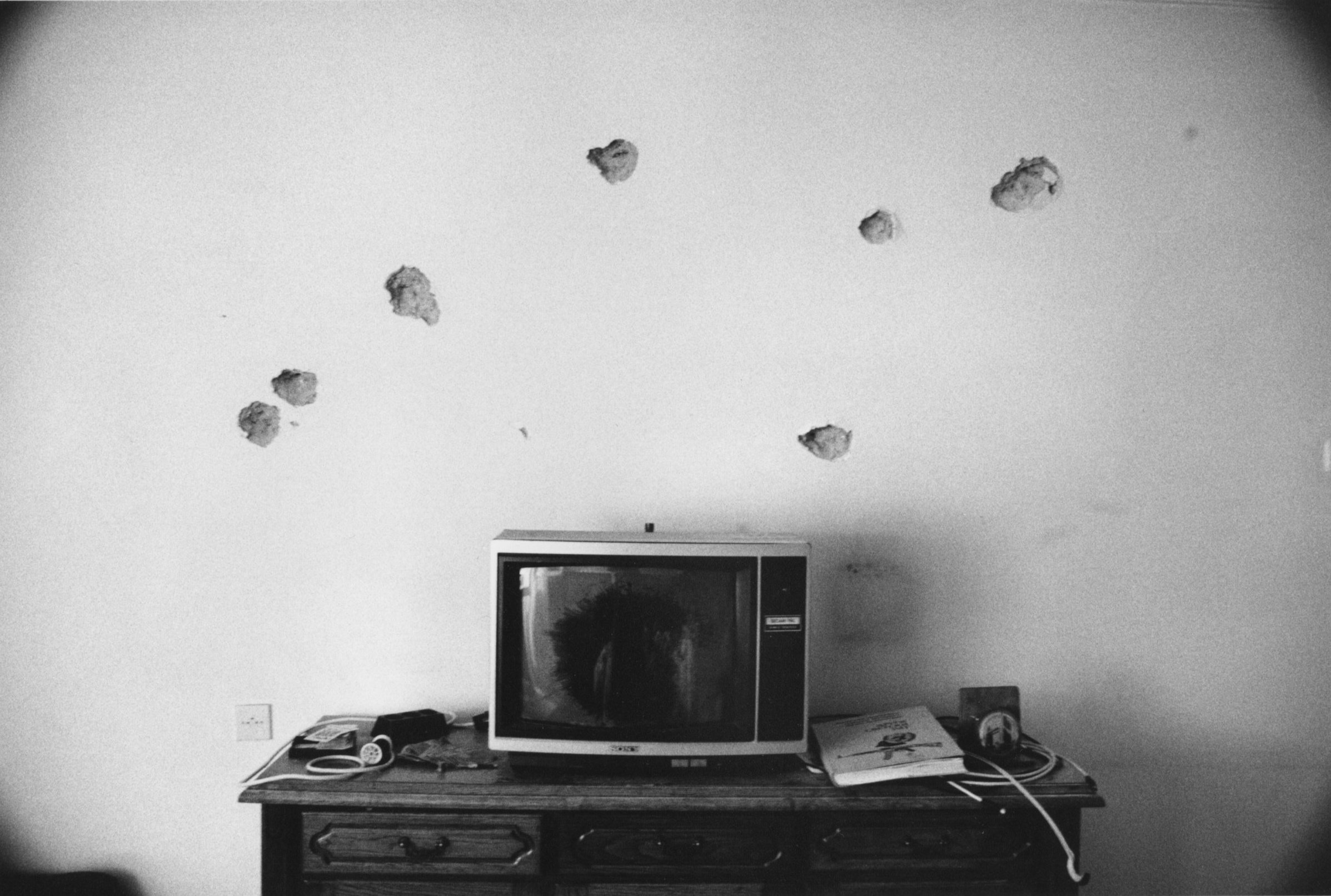
House 19, Kapasnica, Pea. Local residents claim that a Serb paramilitary unit down as Frankies Boys tortured and murdered several Kosovar men in this house.
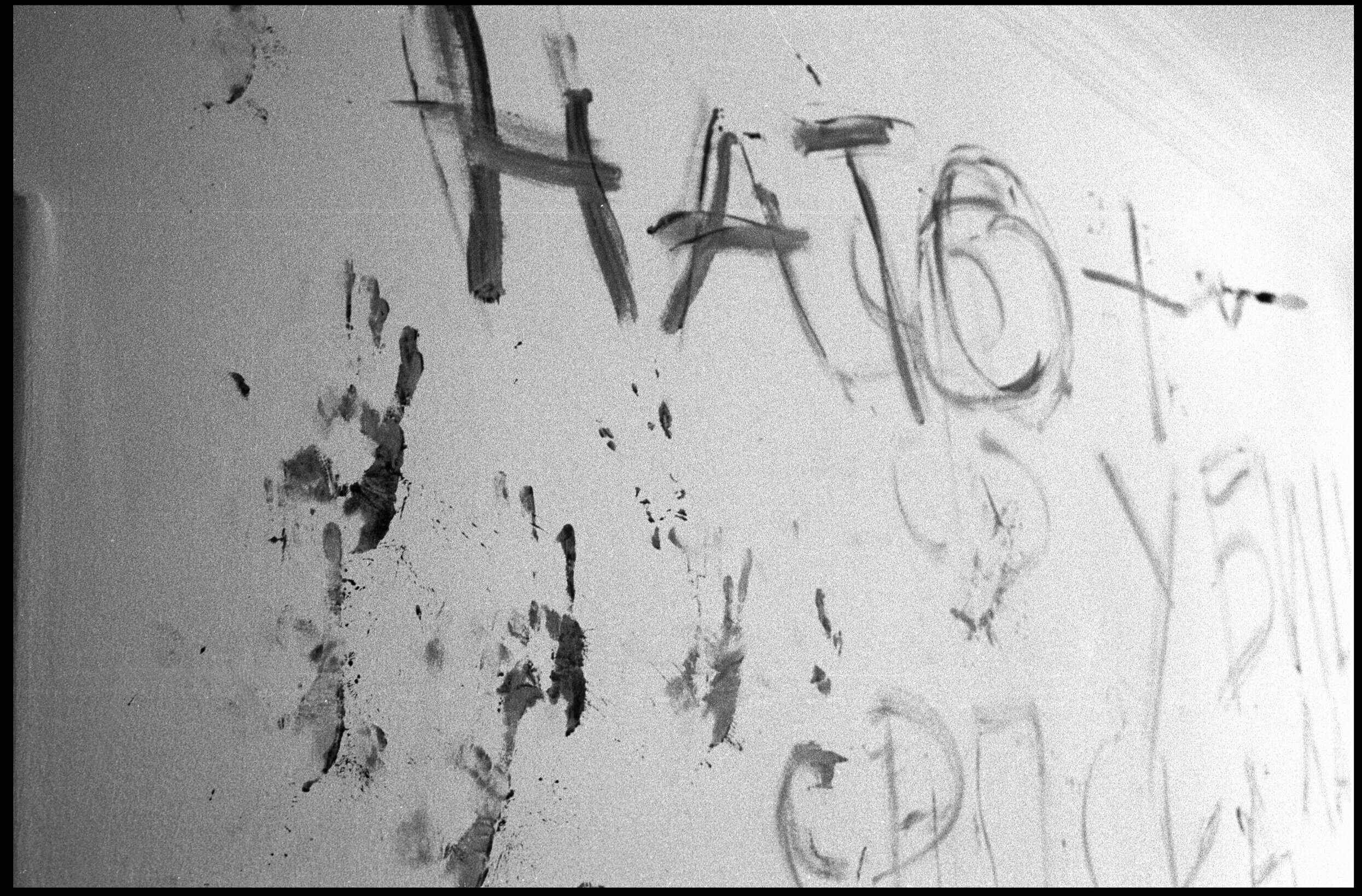
House 19, Kapasnica, Peja. Local residents claim that a Serb paramilitary unit down as Frankies Boys tortured and murdered several Kosovar men in this house and wrote messages to NATO in cyrillic with the victims blood.
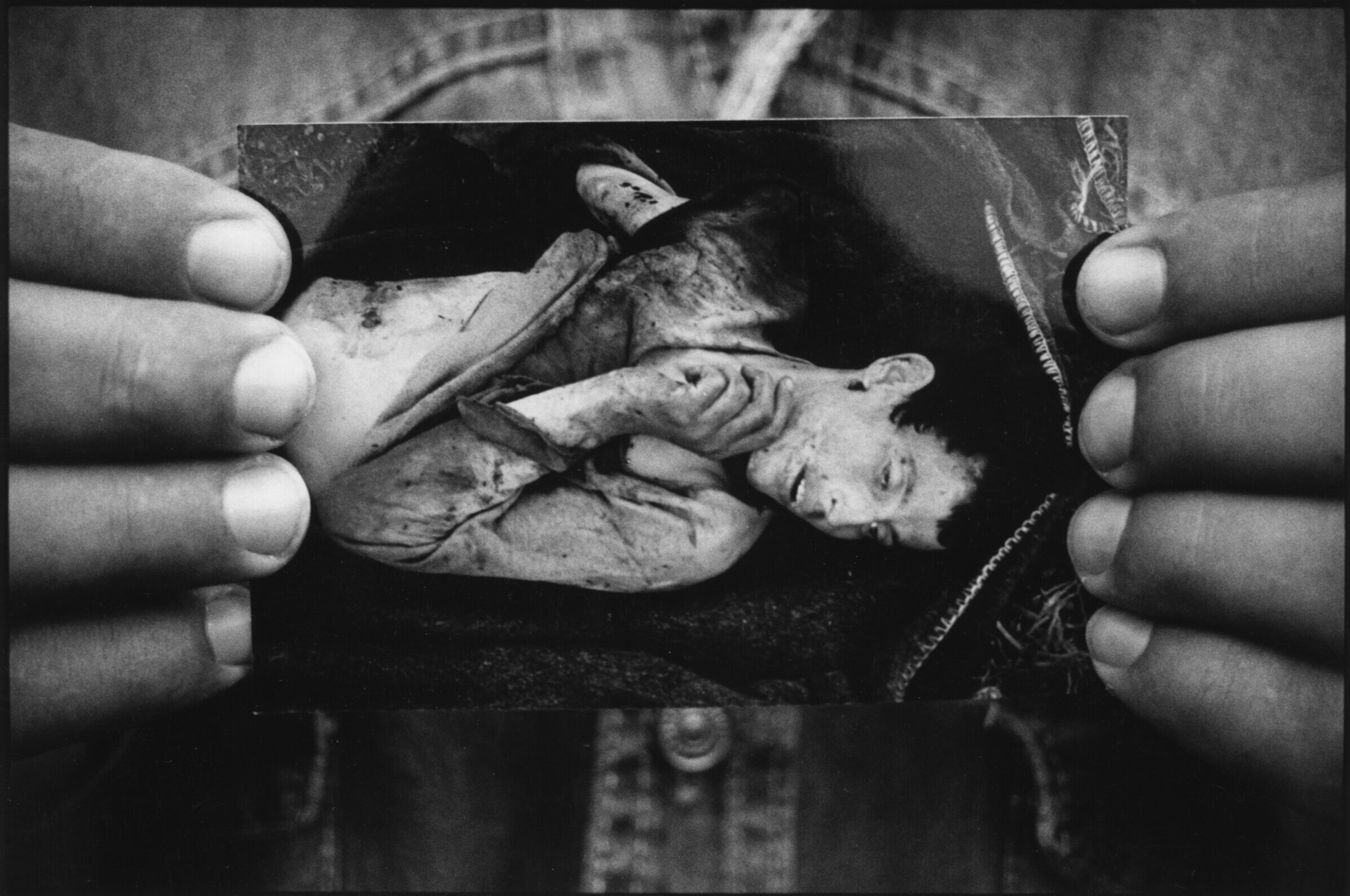
Habib Zogaj of Turjak holds a photograph he took of 16 year old Mehdi Krasniqi who he says was executed by Serb soldiers on the 31st of March 1999.
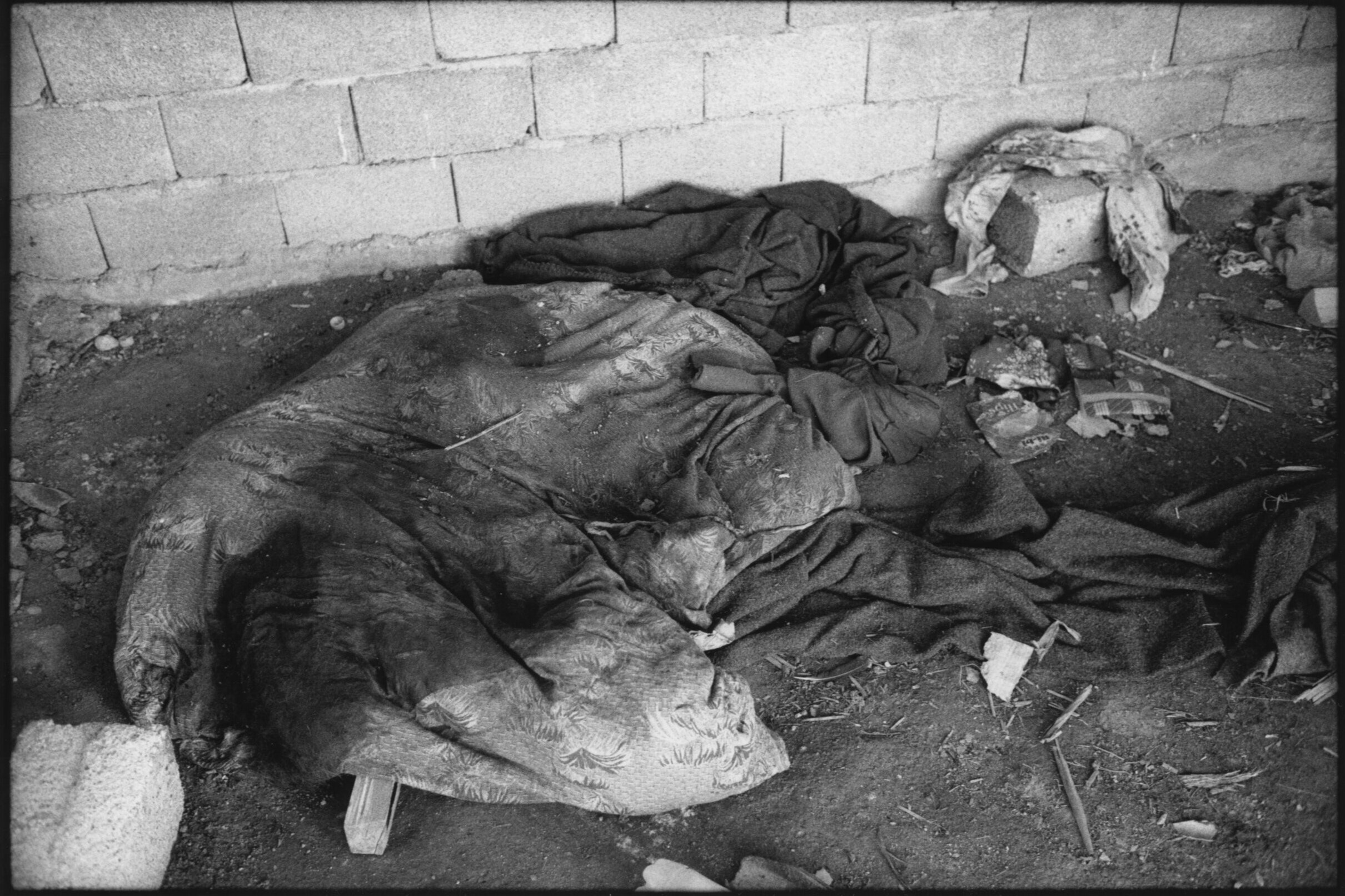
I was taken to this roadside shack by some Kosovo Liberation Army soldiers who were trying to locate a mass grave for me. Outside the shack were the torso and legs of a girl. The girl had been raped inside the shack. There was a significant amount of blood in the area of her genitals and a meat hook suspended from the ceiling. Their was blood stained bedding on the floor. In the area next to the body was evidence of a fire and canned food where someone had enjoyed lunch. Many refugees reported that young women were dragged from vehicles and raped by the side of the road by Serb military and paramilitary forces.
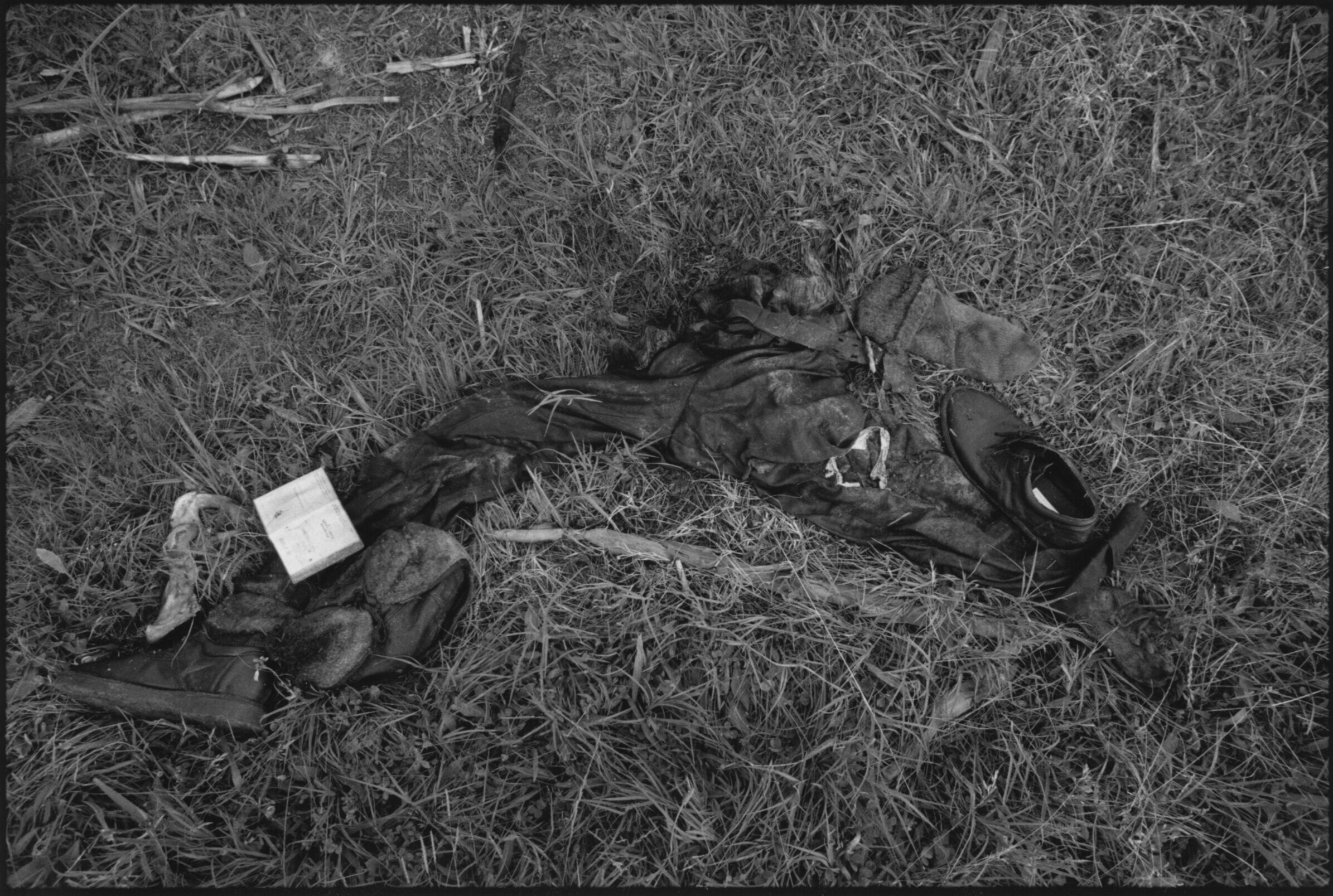
Human remains in a field near the village of Meja where refugees reported hundreds of men were murdered by Serb paramilitary forces.
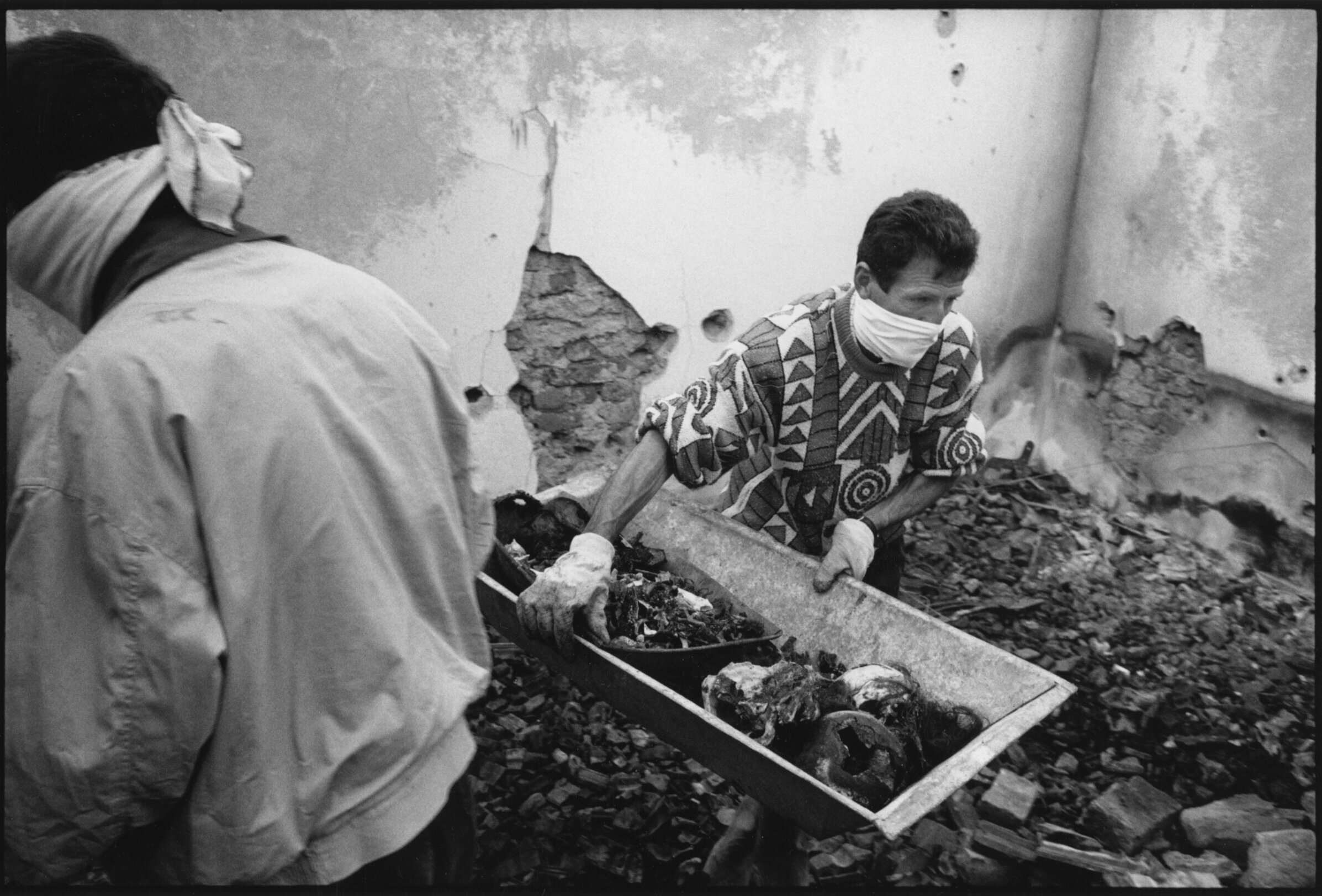
In the village of Cara Luka the uncle of 13 boys and 9 girls from the Krasniqi family shot and burned in their home by Serb military forces collects their remains in a wheel barrow for reburial. The oldest child was 19 years old.

In the village of Cara Luka the uncle of 13 boys and 9 girls from the Krasniqi family shot and burned in their home by Serb military forces collects their remains in a wheel barrow for reburial. The oldest child was 19 years old.
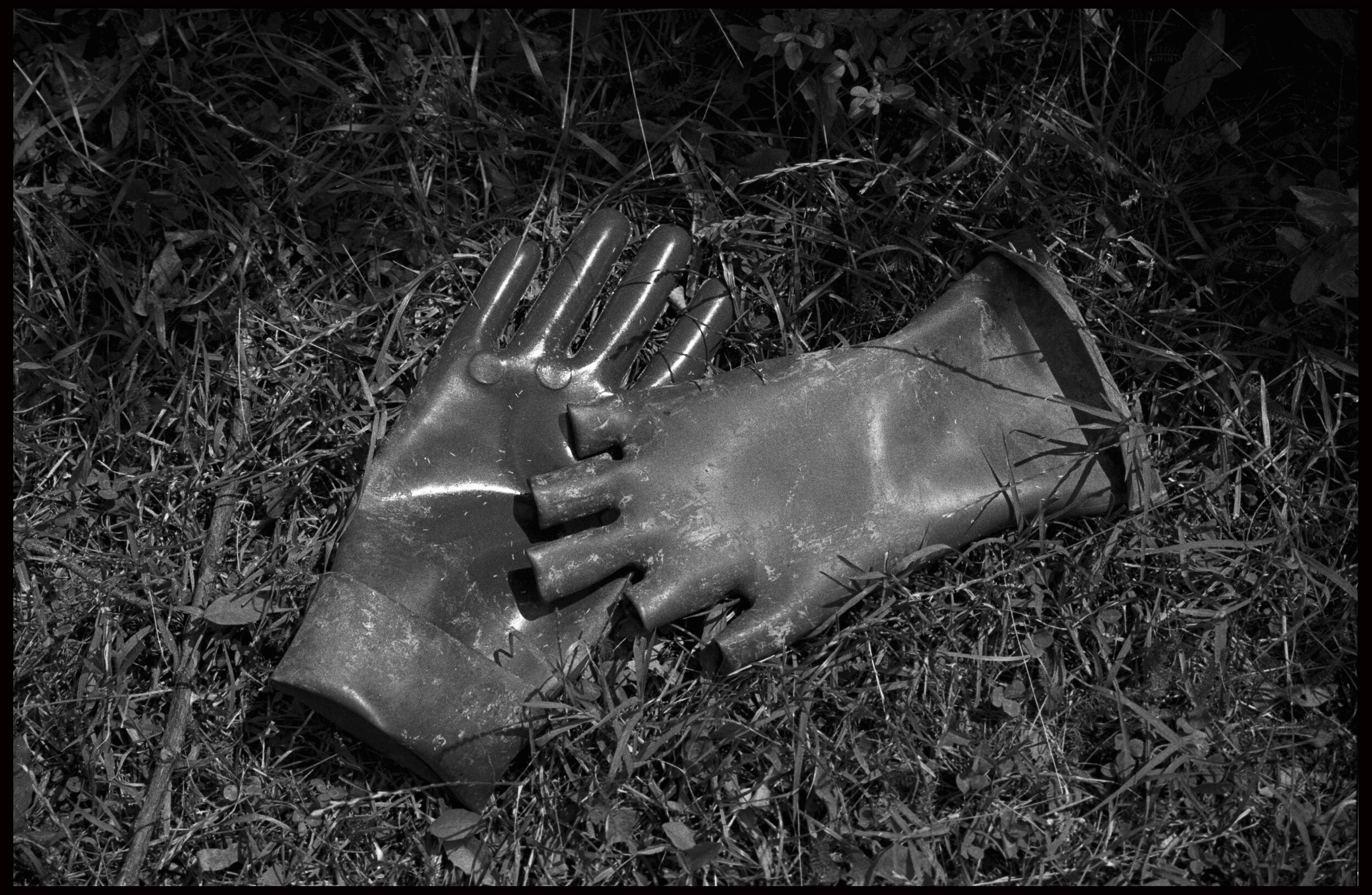
Rubber gloves used by Serb clean up teams who tried to remove bodies from a mass grave near the village of Meja where refugees say they saw hundreds of men executed by Serb paramilitary forces.
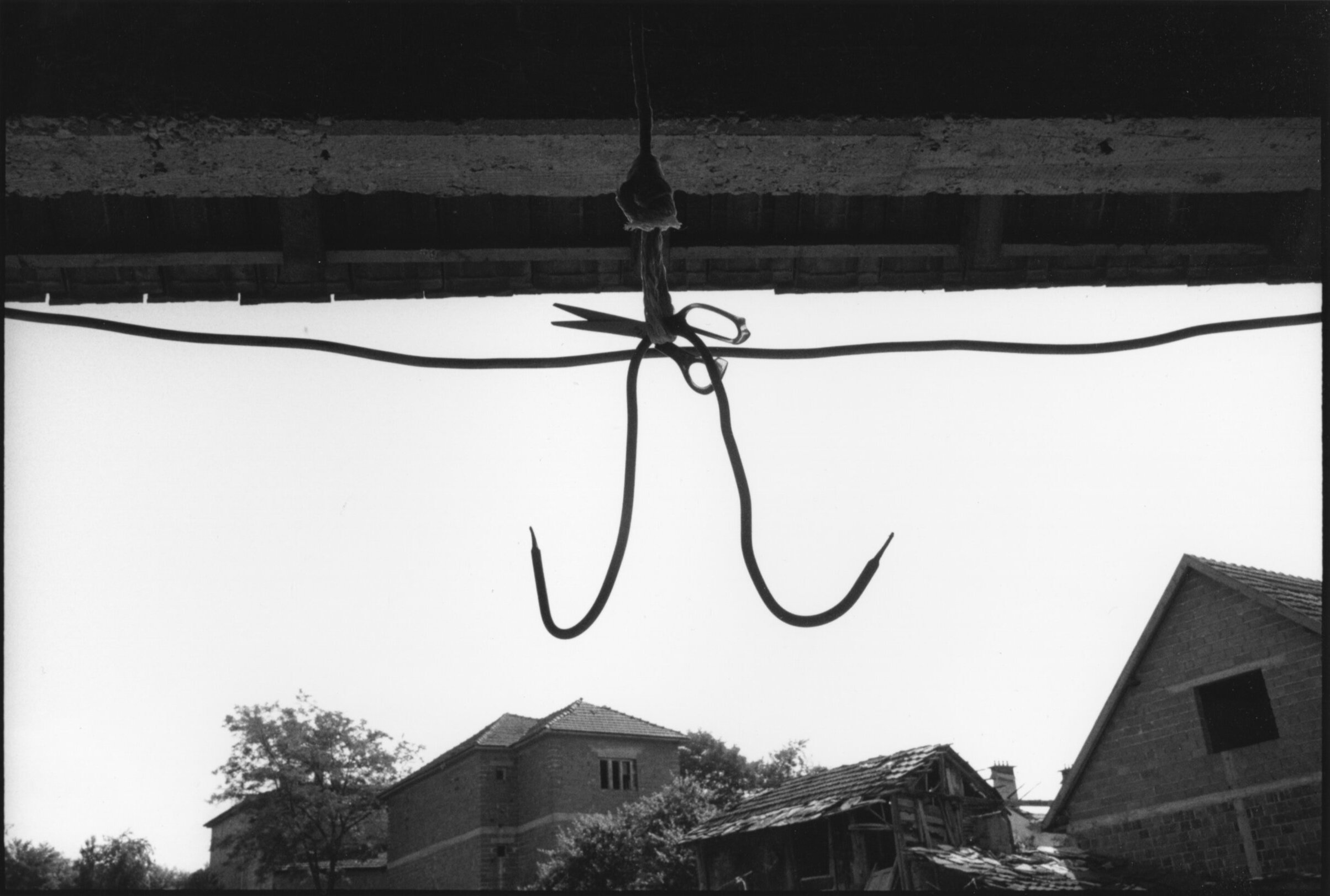
Meat hook hanging from a farm in Velika Krusha where many civilians were executed. Under the hook I found a lot of pornographic magazines.

This and the following three photographs show the bodies of two men executed in a vineyard in the village of Xrce. The naked man carefully folded his clothes and tucked his socks into his shoes before he was killed. It appears that the killers wanted to determine whether the man was circumcised before he was killed.

The body of a man executed in a vineyard in the village of Xrce. The man carefully folded his clothes and tucked his socks into his shoes before he was killed. It appears that the killers wanted to determine whether the man was circumcised before he was killed.
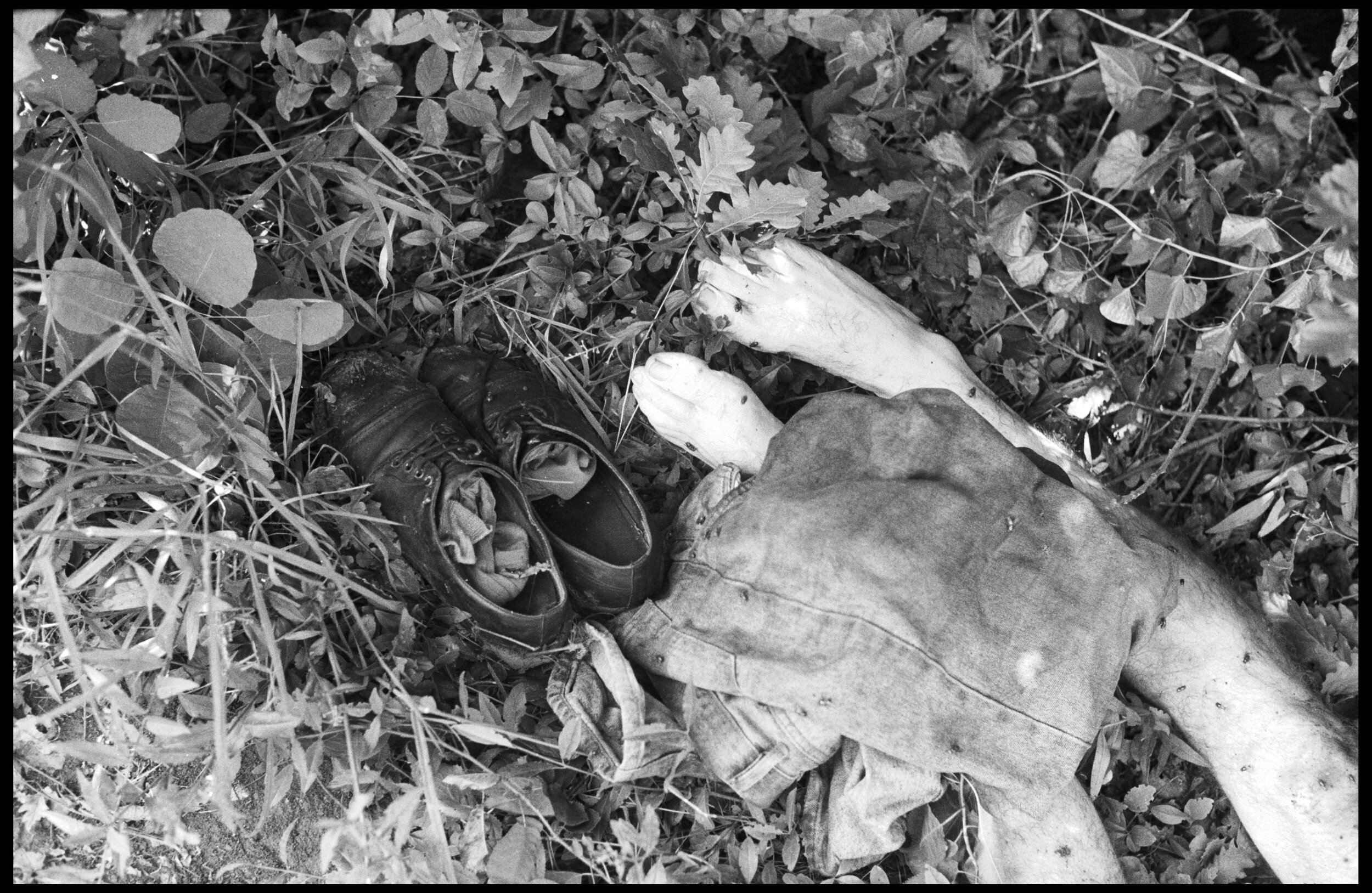
The body of a man executed in a vineyard in the village of Xrce. The man carefully folded his clothes and tucked his socks into his shoes before he was killed. It appears that the killers wanted to determine whether the man was circumcised before he was killed.
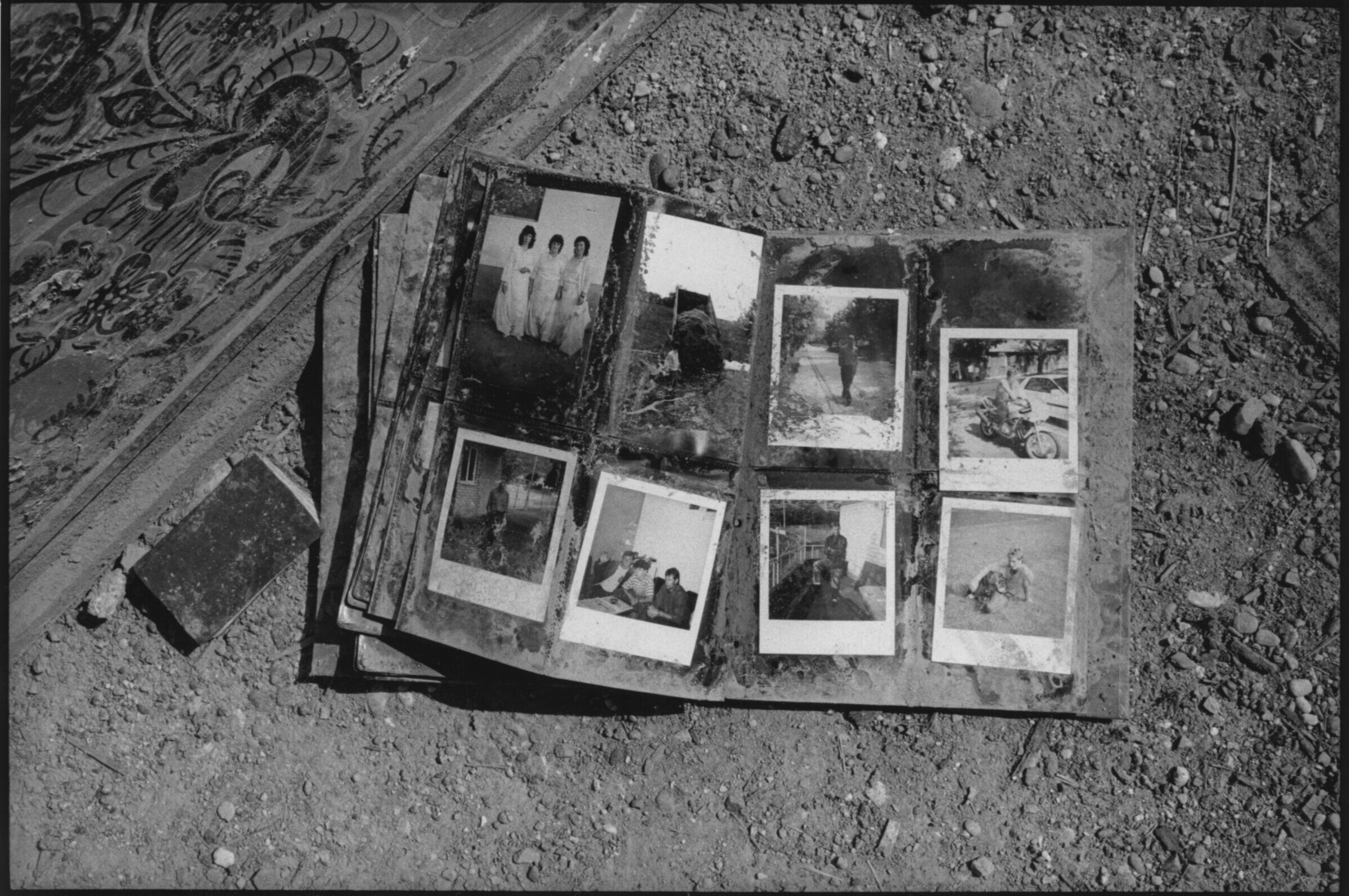
A family photo album found outside a home in thee village of Velika Krusha, Kosovo. Serb forces routinely destroyed family mementos and other indicators of identity and belonging.
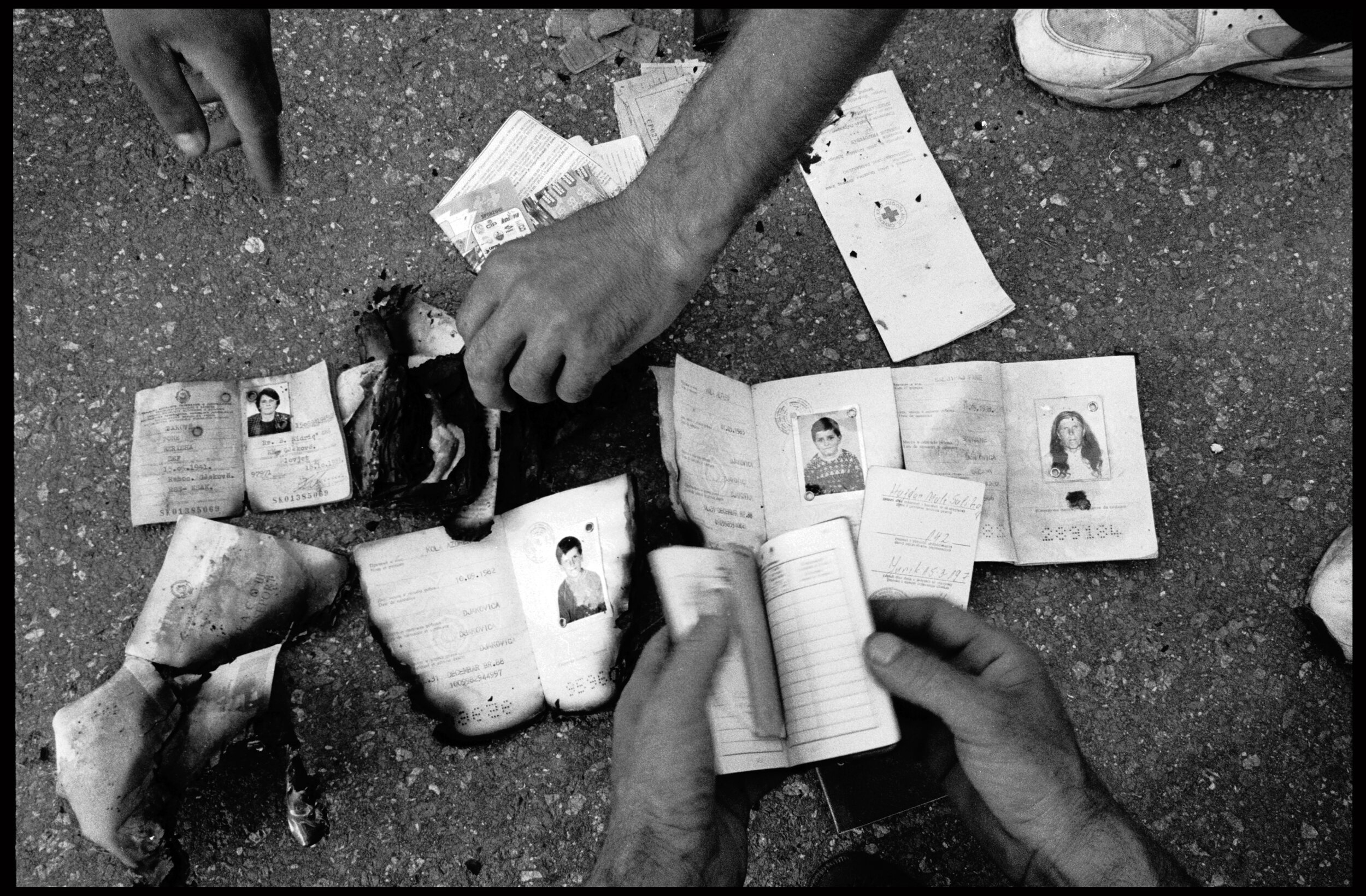
Identity documents of people presumed murdered next to a mass grave near Meja, Kosovo.
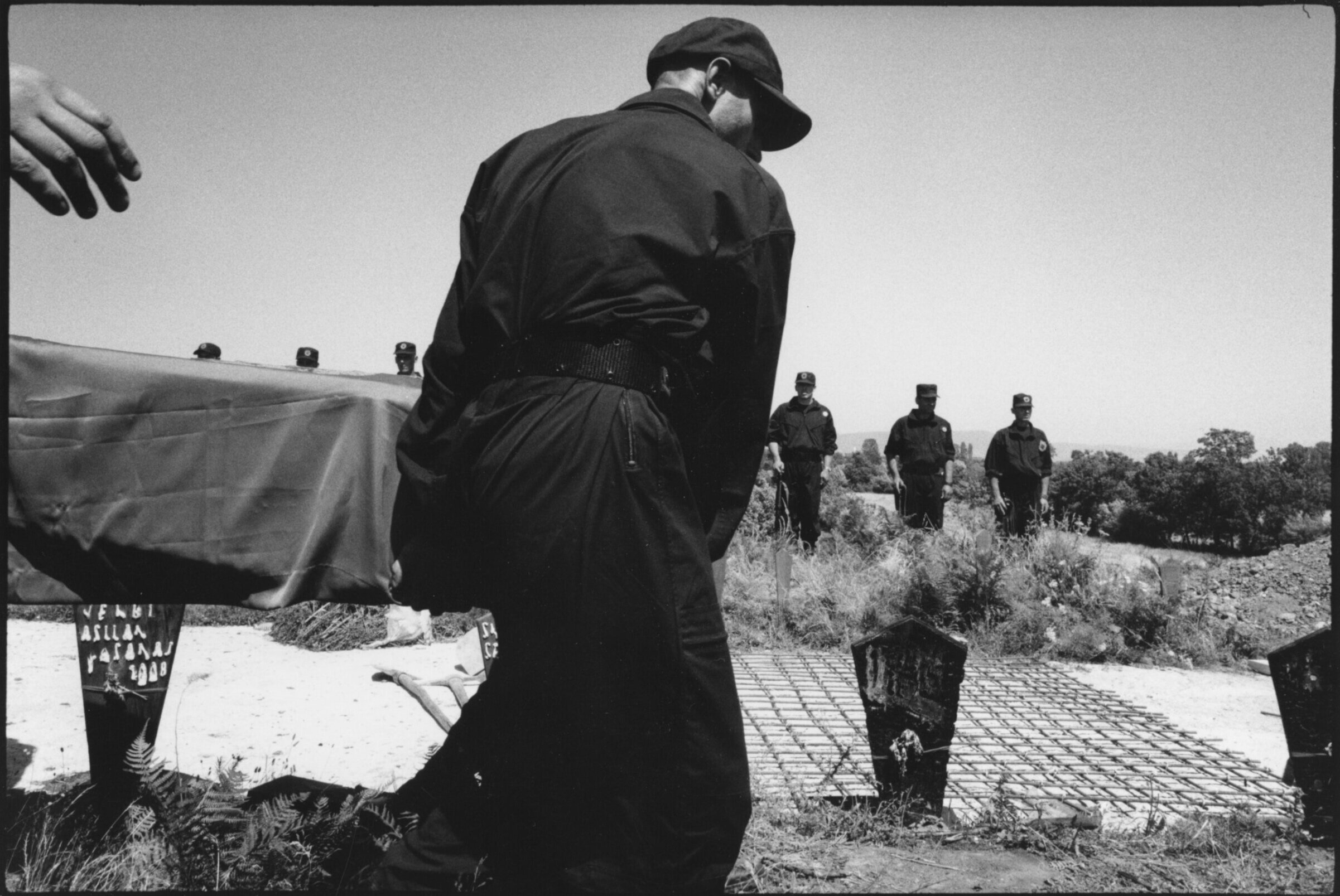
KLA soldiers bury their dead under reinforced concrete because Serb military had recently exhumed bodies of their colleagues.
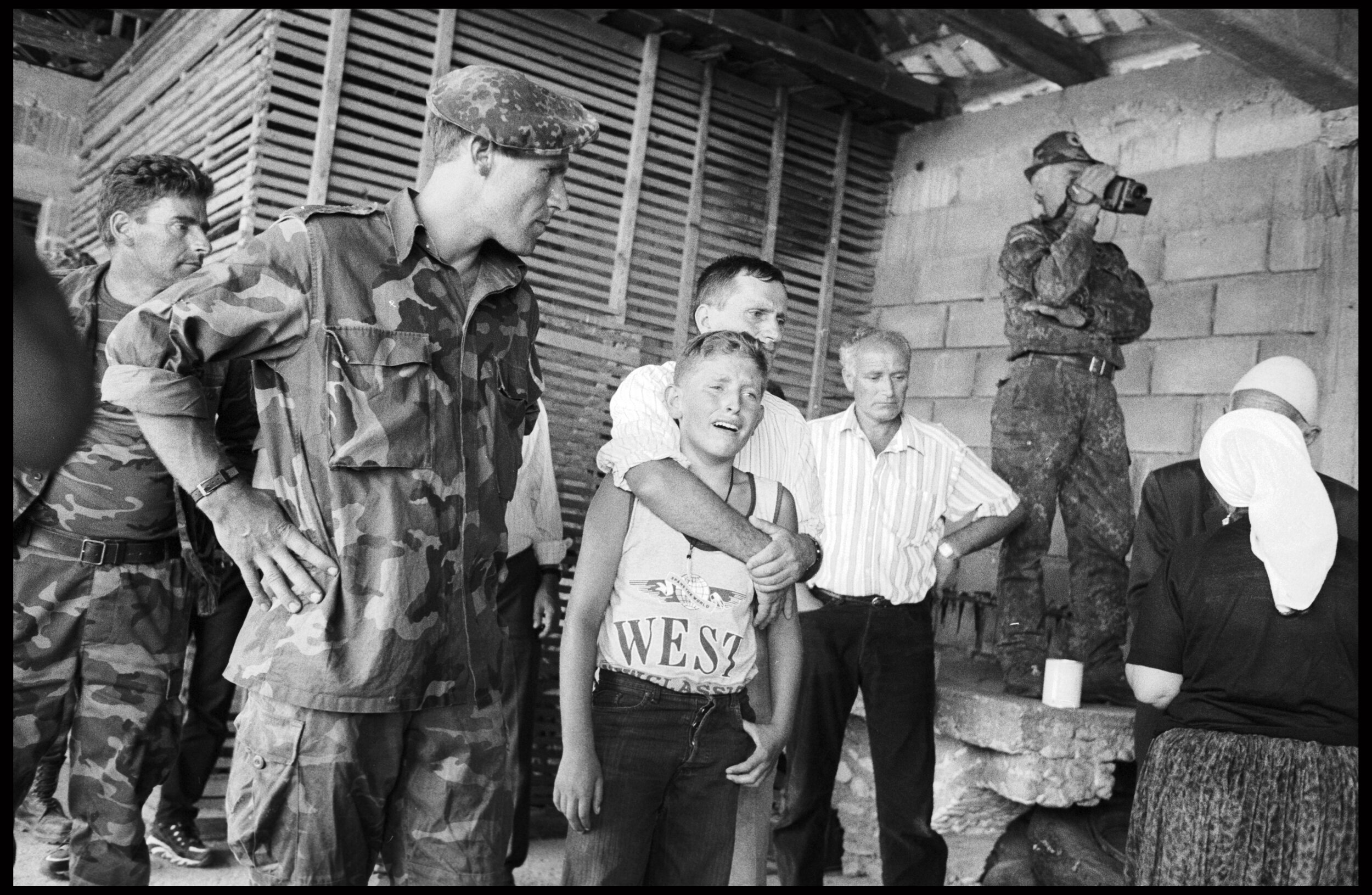
A family mourn two brothers blown up by a landmine
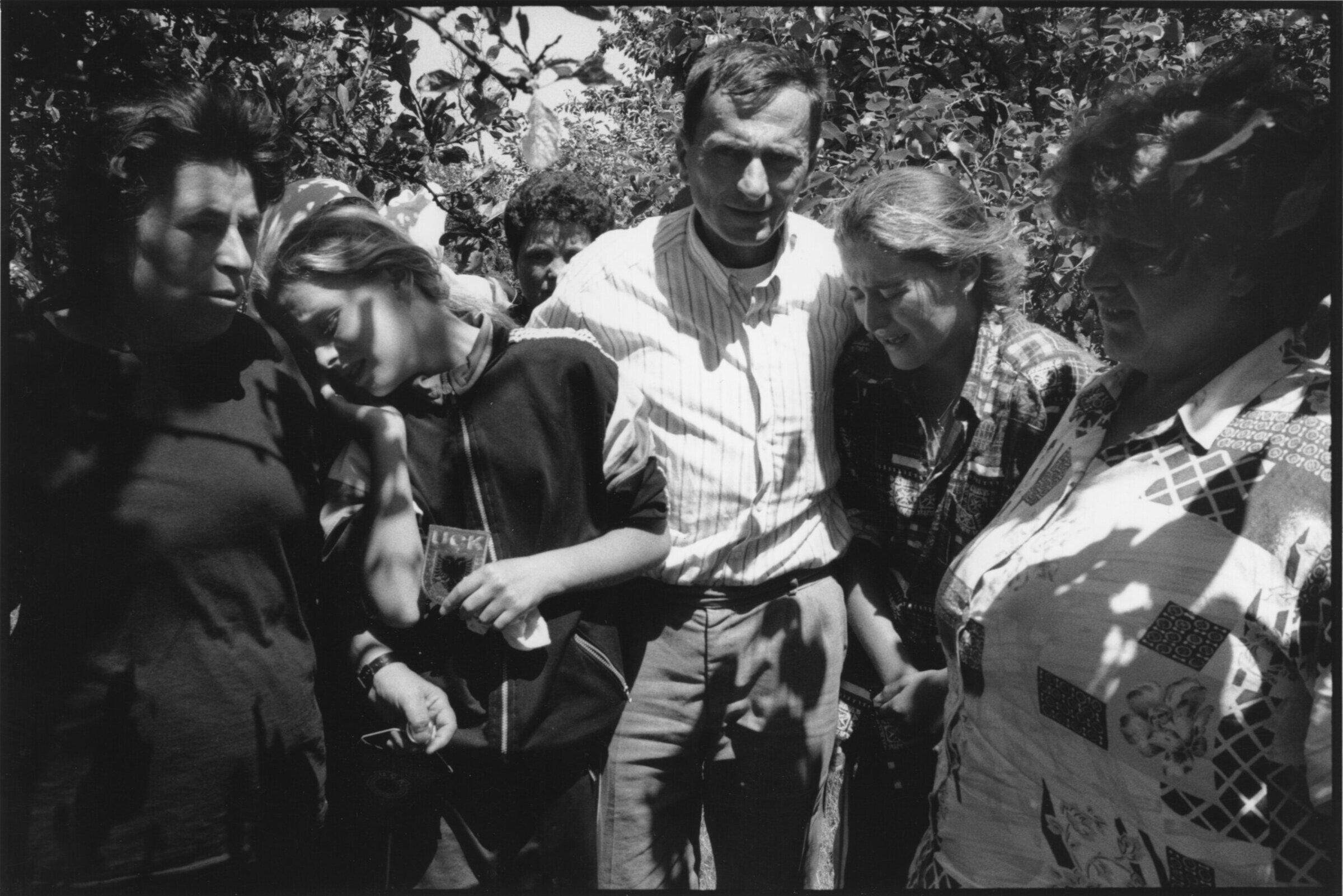
A family mourn two brothers blown up by a landmine
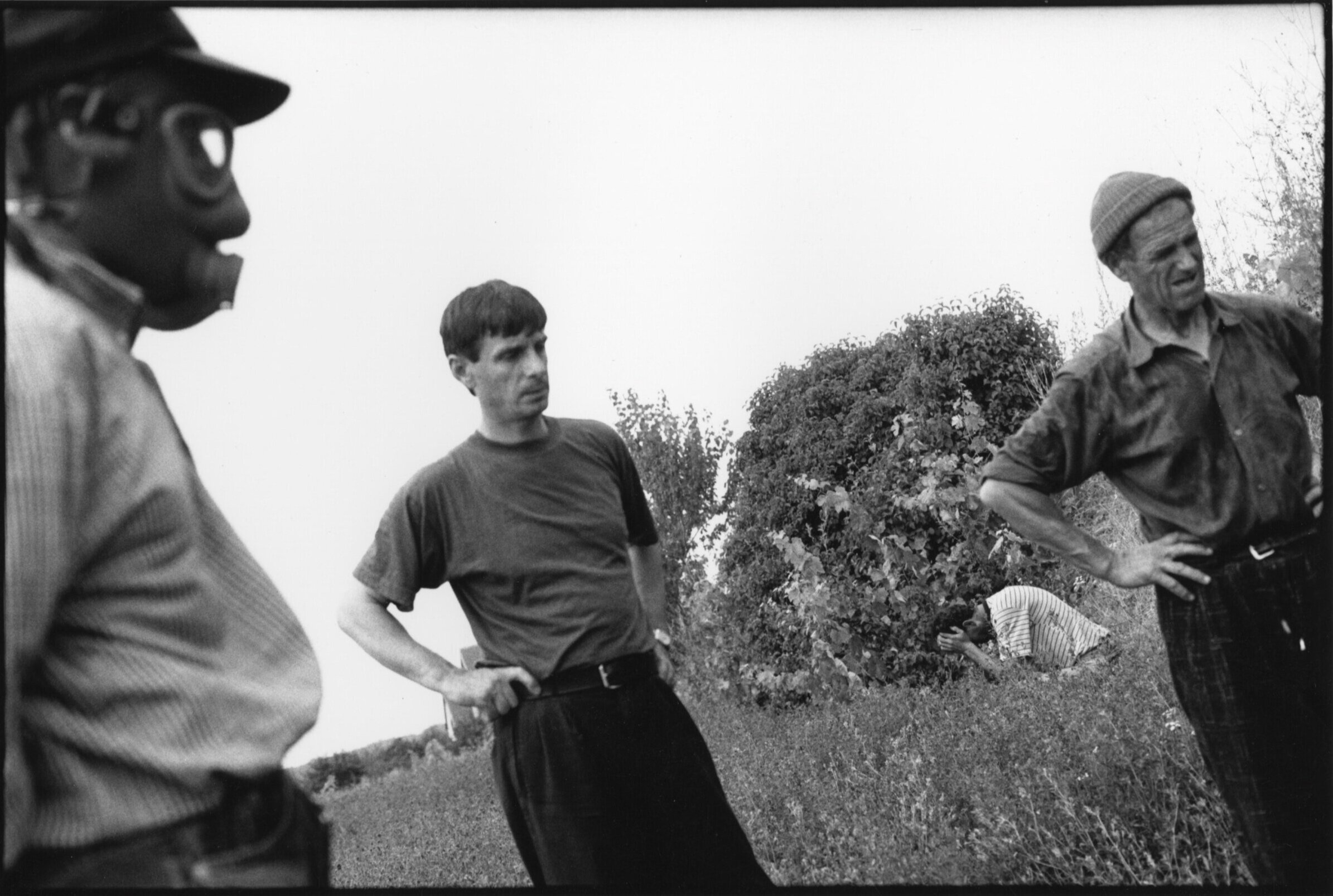
When NATO's bombing campaign started and the Serb military intensified it's operations knowing that their reign was about to end many Kosovar families were separated in the chaos that ensued. Only when the conflict ended and families returned home from neighboring countries could they determine who had survived. The Kbasci family could not account for four of their number: Shaip (66), his wife Sanije (62), their son Ramadan (41) and grandson Floren (6 months). Shortly after making it home they heard from neighbours that their kin had been executed and buried in a field on their farm. These photographs show the men of the family exhuming the bodies and taking them to the women for reburial.
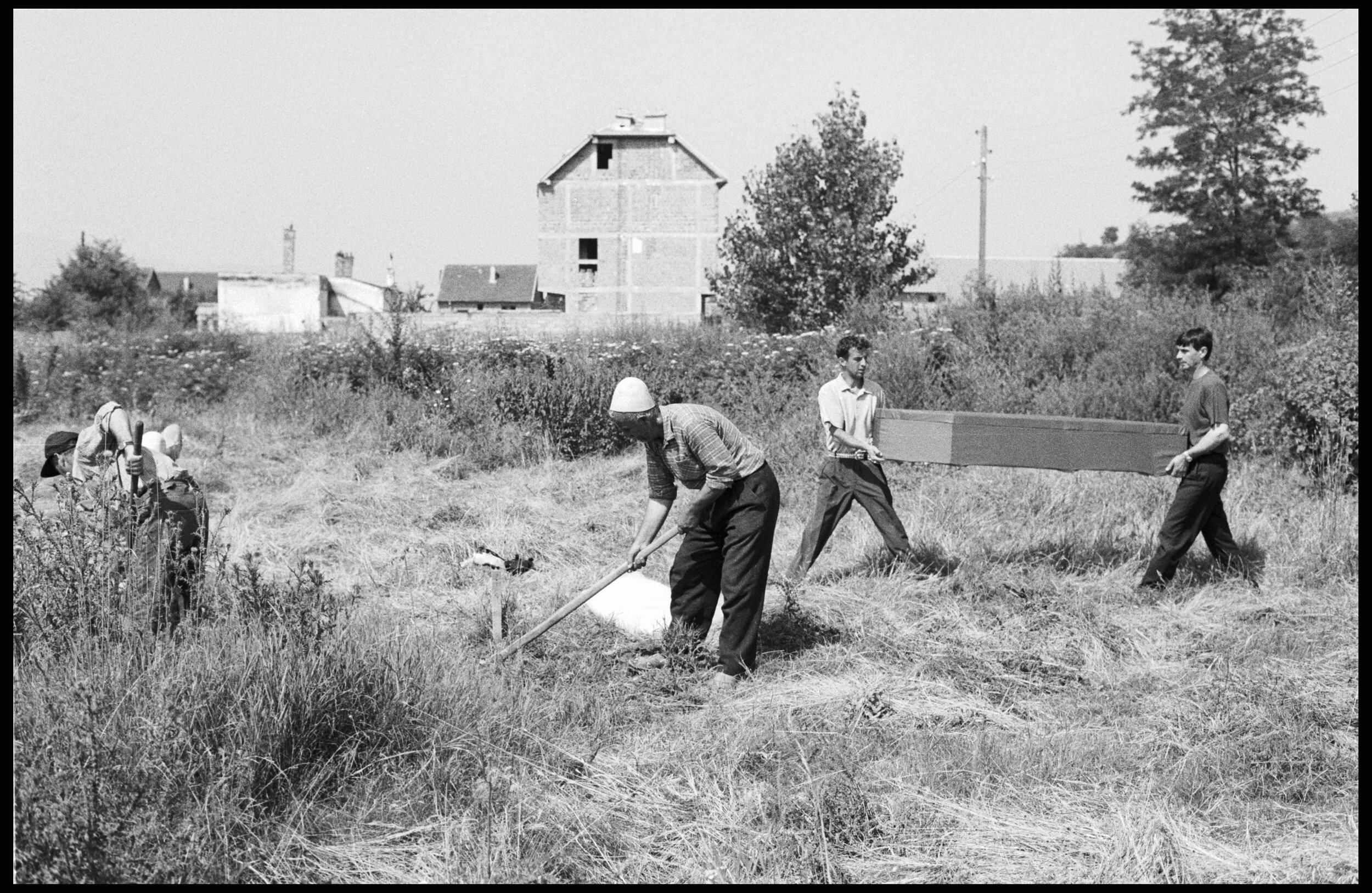
When NATO's bombing campaign started and the Serb military intensified it's operations knowing that their reign was about to end many Kosovar families were separated in the chaos that ensued. Only when the conflict ended and families returned home from neighboring countries could they determine who had survived. The Kbasci family could not account for four of their number: Shaip (66), his wife Sanije (62), their son Ramadan (41) and grandson Floren (6 months). Shortly after making it home they heard from neighbours that their kin had been executed and buried in a field on their farm. These photographs show the men of the family exhuming the bodies and taking them to the women for reburial.
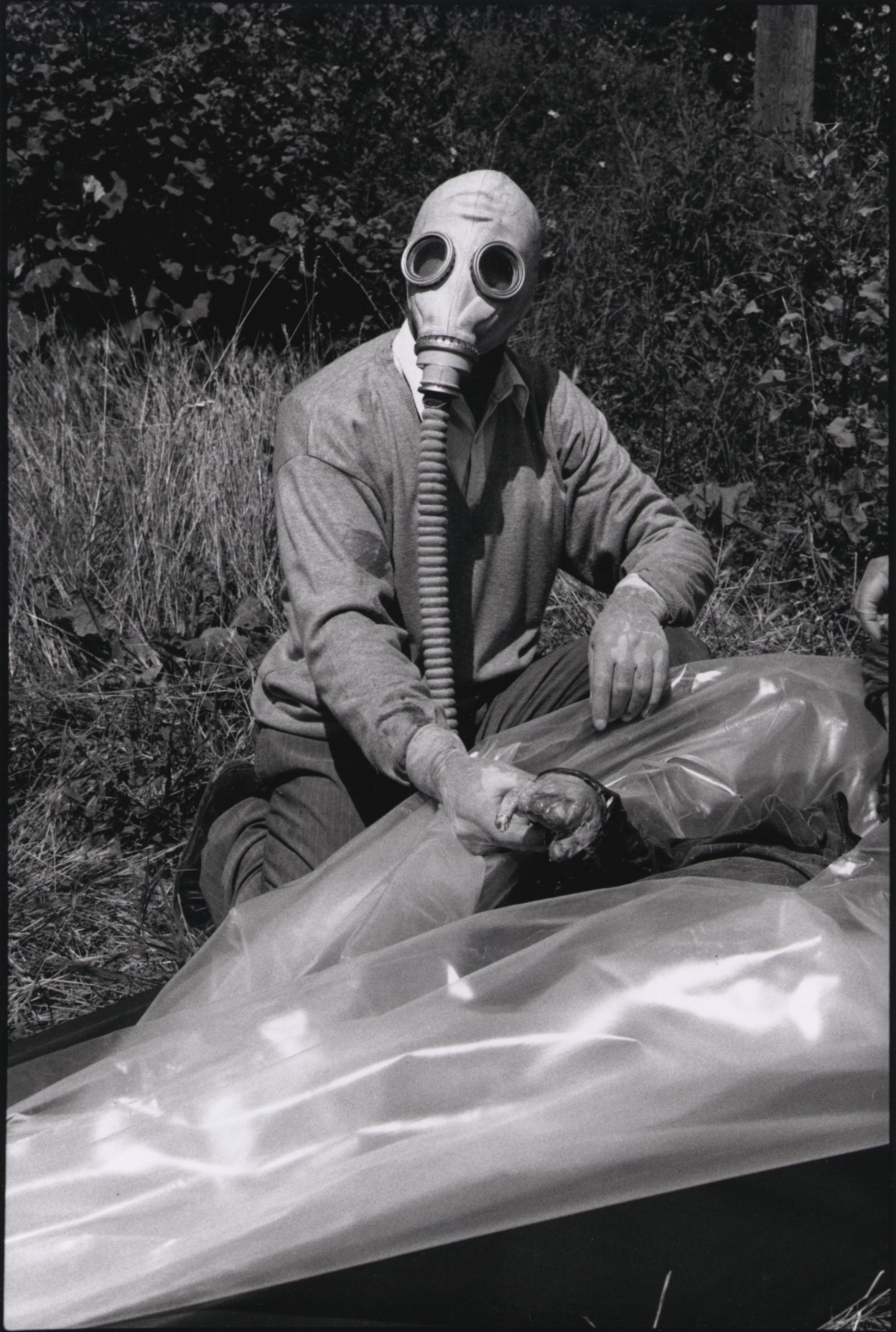
When NATO's bombing campaign started and the Serb military intensified it's operations knowing that their reign was about to end many Kosovar families were separated in the chaos that ensued. Only when the conflict ended and families returned home from neighboring countries could they determine who had survived. The Kbasci family could not account for four of their number: Shaip (66), his wife Sanije (62), their son Ramadan (41) and grandson Floren (6 months). Shortly after making it home they heard from neighbours that their kin had been executed and buried in a field on their farm. These photographs show the men of the family exhuming the bodies and taking them to the women for reburial.
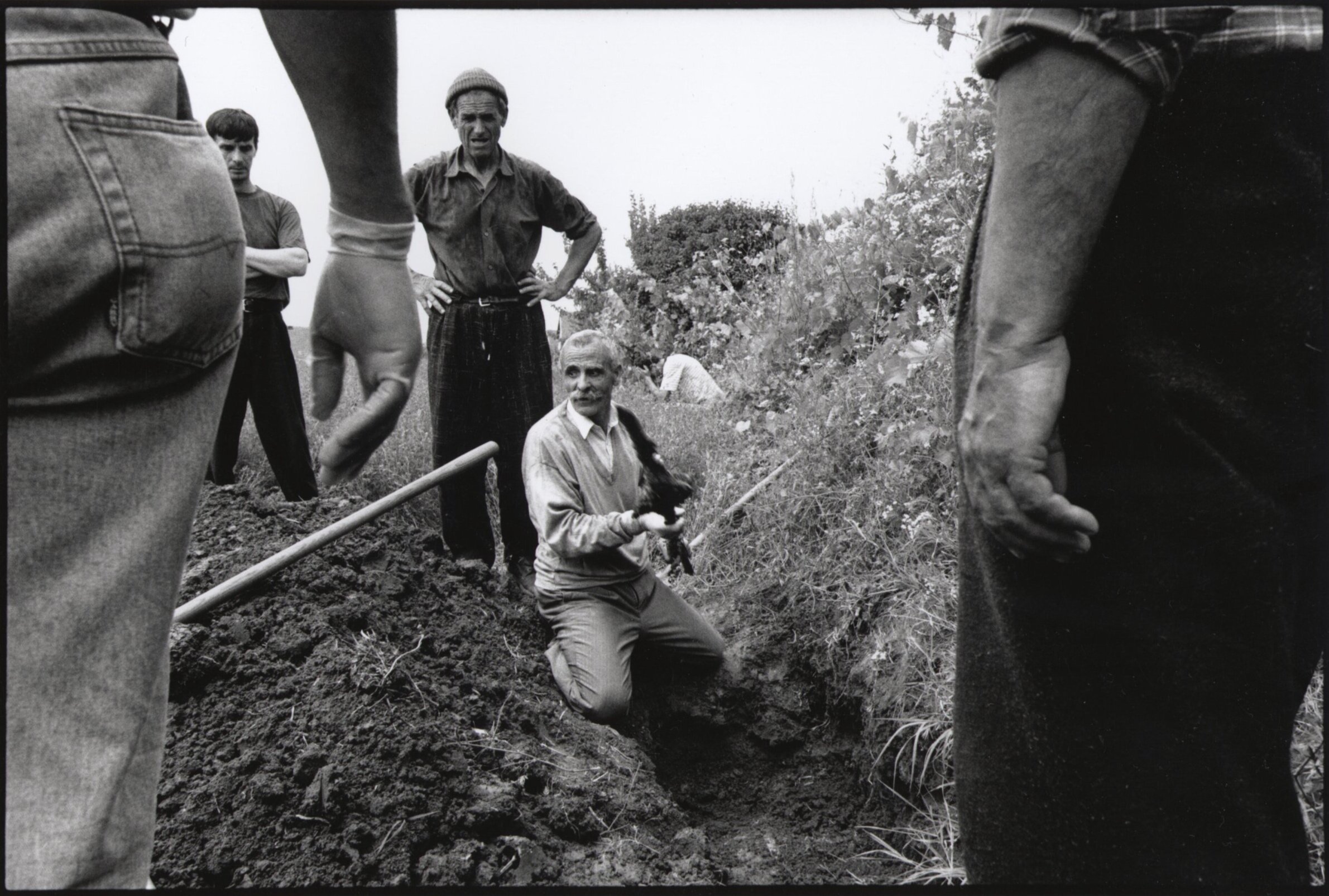
When NATO's bombing campaign started and the Serb military intensified it's operations knowing that their reign was about to end many Kosovar families were separated in the chaos that ensued. Only when the conflict ended and families returned home from neighboring countries could they determine who had survived. The Kbasci family could not account for four of their number: Shaip (66), his wife Sanije (62), their son Ramadan (41) and grandson Floren (6 months). Shortly after making it home they heard from neighbours that their kin had been executed and buried in a field on their farm. These photographs show the men of the family exhuming the bodies and taking them to the women for reburial.

When NATO's bombing campaign started and the Serb military intensified it's operations knowing that their reign was about to end many Kosovar families were separated in the chaos that ensued. Only when the conflict ended and families returned home from neighboring countries could they determine who had survived. The Kbasci family could not account for four of their number: Shaip (66), his wife Sanije (62), their son Ramadan (41) and grandson Floren (6 months). Shortly after making it home they heard from neighbours that their kin had been executed and buried in a field on their farm. These photographs show the men of the family exhuming the bodies and taking them to the women for reburial.
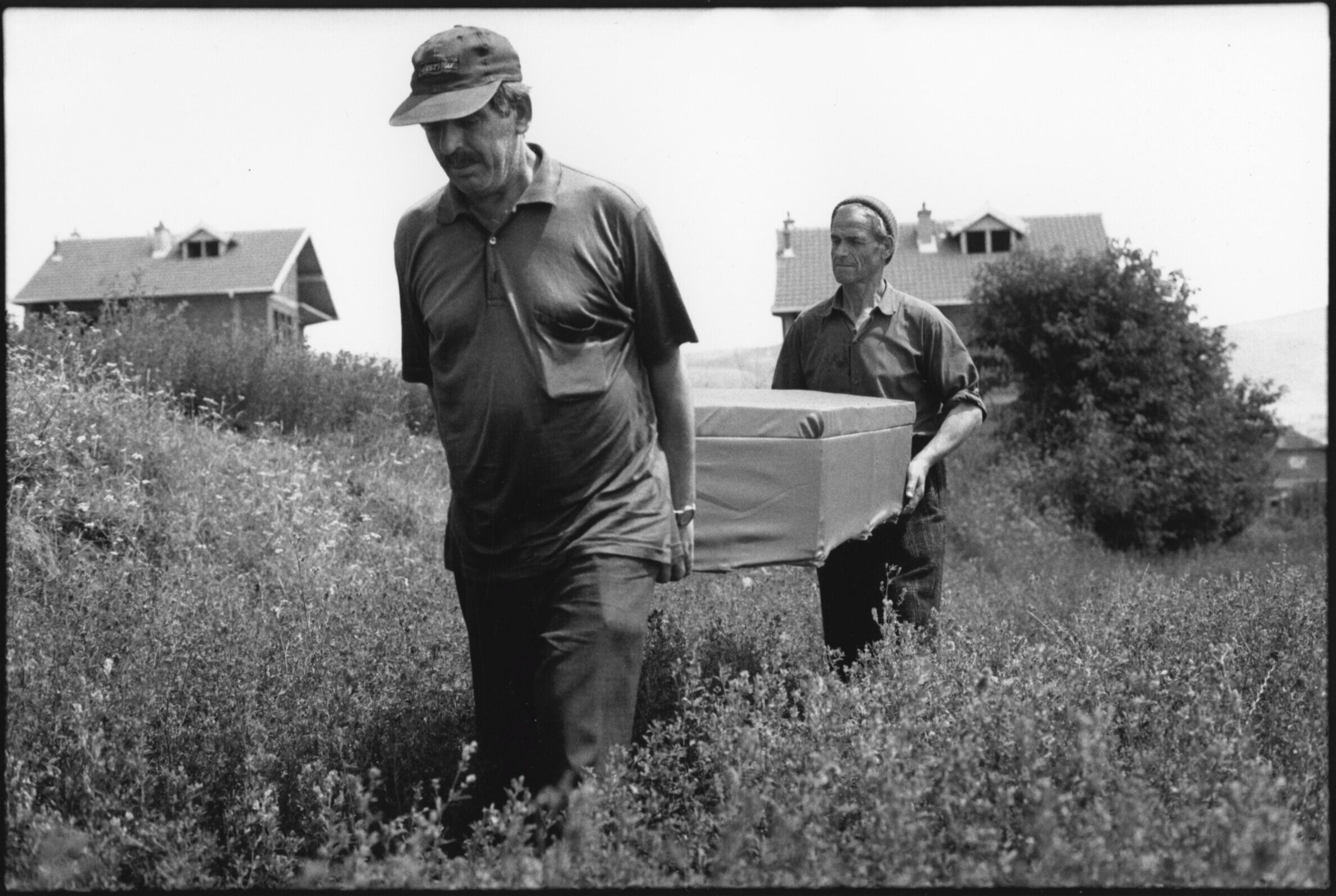
When NATO's bombing campaign started and the Serb military intensified it's operations knowing that their reign was about to end many Kosovar families were separated in the chaos that ensued. Only when the conflict ended and families returned home from neighboring countries could they determine who had survived. The Kbasci family could not account for four of their number: Shaip (66), his wife Sanije (62), their son Ramadan (41) and grandson Floren (6 months). Shortly after making it home they heard from neighbours that their kin had been executed and buried in a field on their farm. These photographs show the men of the family exhuming the bodies and taking them to the women for reburial.
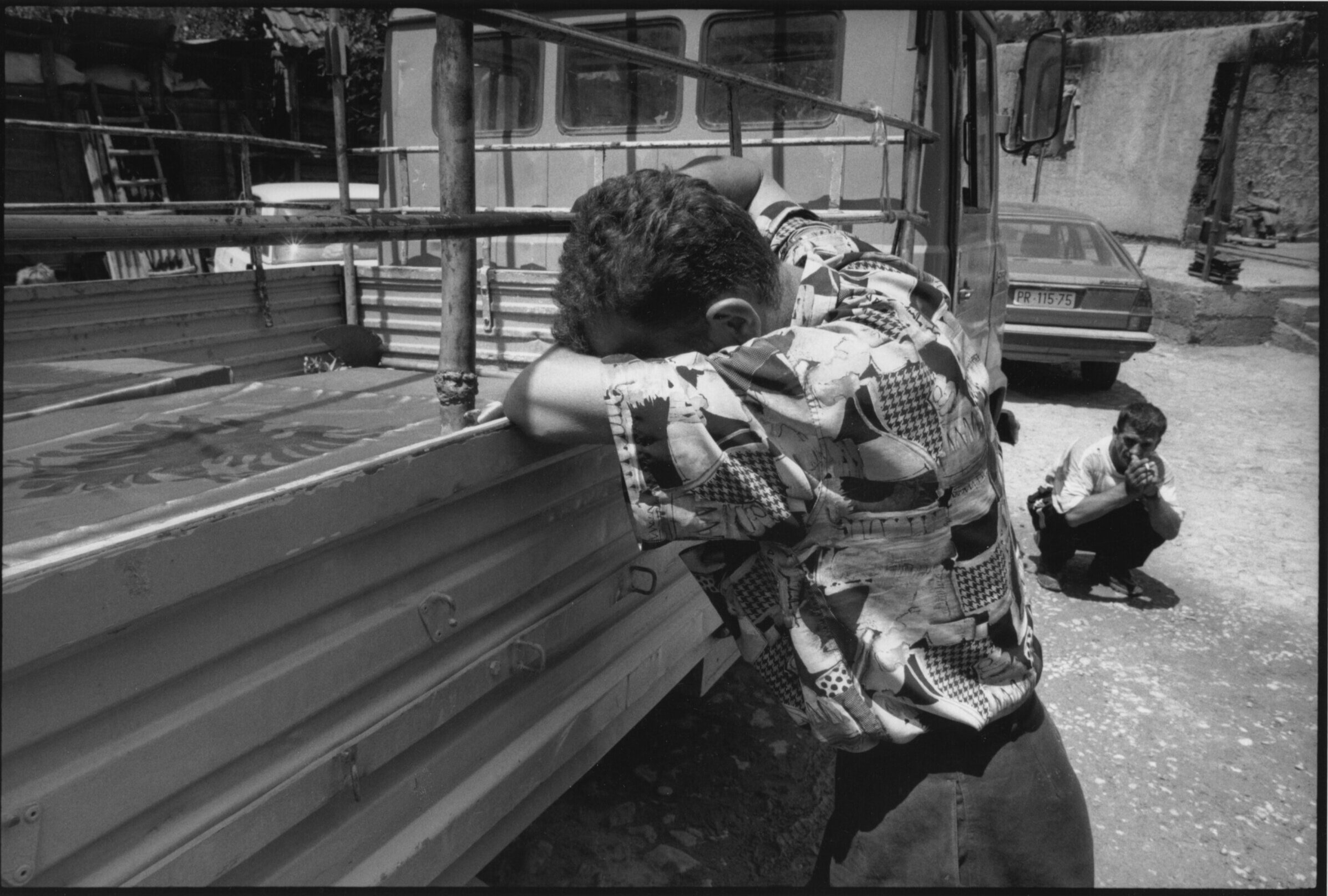
When NATO's bombing campaign started and the Serb military intensified it's operations knowing that their reign was about to end many Kosovar families were separated in the chaos that ensued. Only when the conflict ended and families returned home from neighboring countries could they determine who had survived. The Kbasci family could not account for four of their number: Shaip (66), his wife Sanije (62), their son Ramadan (41) and grandson Floren (6 months). Shortly after making it home they heard from neighbours that their kin had been executed and buried in a field on their farm. These photographs show the men of the family exhuming the bodies and taking them to the women for reburial.
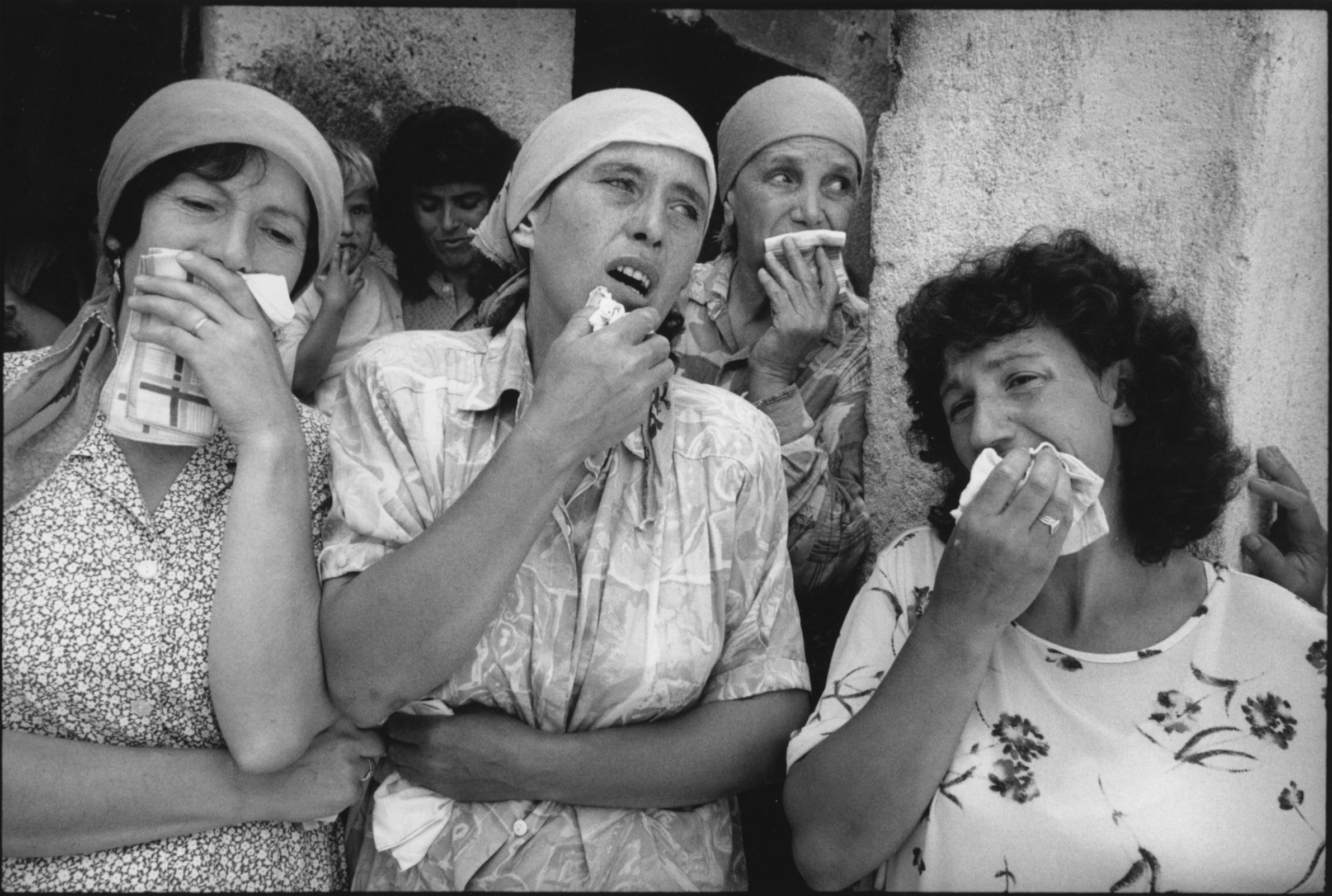
When NATO's bombing campaign started and the Serb military intensified it's operations knowing that their reign was about to end many Kosovar families were separated in the chaos that ensued. Only when the conflict ended and families returned home from neighboring countries could they determine who had survived. The Kbasci family could not account for four of their number: Shaip (66), his wife Sanije (62), their son Ramadan (41) and grandson Floren (6 months). Shortly after making it home they heard from neighbours that their kin had been executed and buried in a field on their farm. These photographs show the men of the family exhuming the bodies and taking them to the women for reburial.
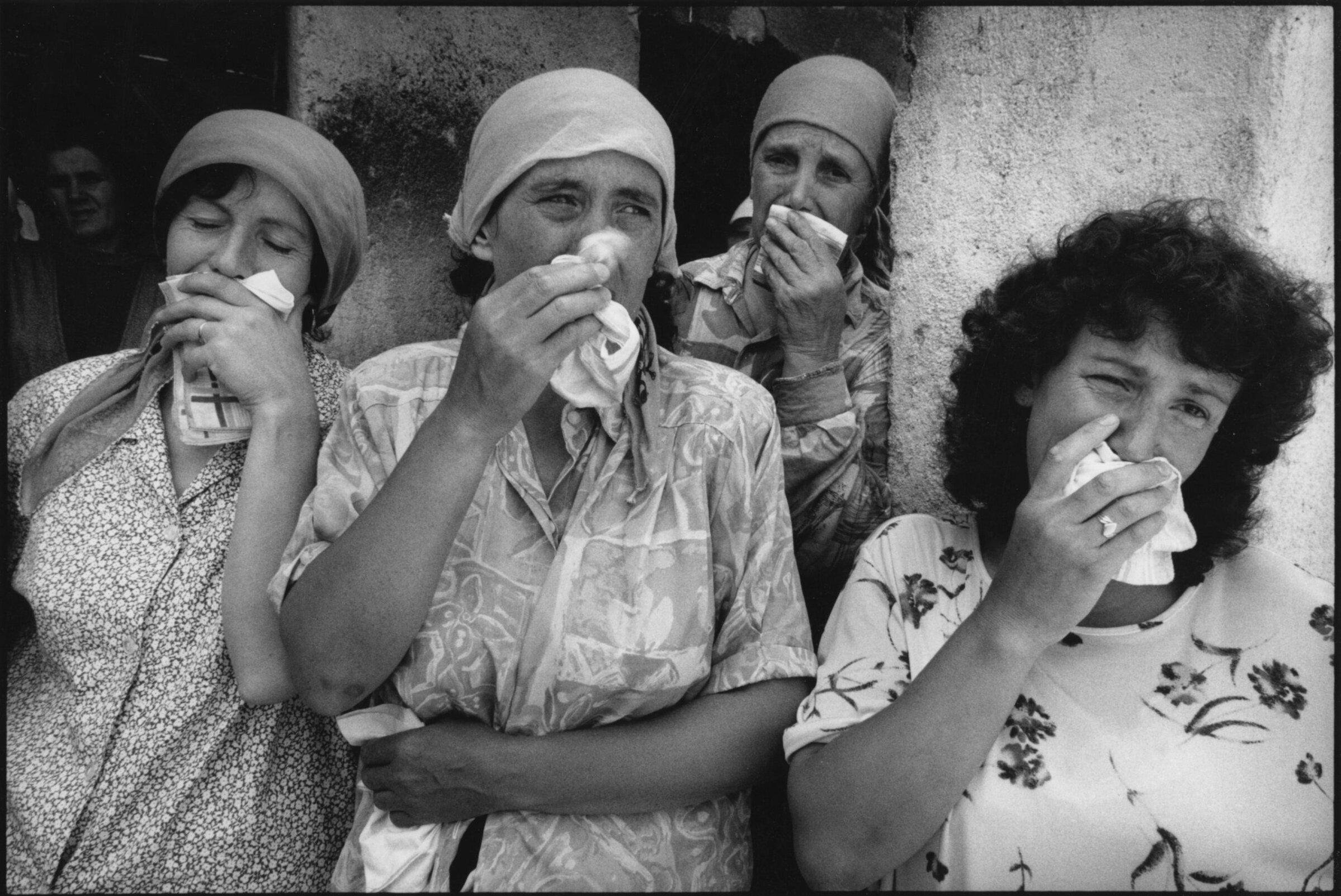
When NATO's bombing campaign started and the Serb military intensified it's operations knowing that their reign was about to end many Kosovar families were separated in the chaos that ensued. Only when the conflict ended and families returned home from neighboring countries could they determine who had survived. The Kbasci family could not account for four of their number: Shaip (66), his wife Sanije (62), their son Ramadan (41) and grandson Floren (6 months). Shortly after making it home they heard from neighbours that their kin had been executed and buried in a field on their farm. These photographs show the men of the family exhuming the bodies and taking them to the women for reburial.
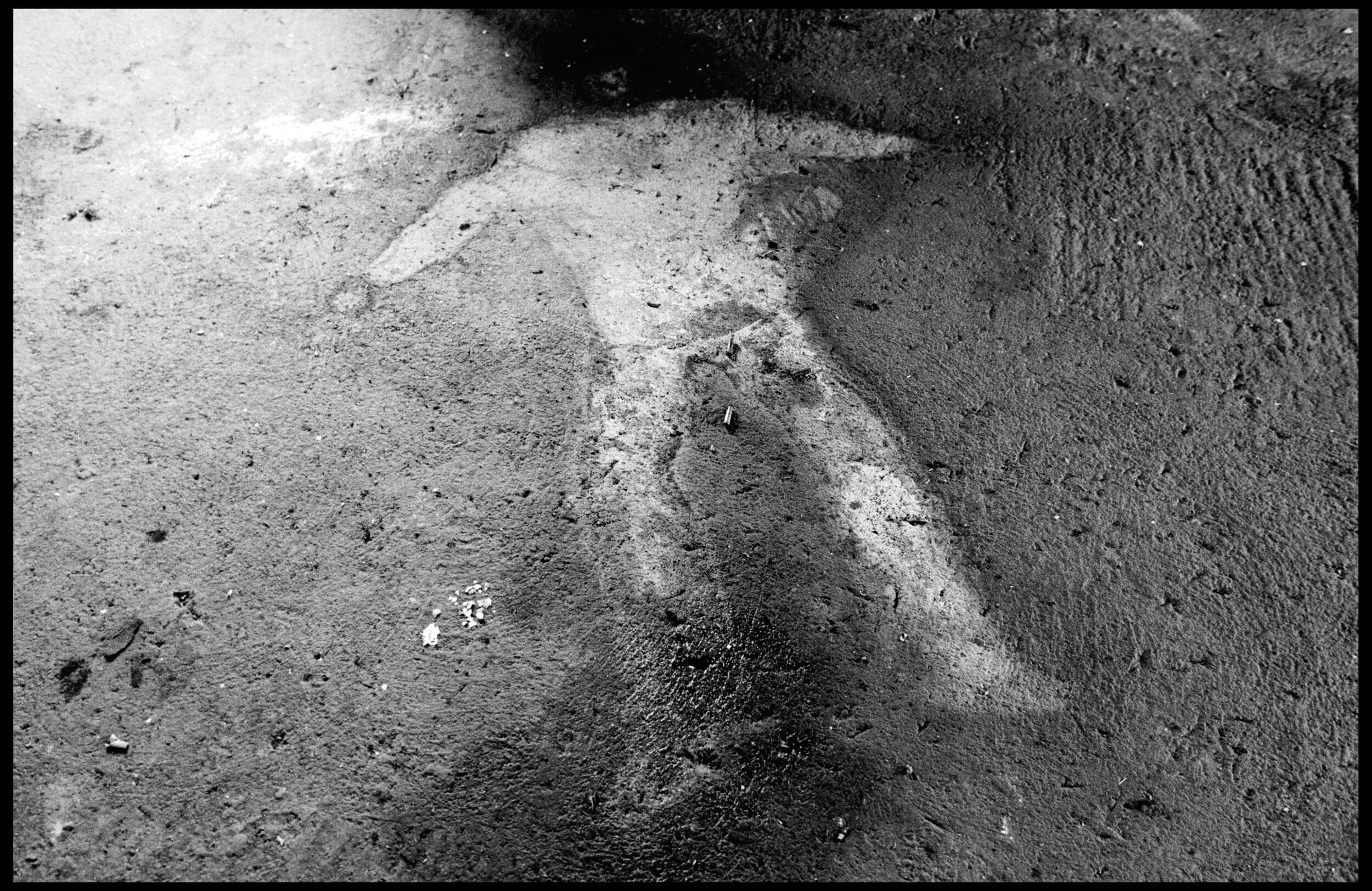
The outline of the body of Kola Dusmani, who according to criminal investigators, was killed by Russian para-militiaries in a small village outside the ancient market town of Gjakove. After he was murdered, the house where the crime was committed was burned. Soot and ashes covered the body. After the war was over and the family that owned he home returned, they removed Dusmani's remains from their living room. This outline could not be removed. Today it is concealed by a carpet.


































Publications
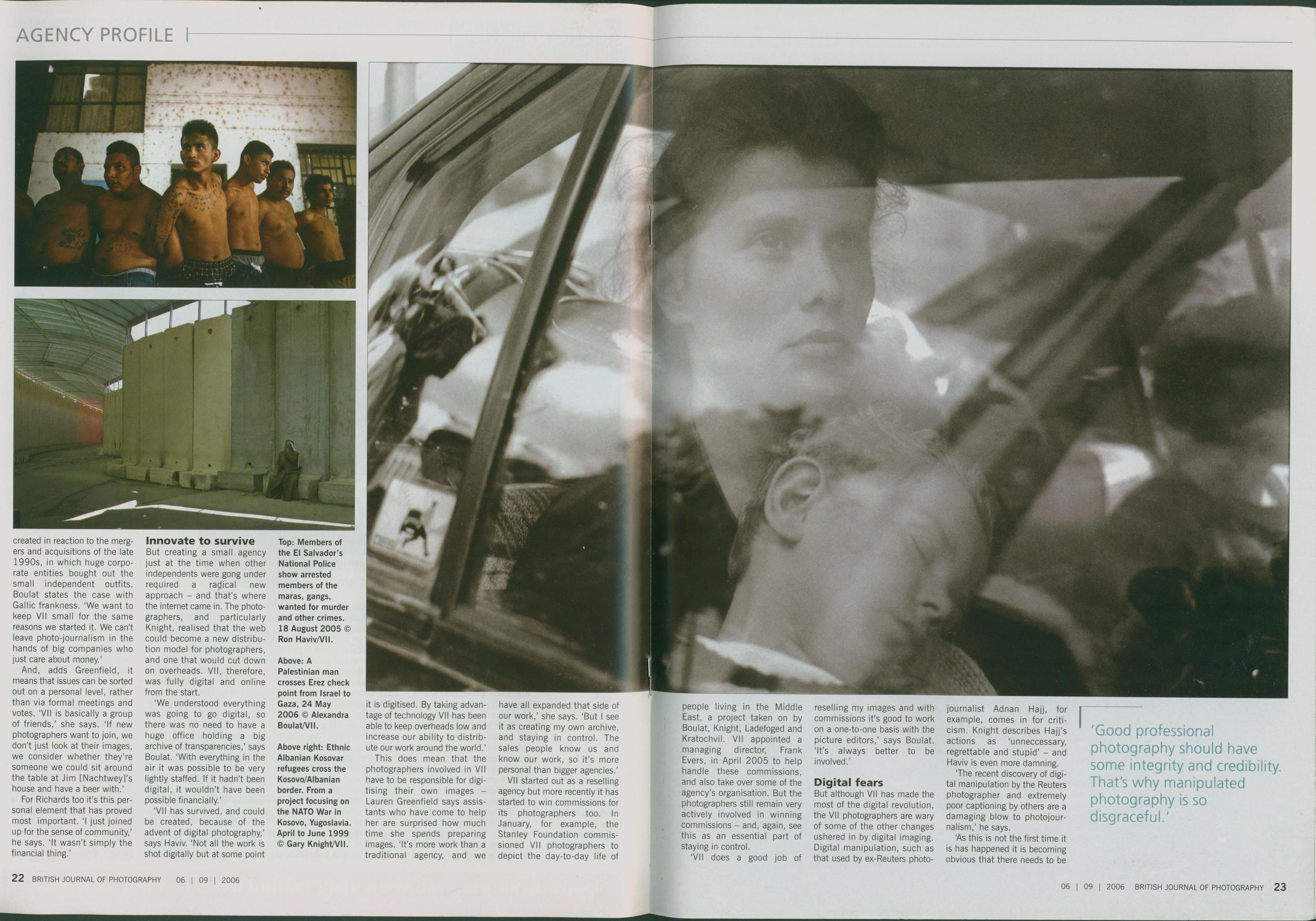
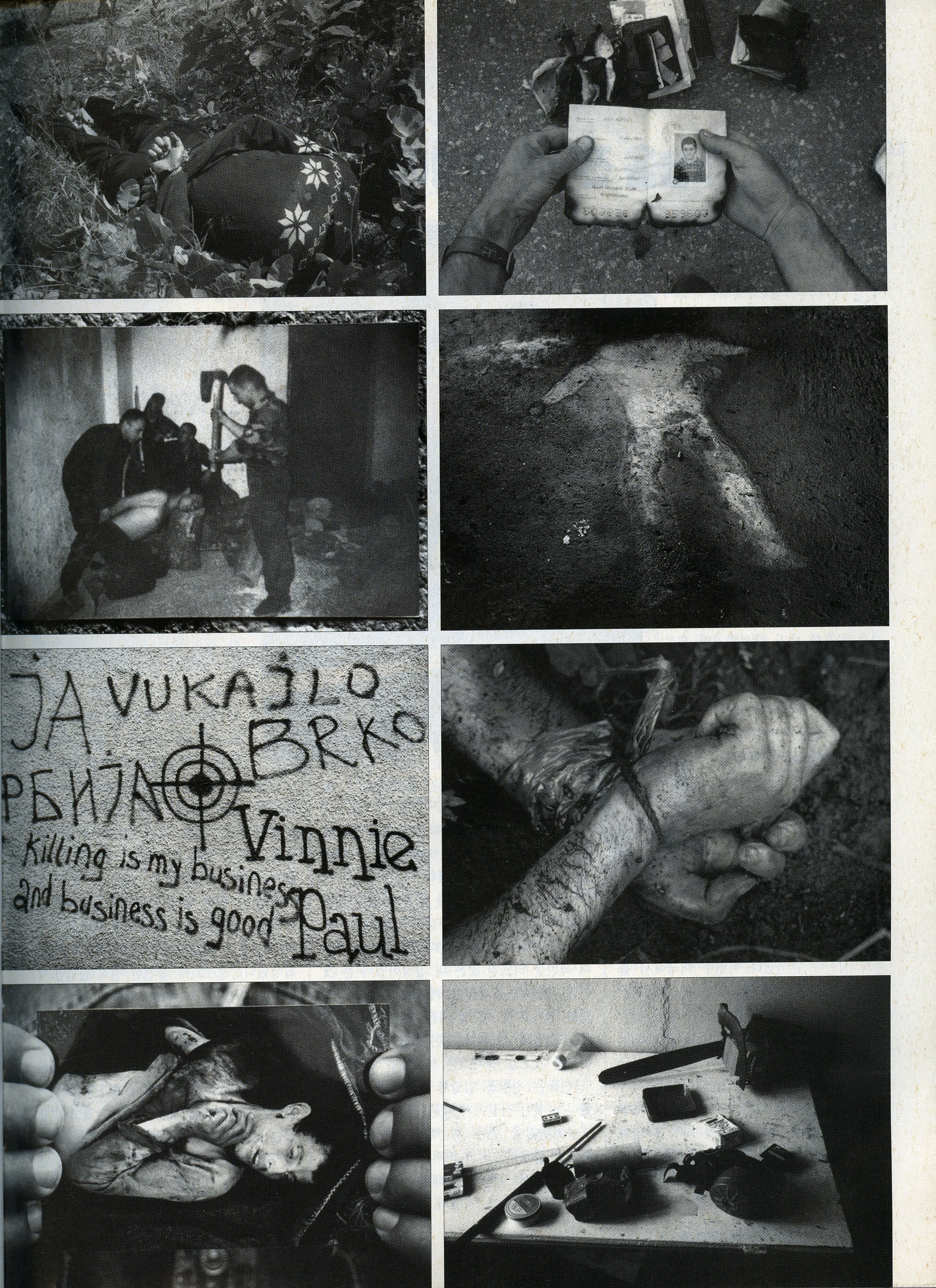
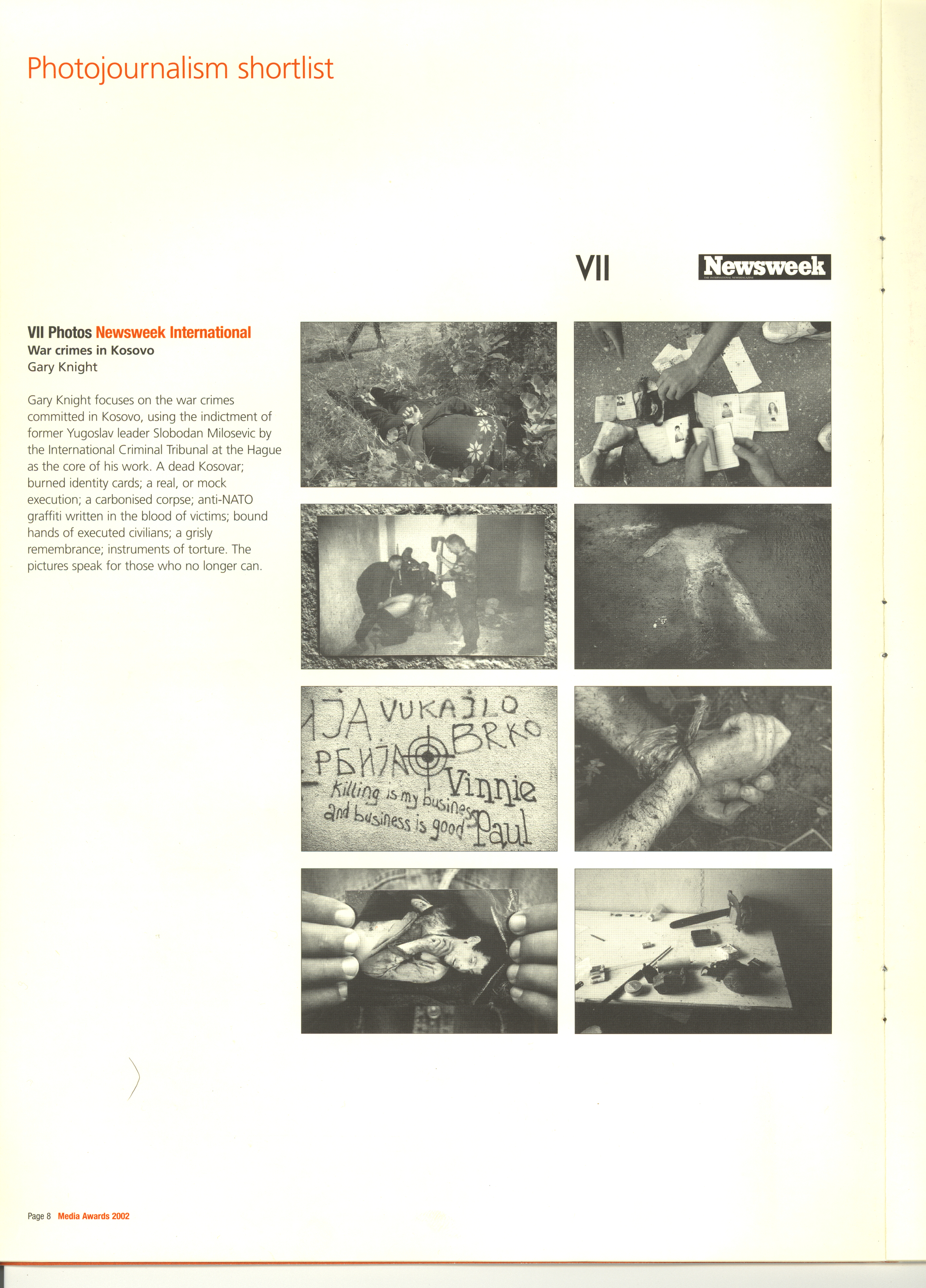

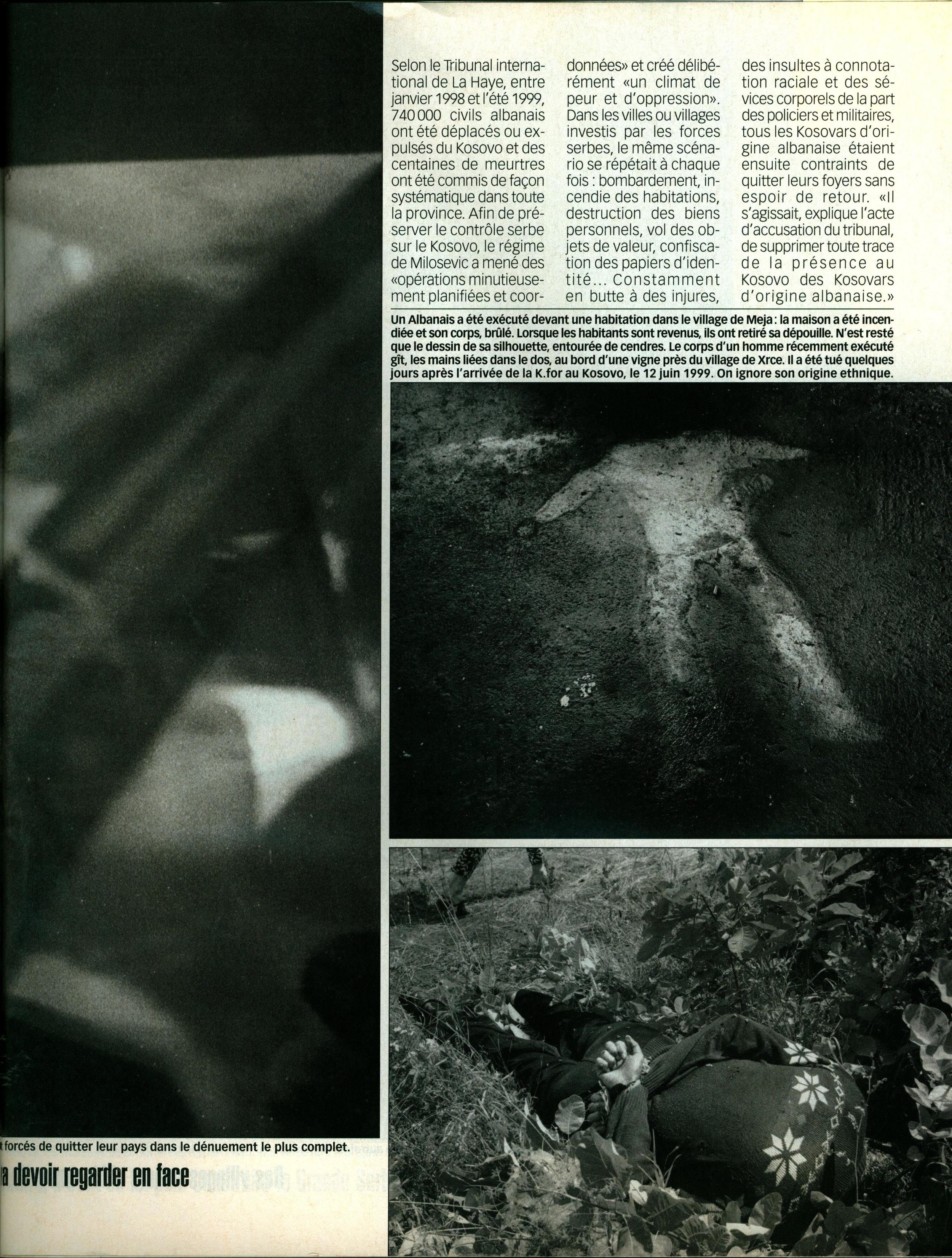
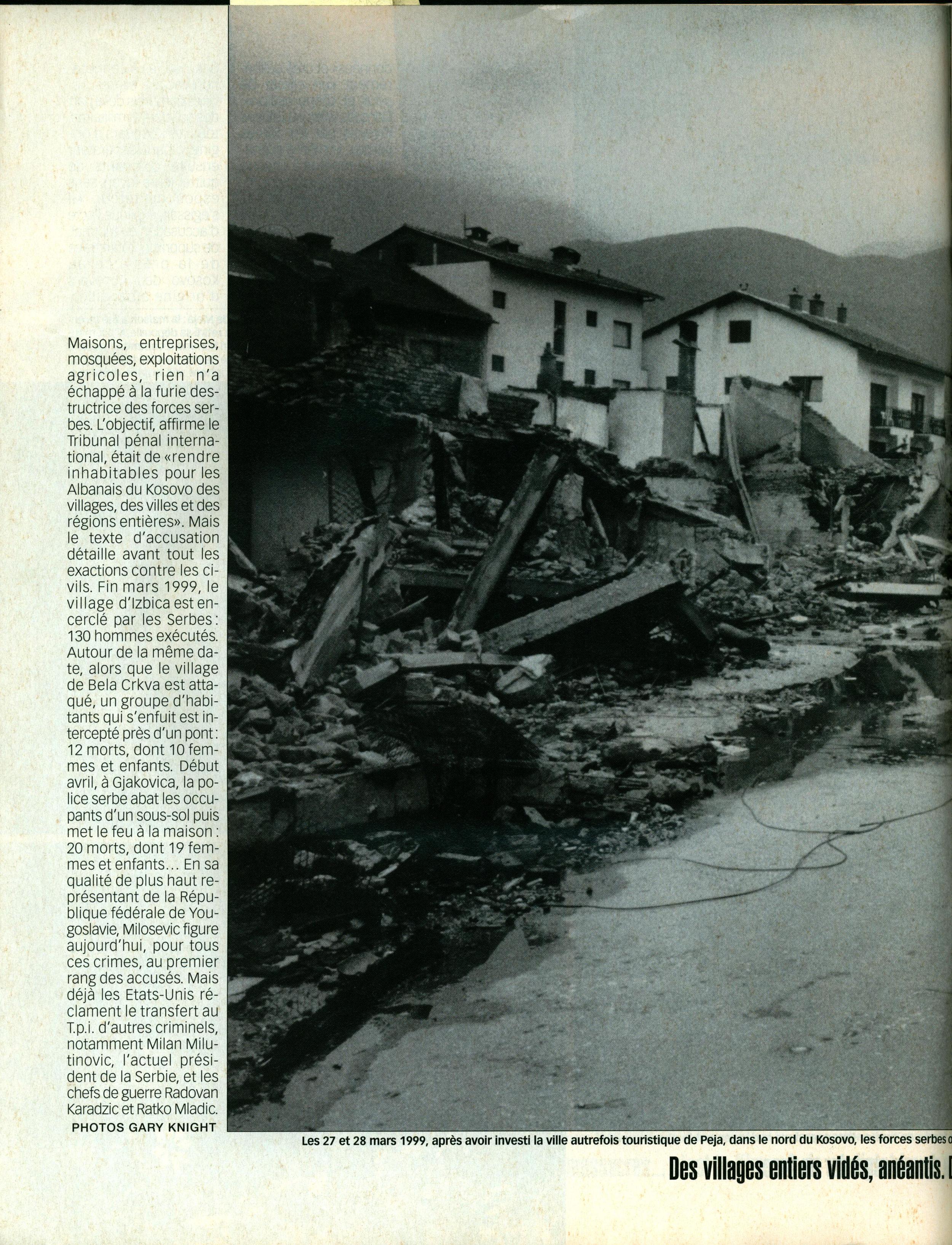
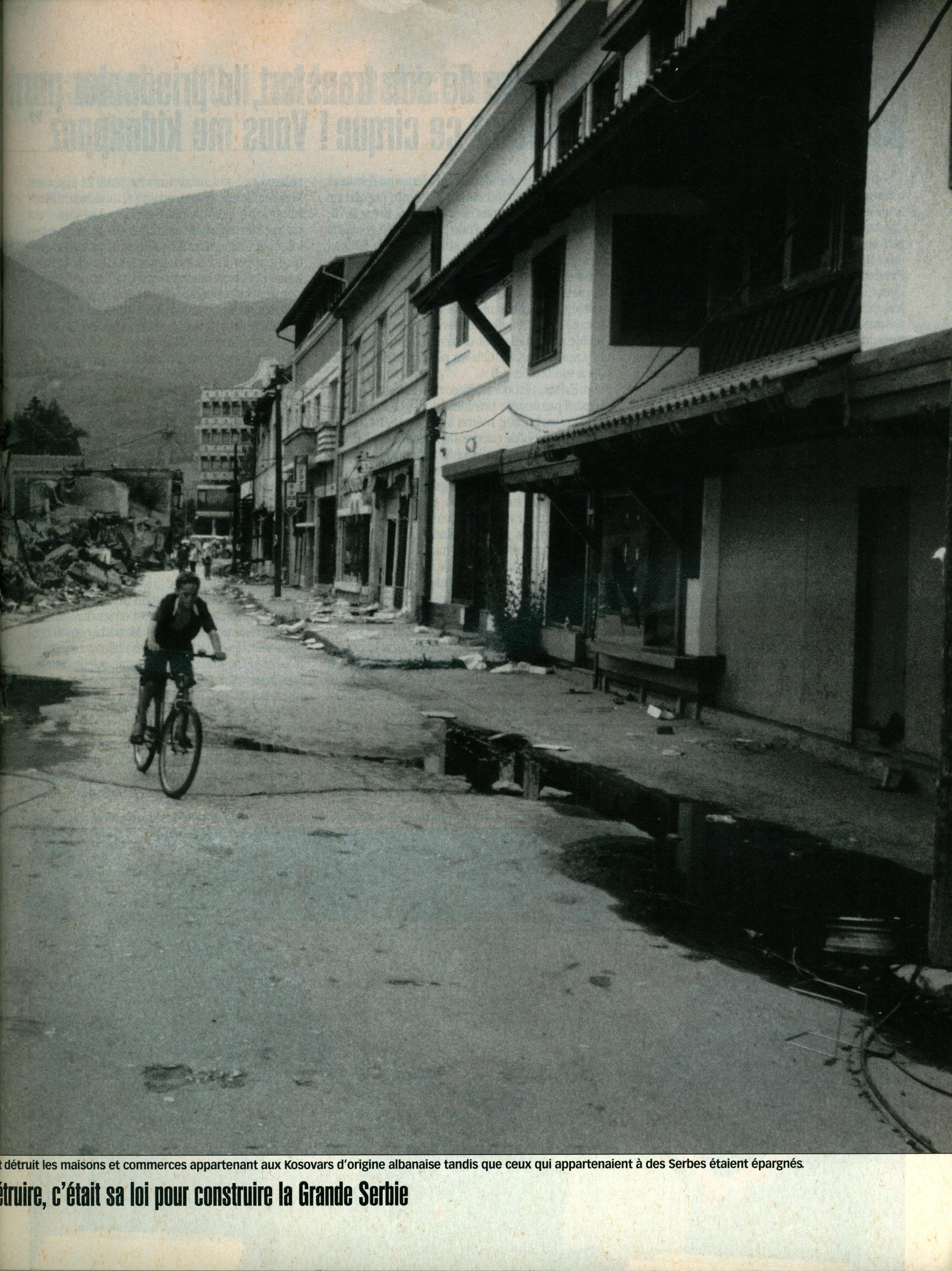
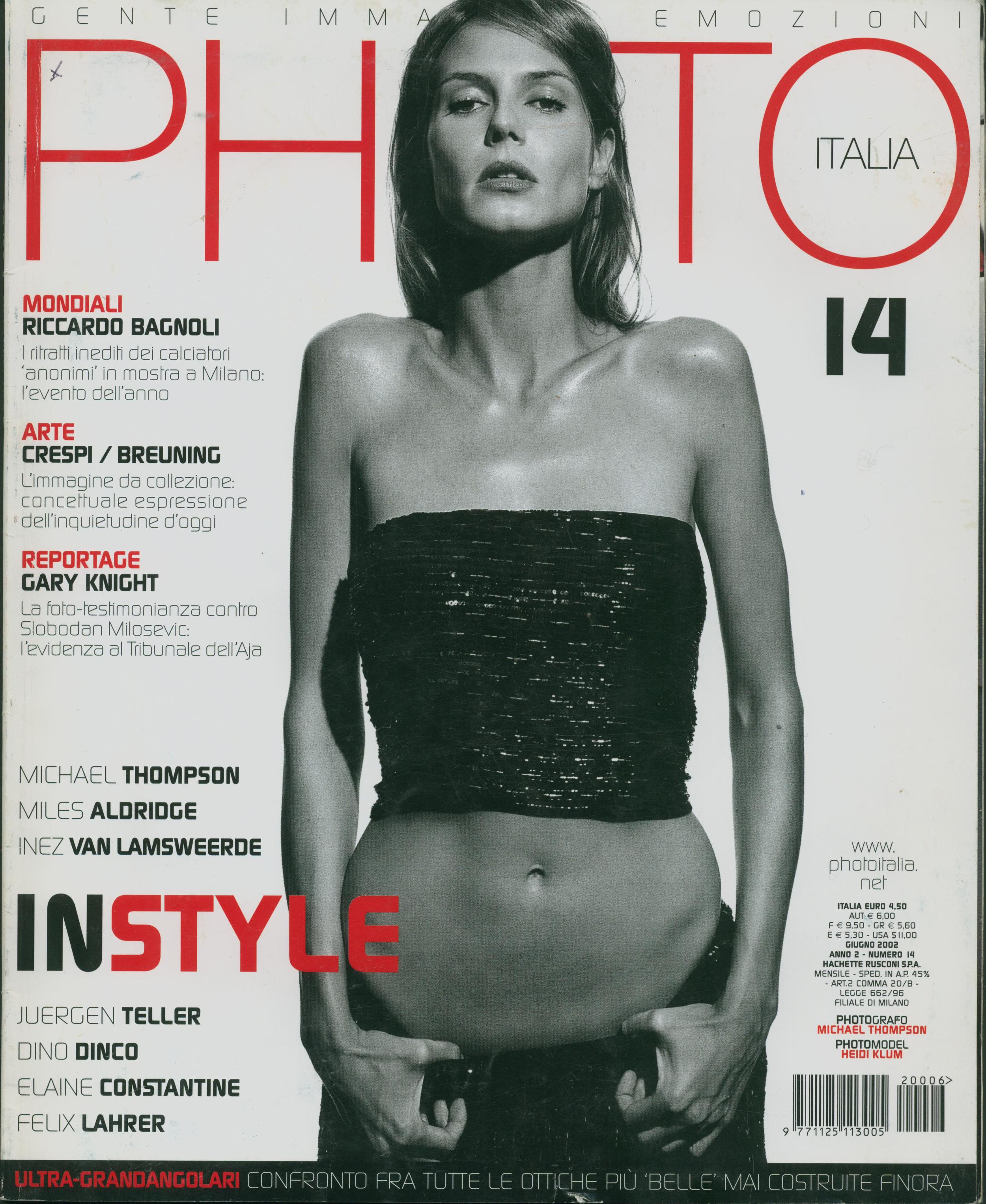
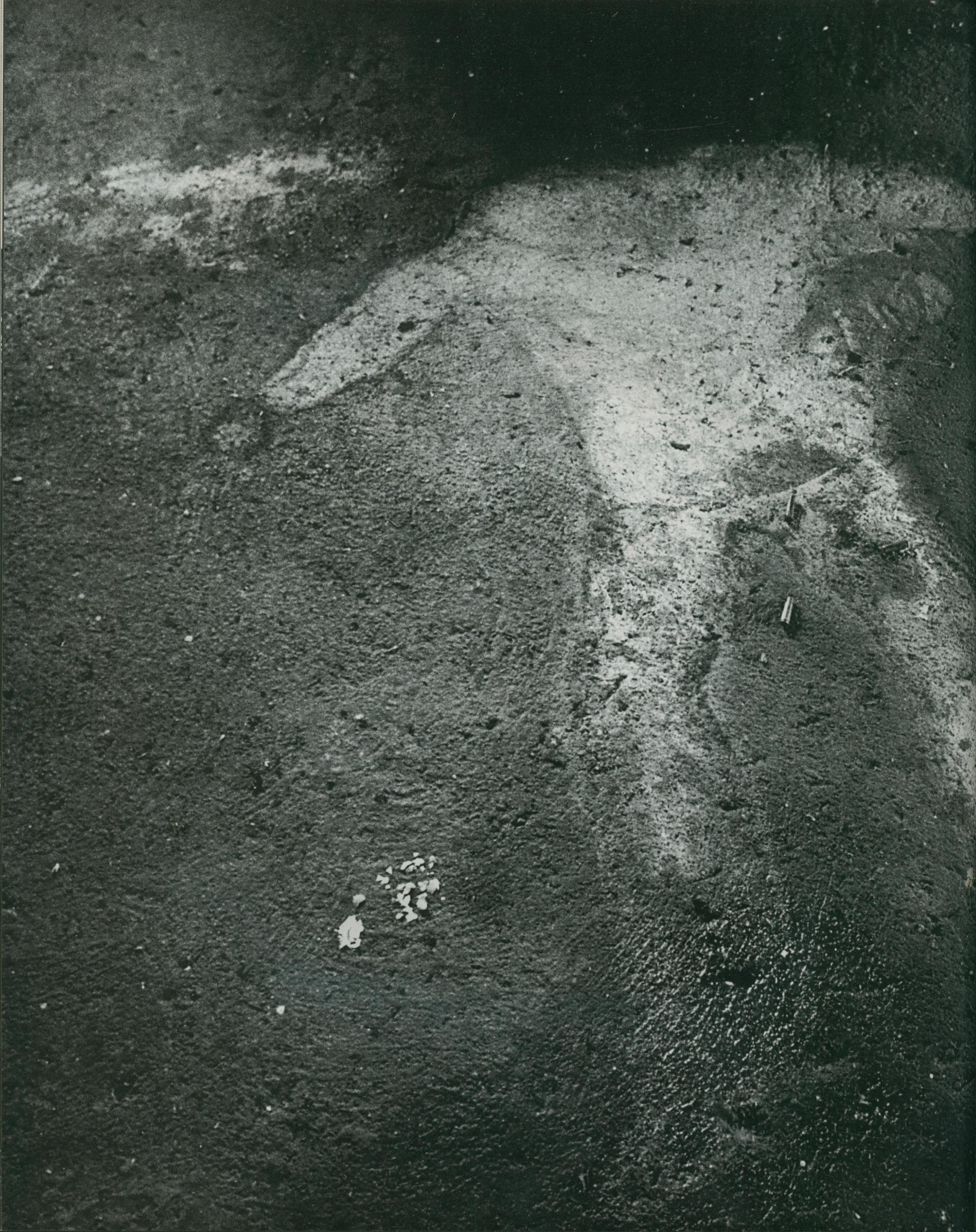
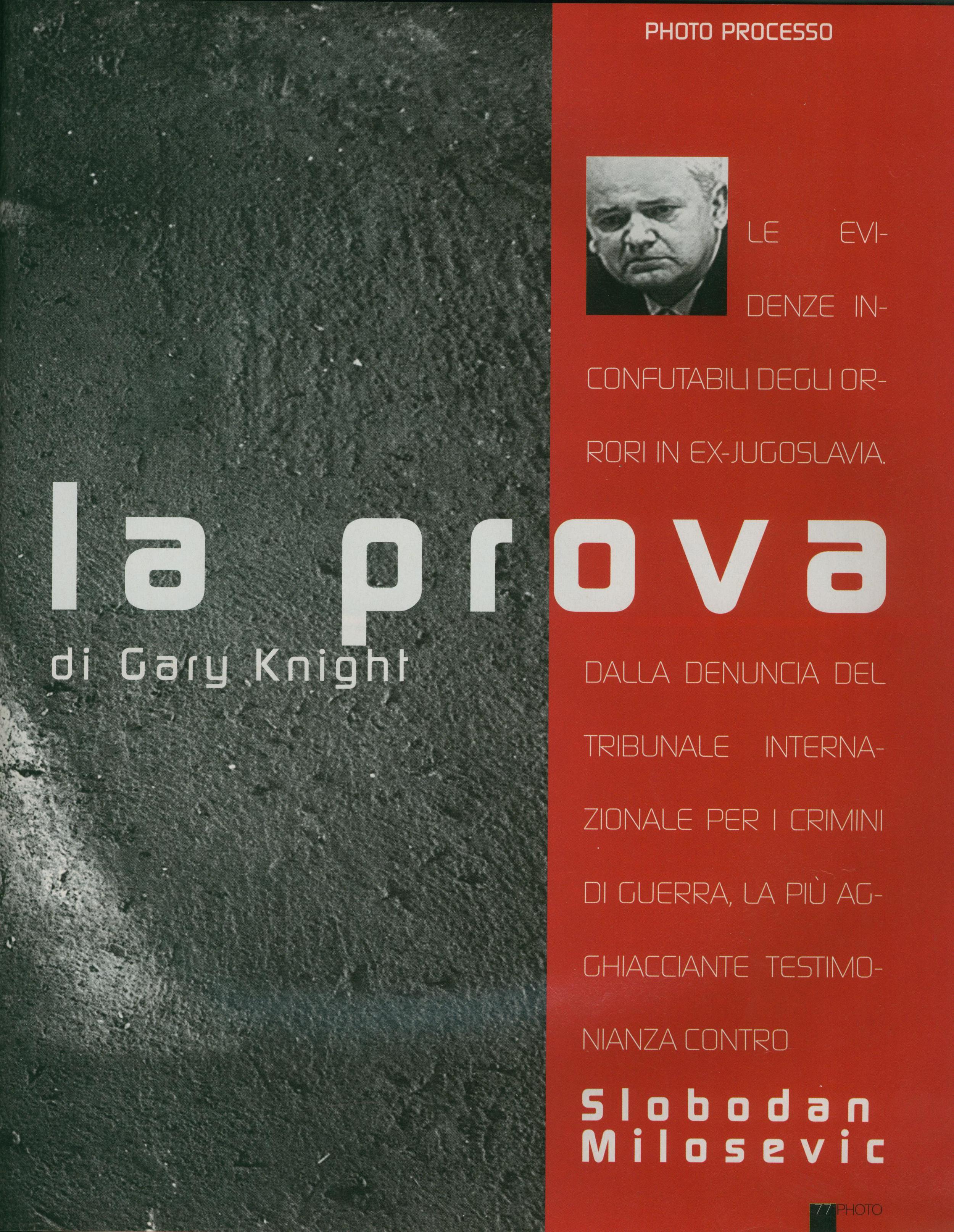
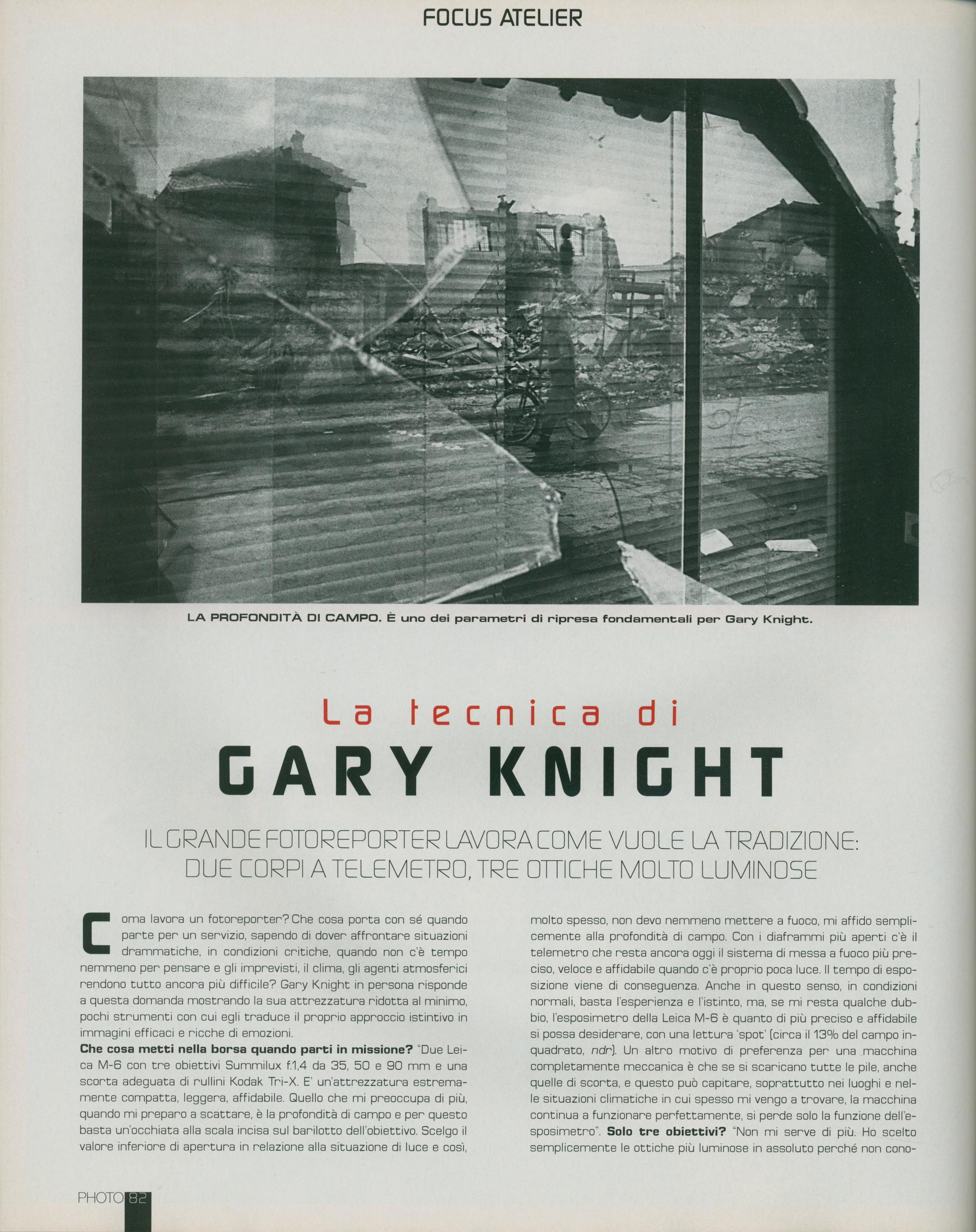
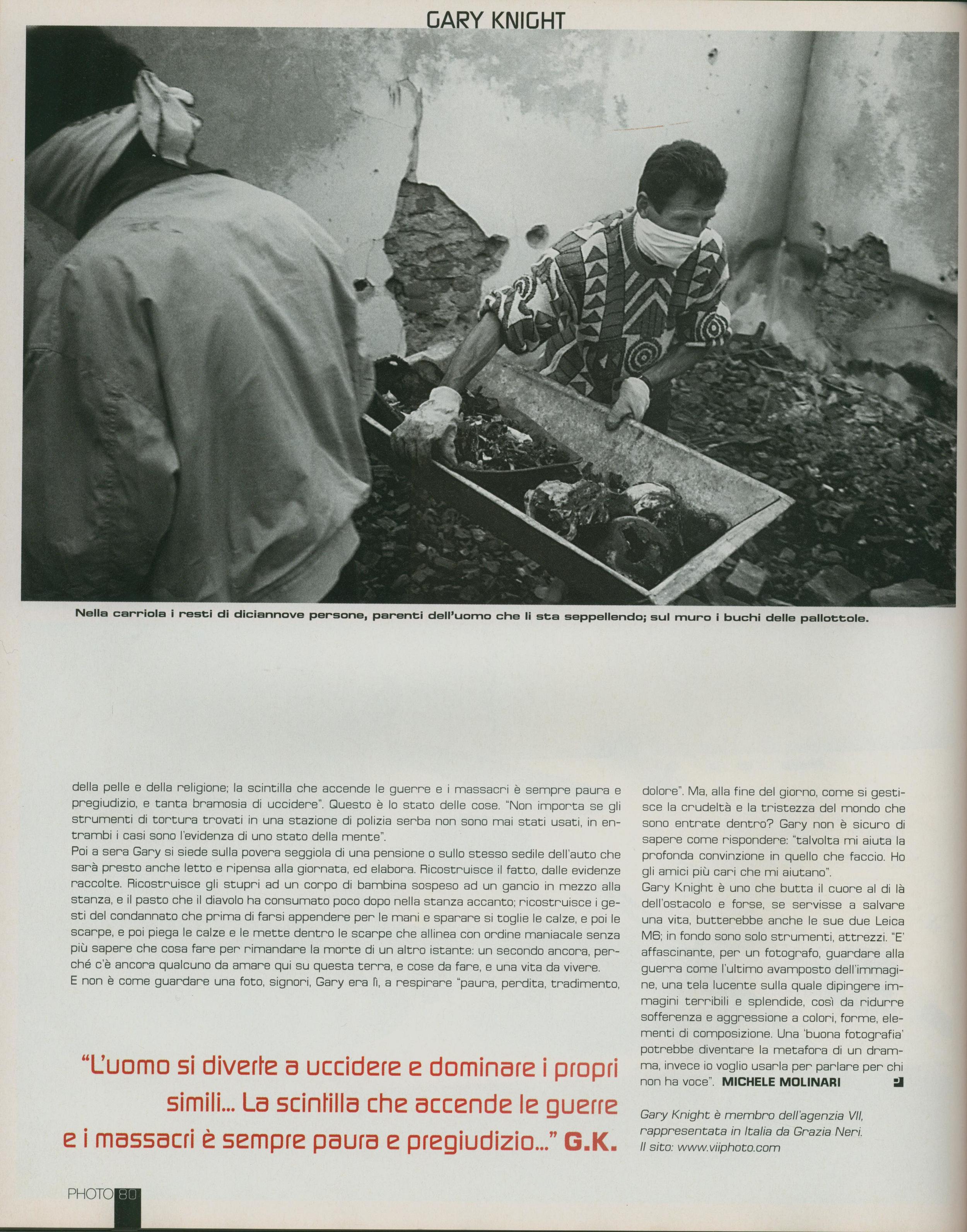
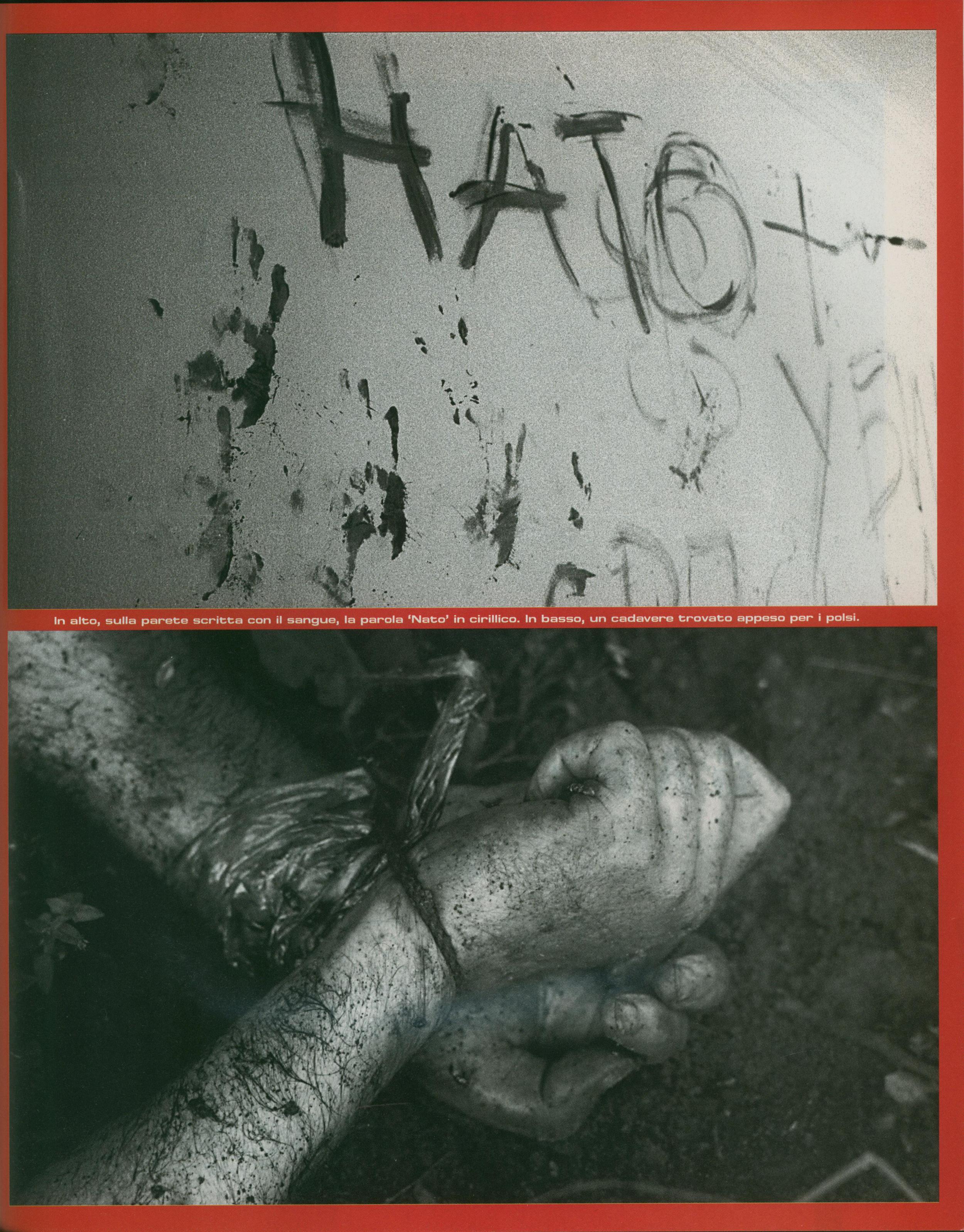
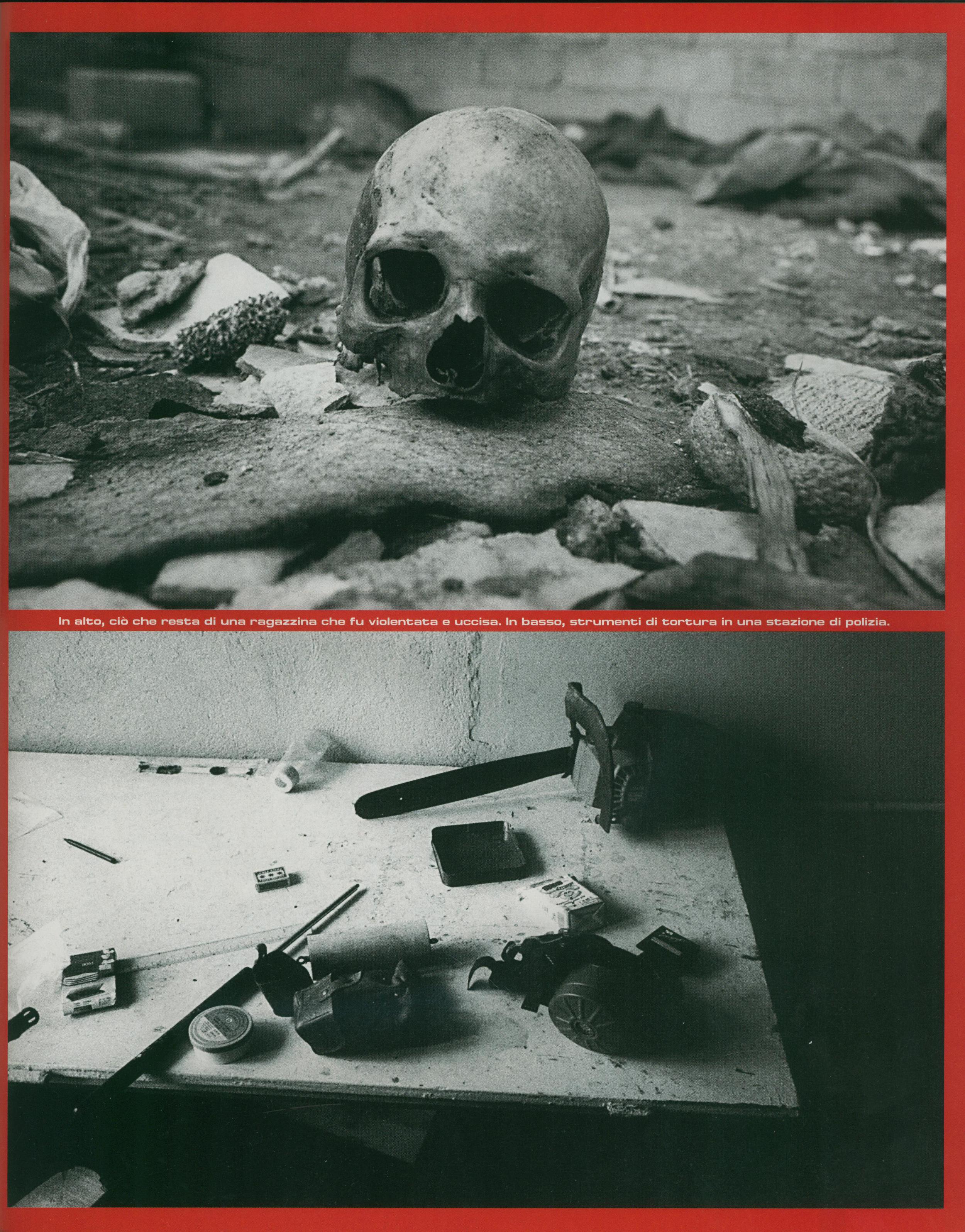
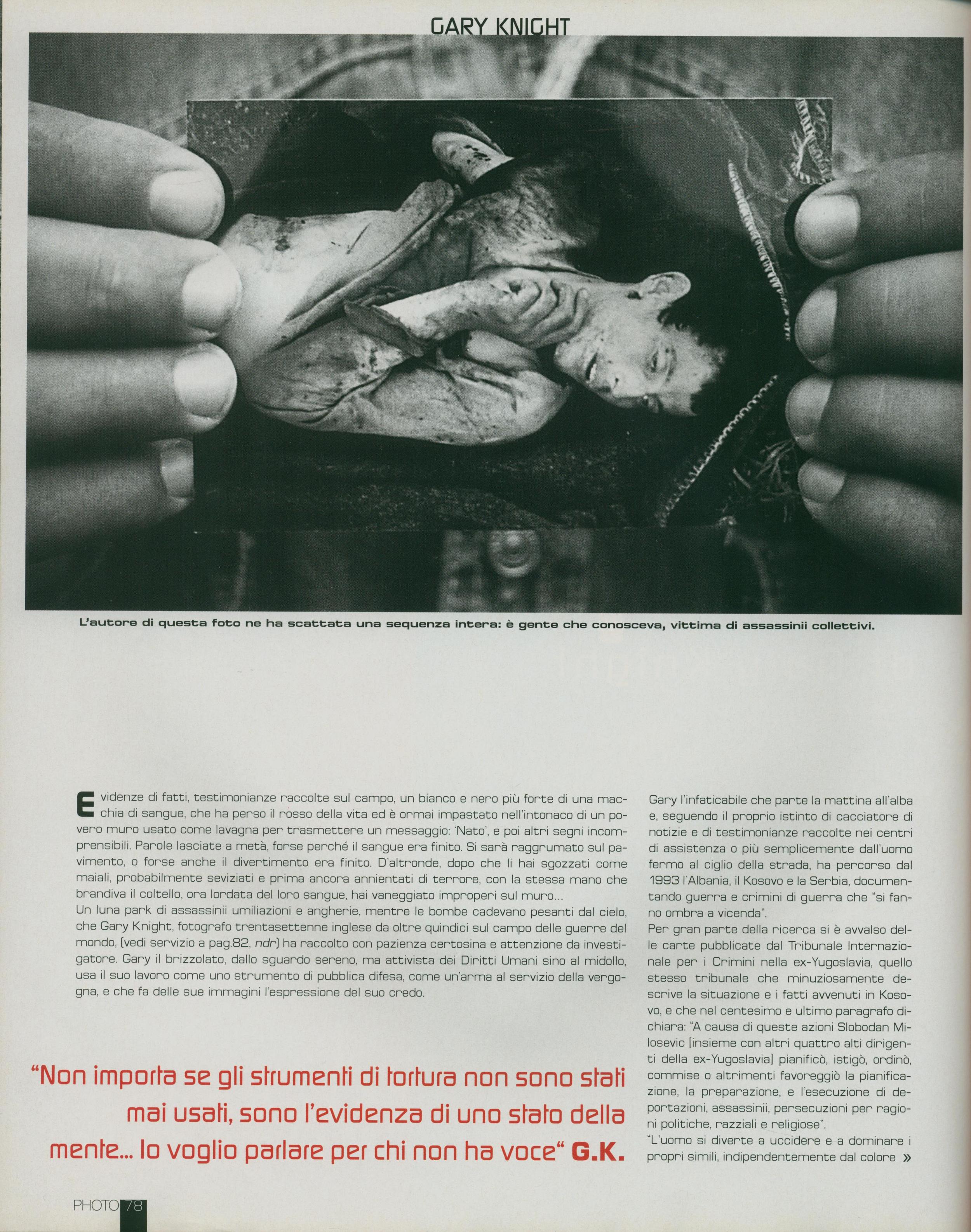
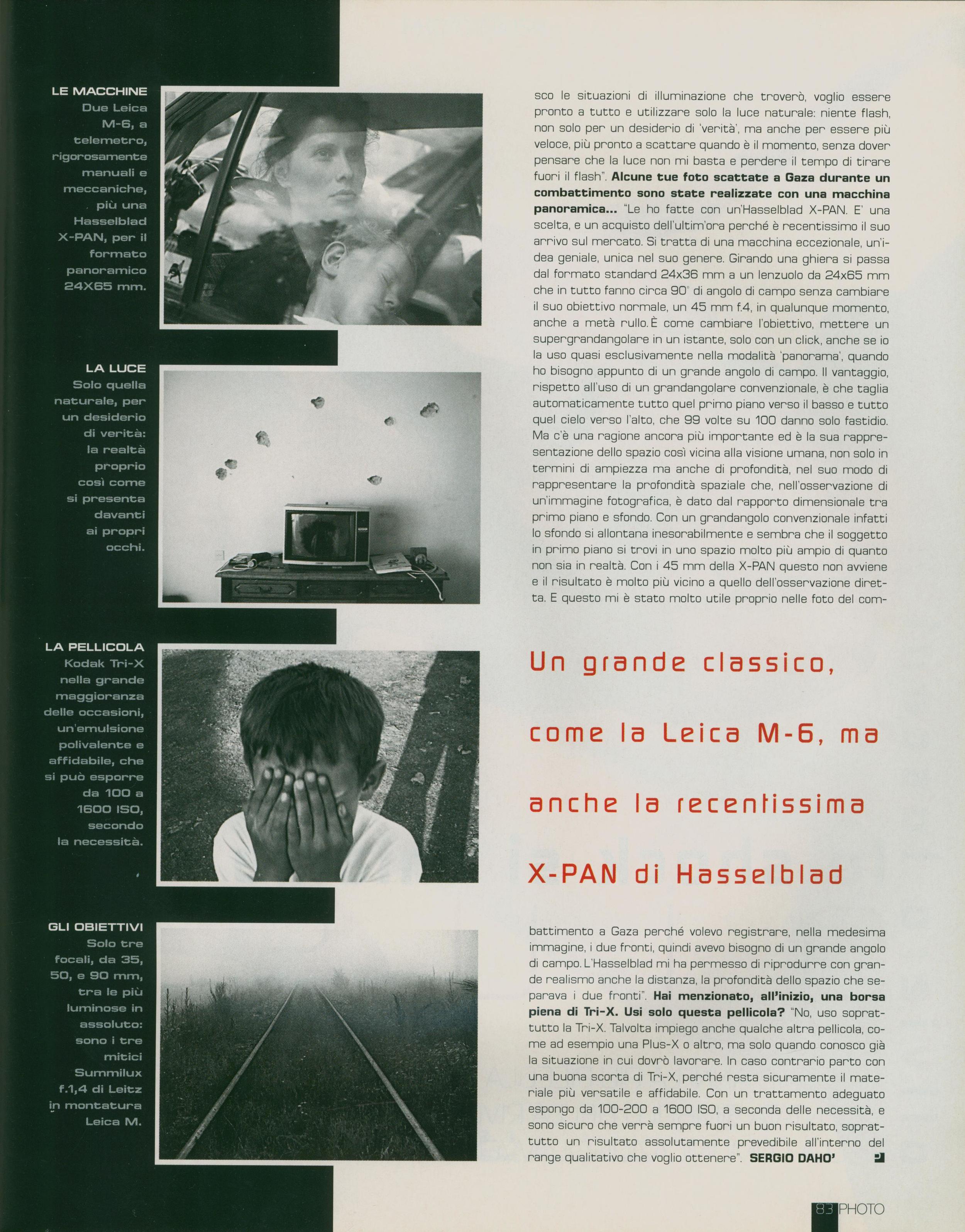
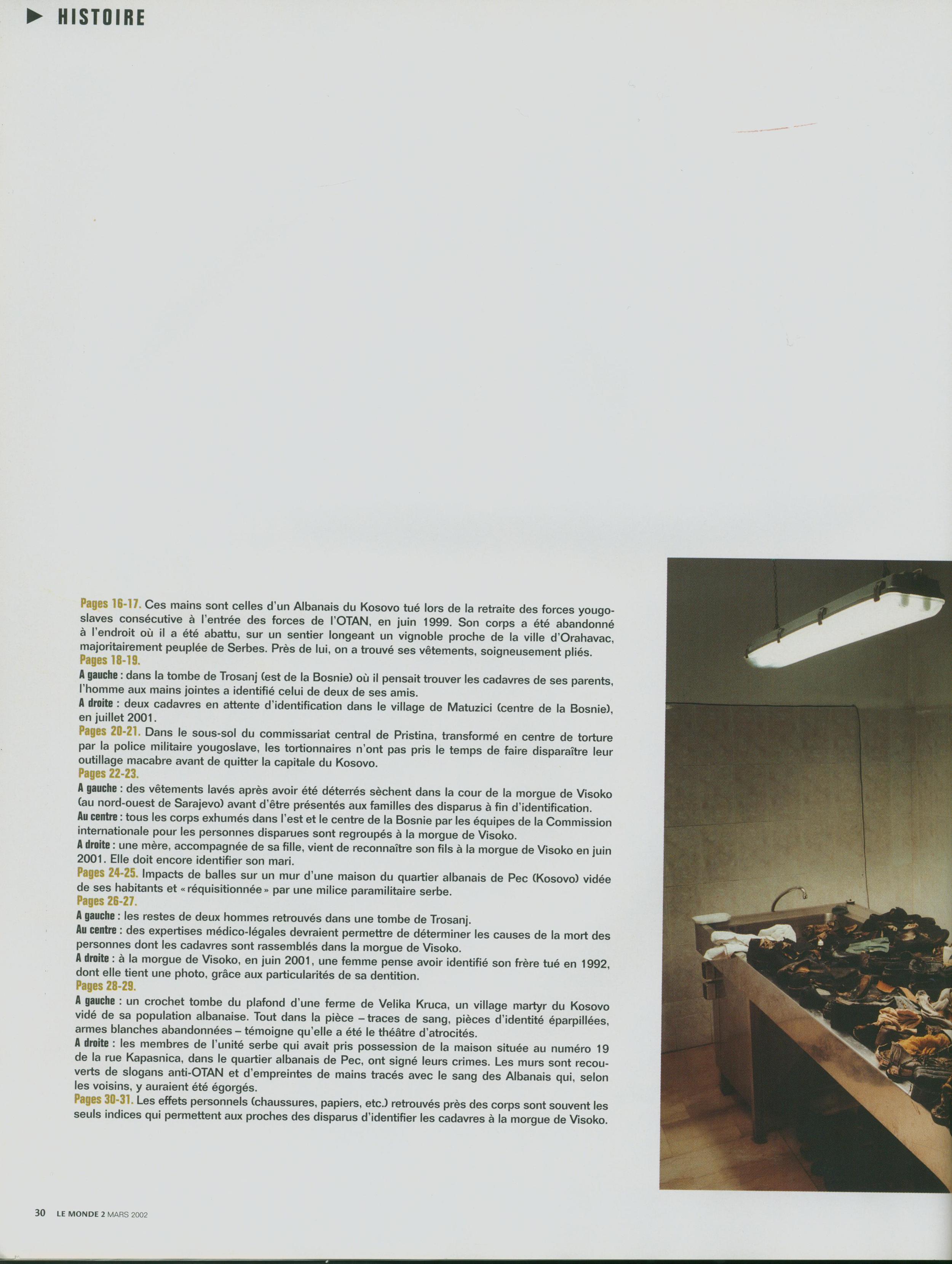
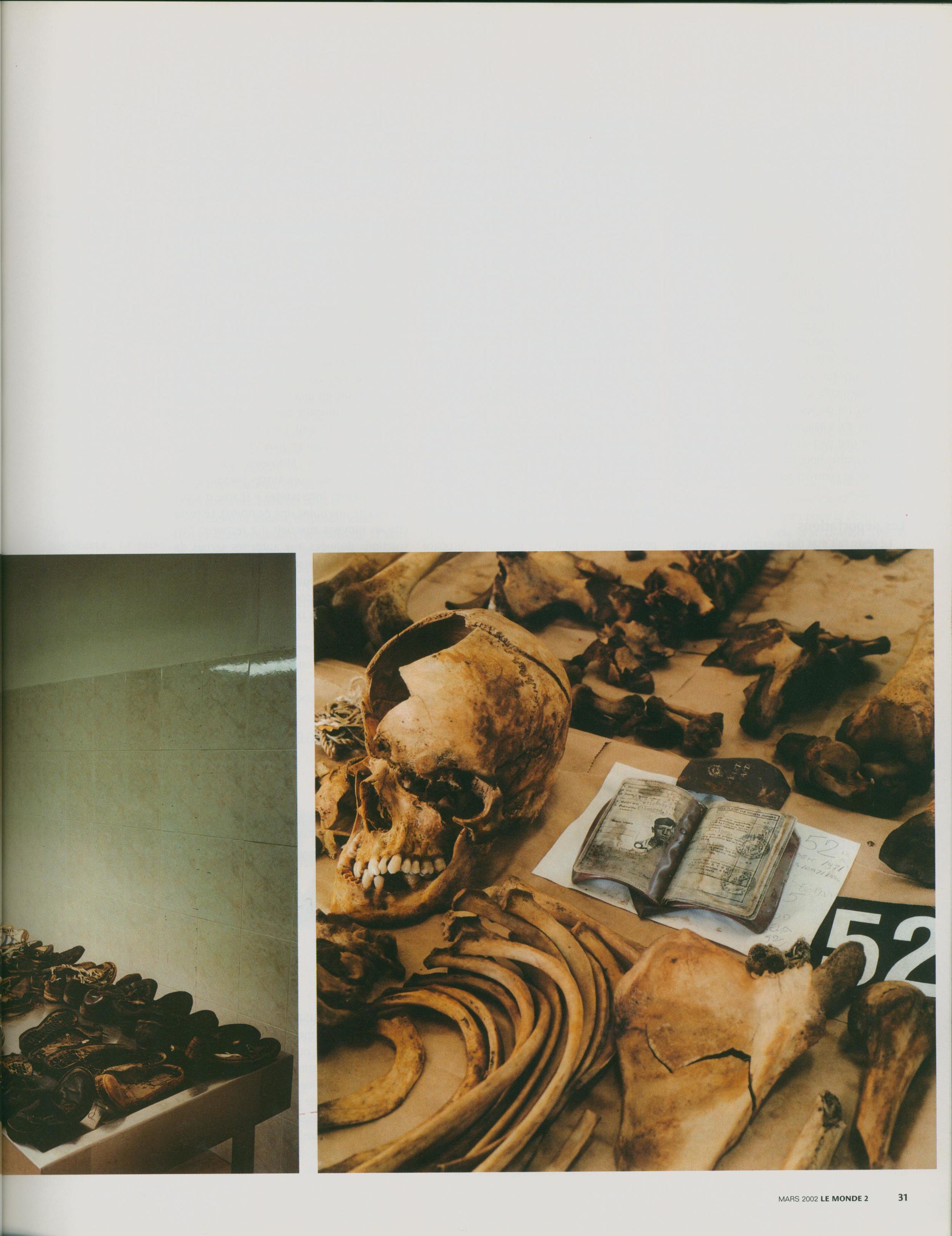
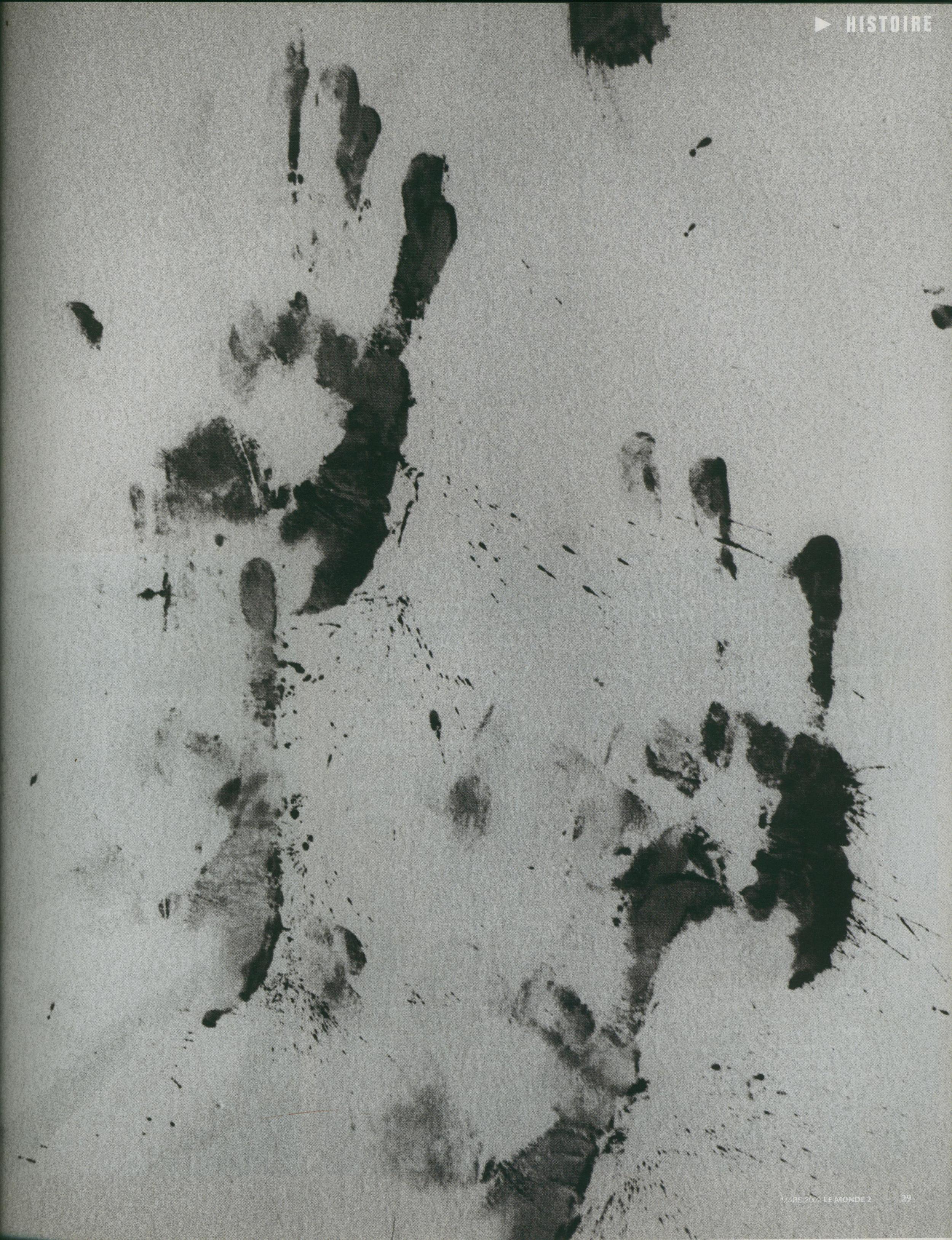
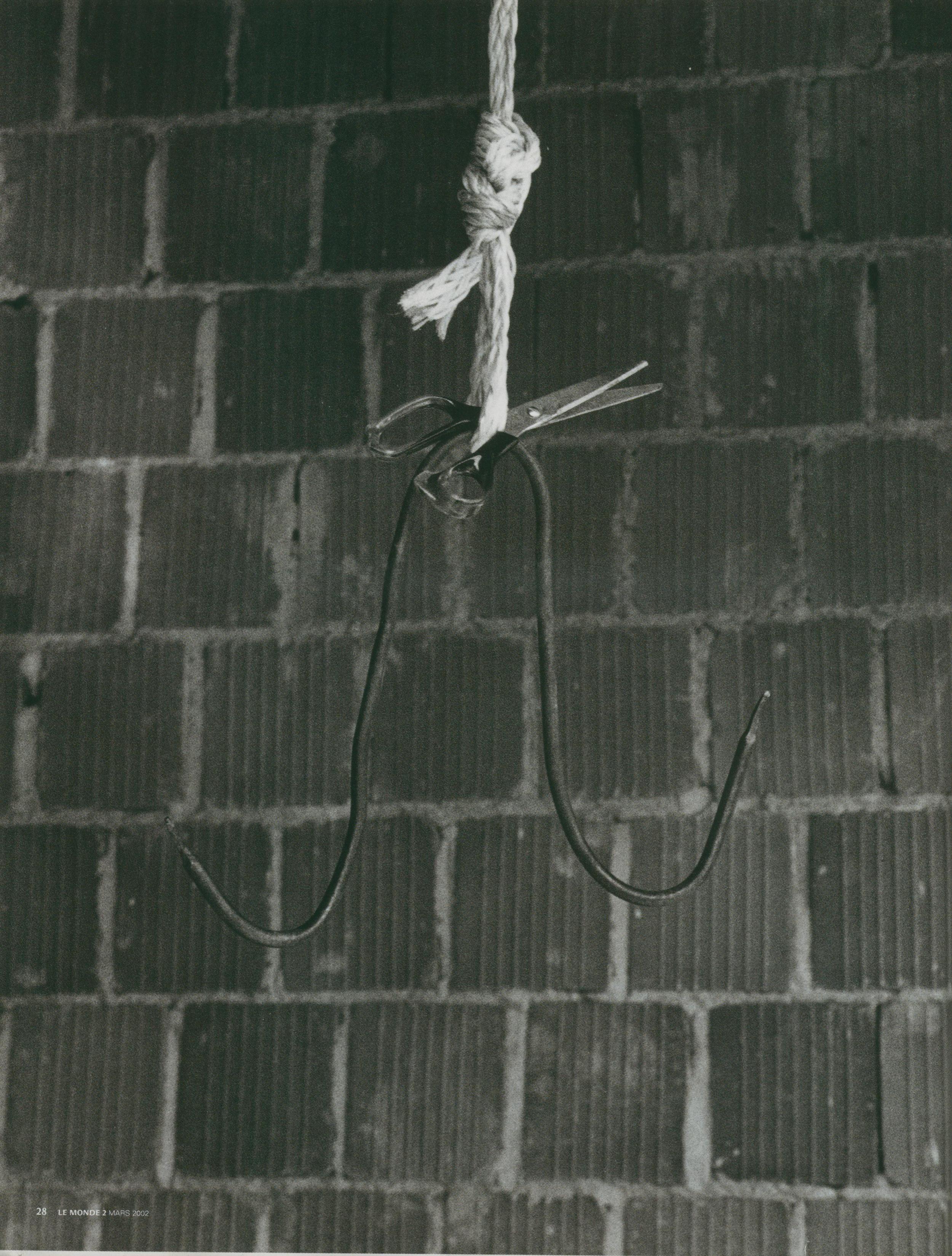
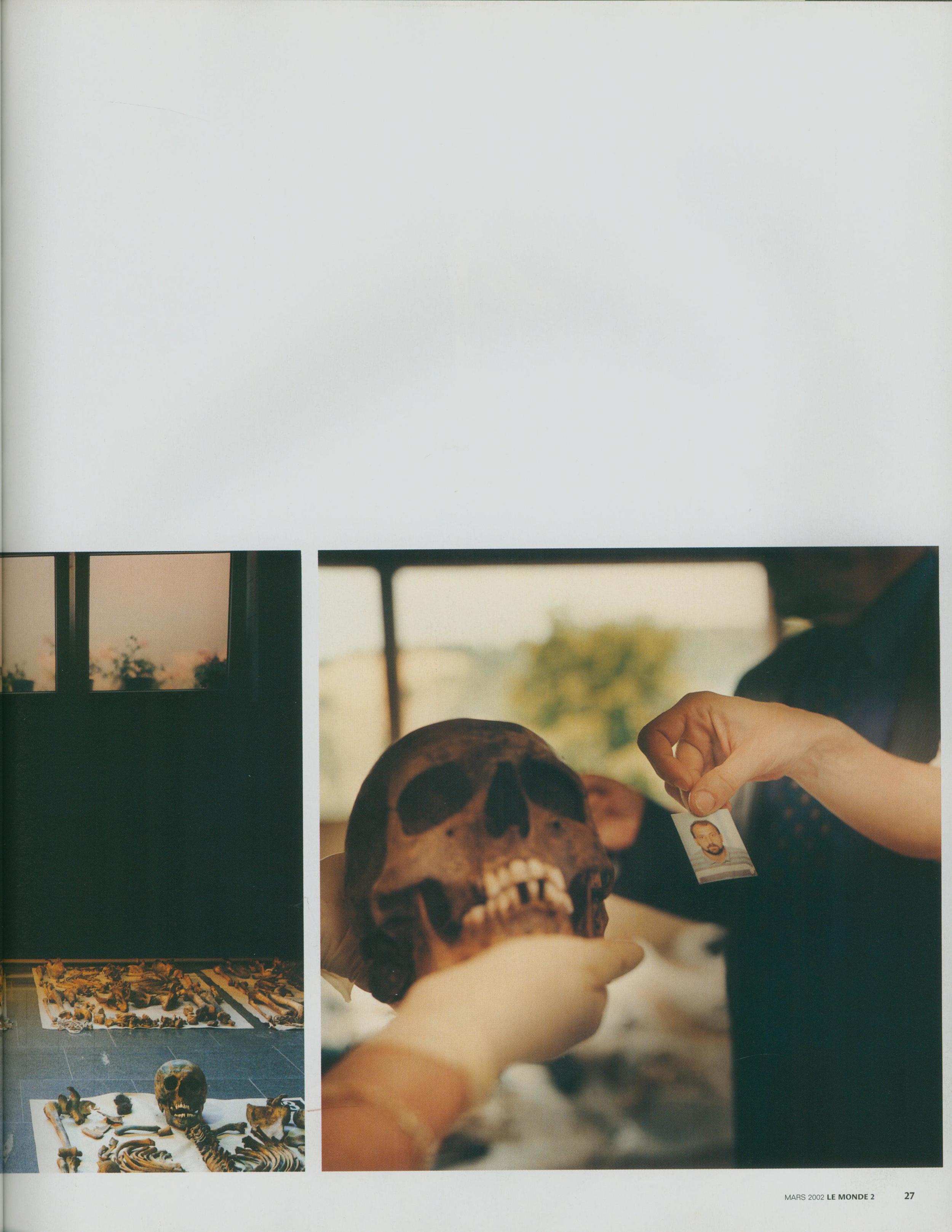
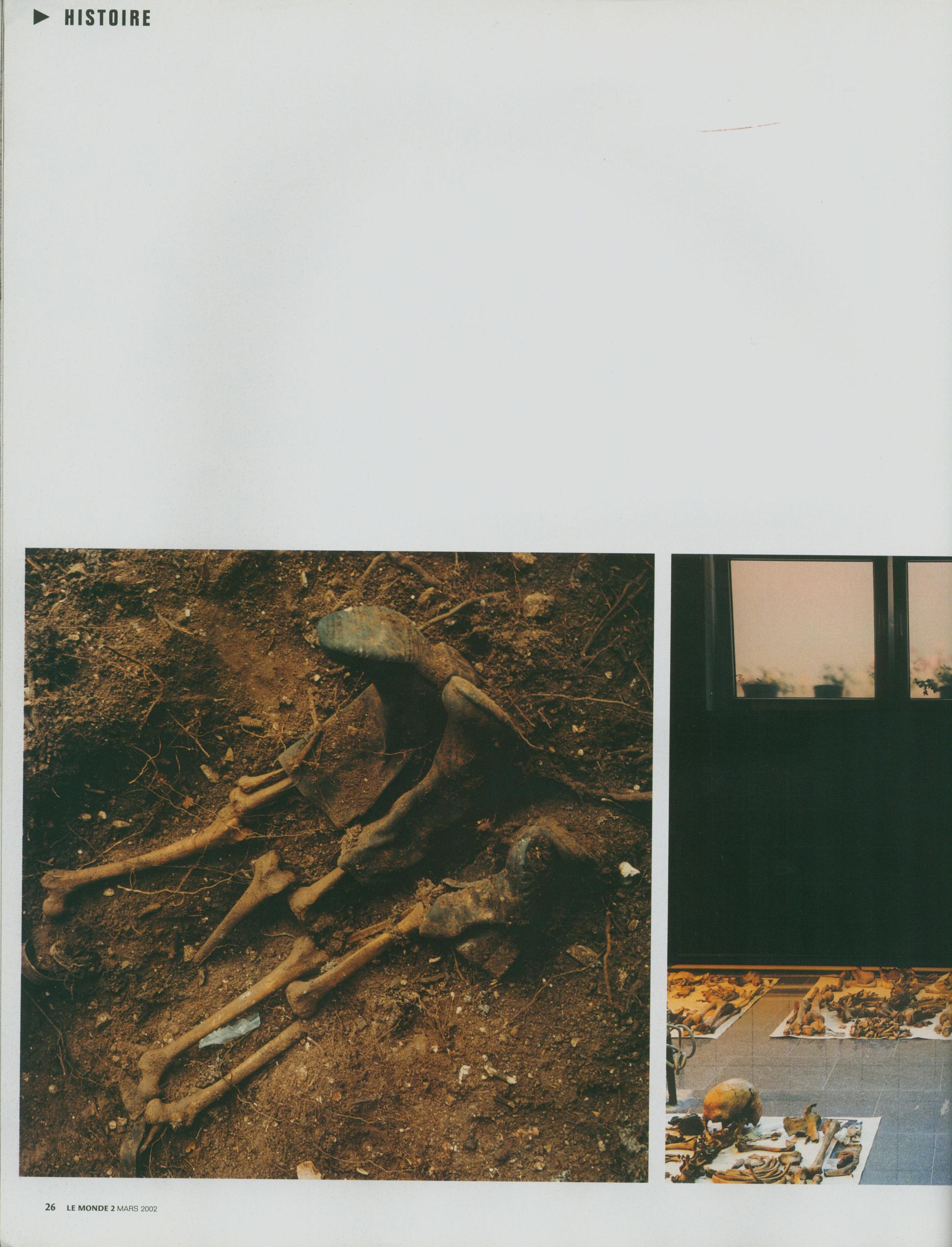
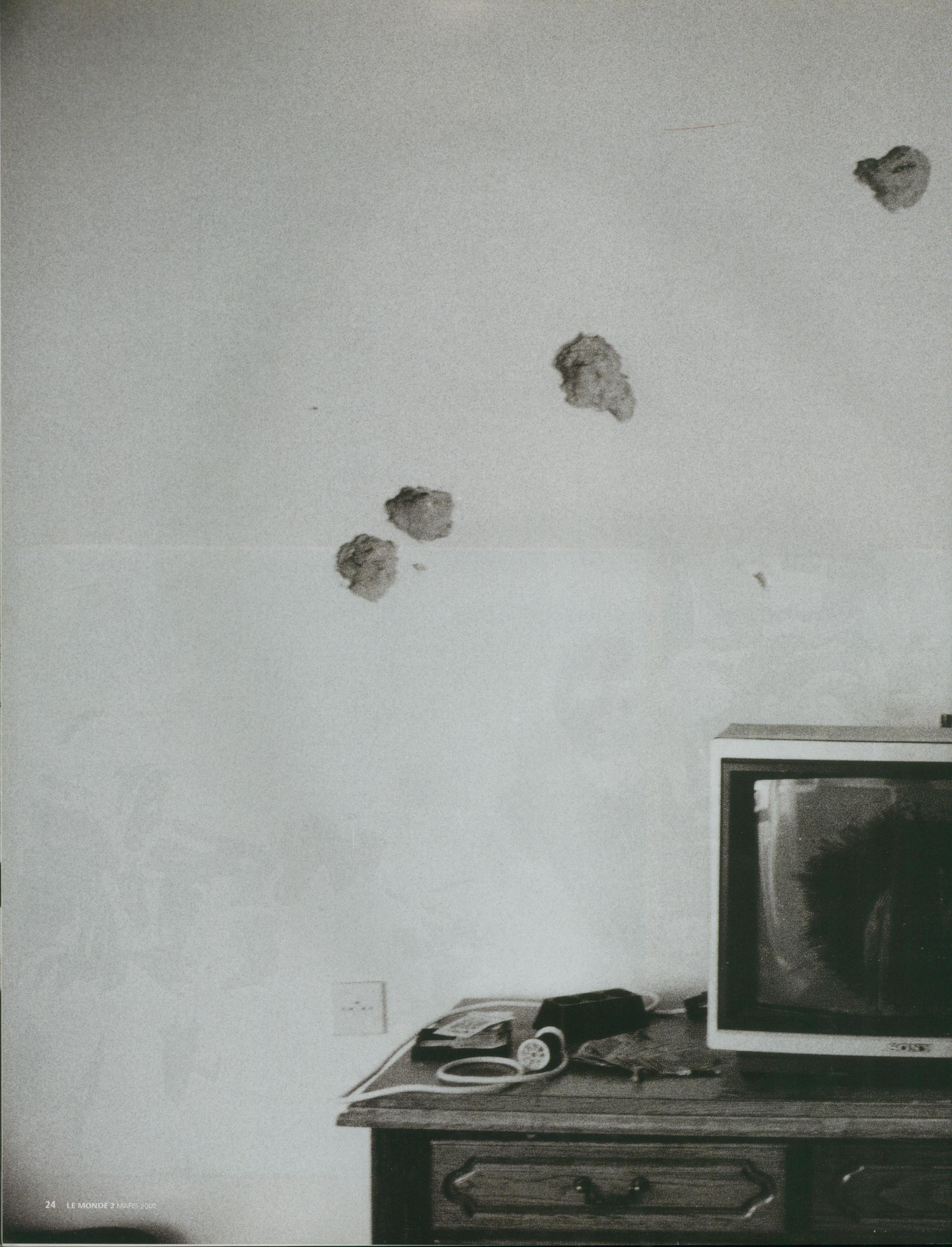
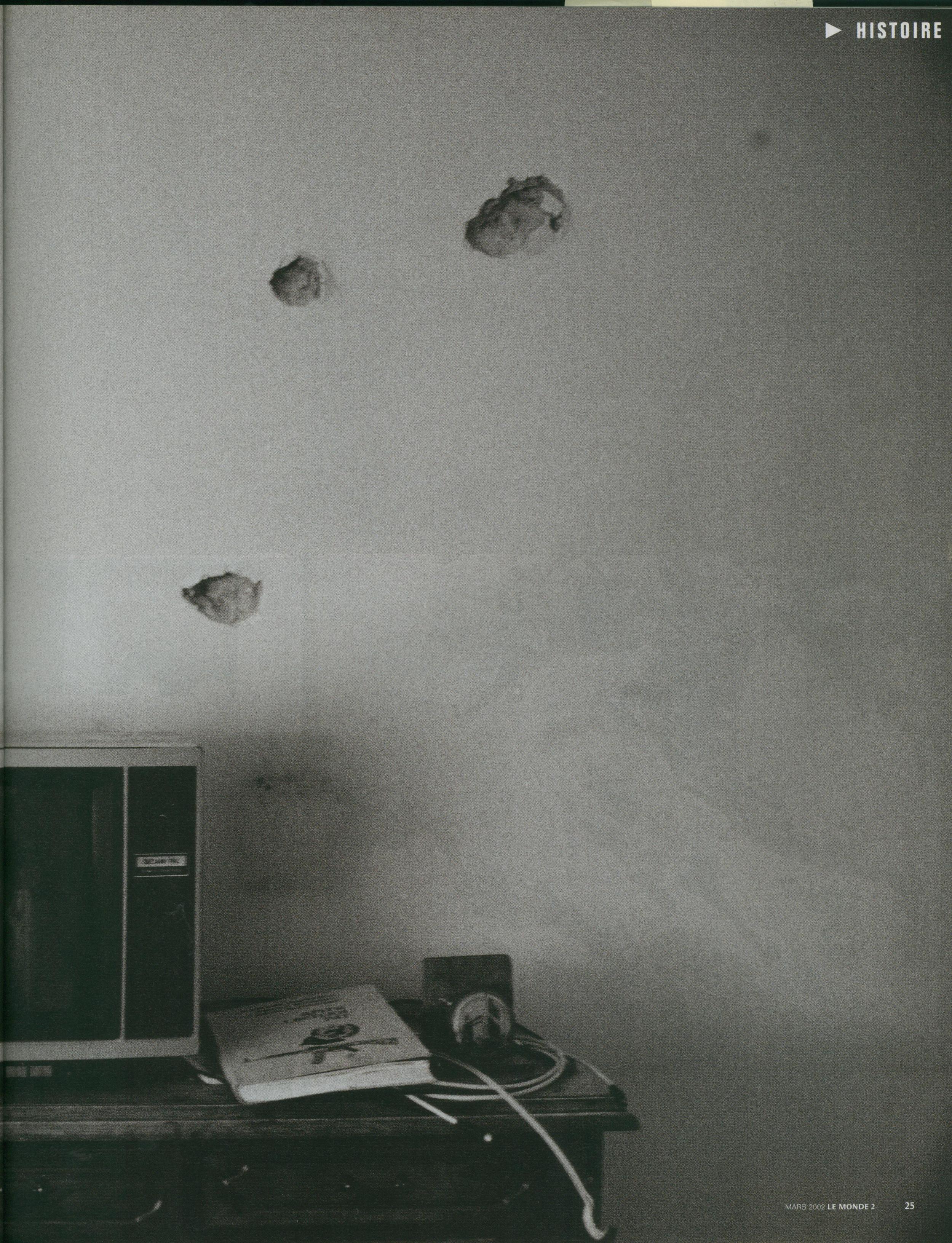
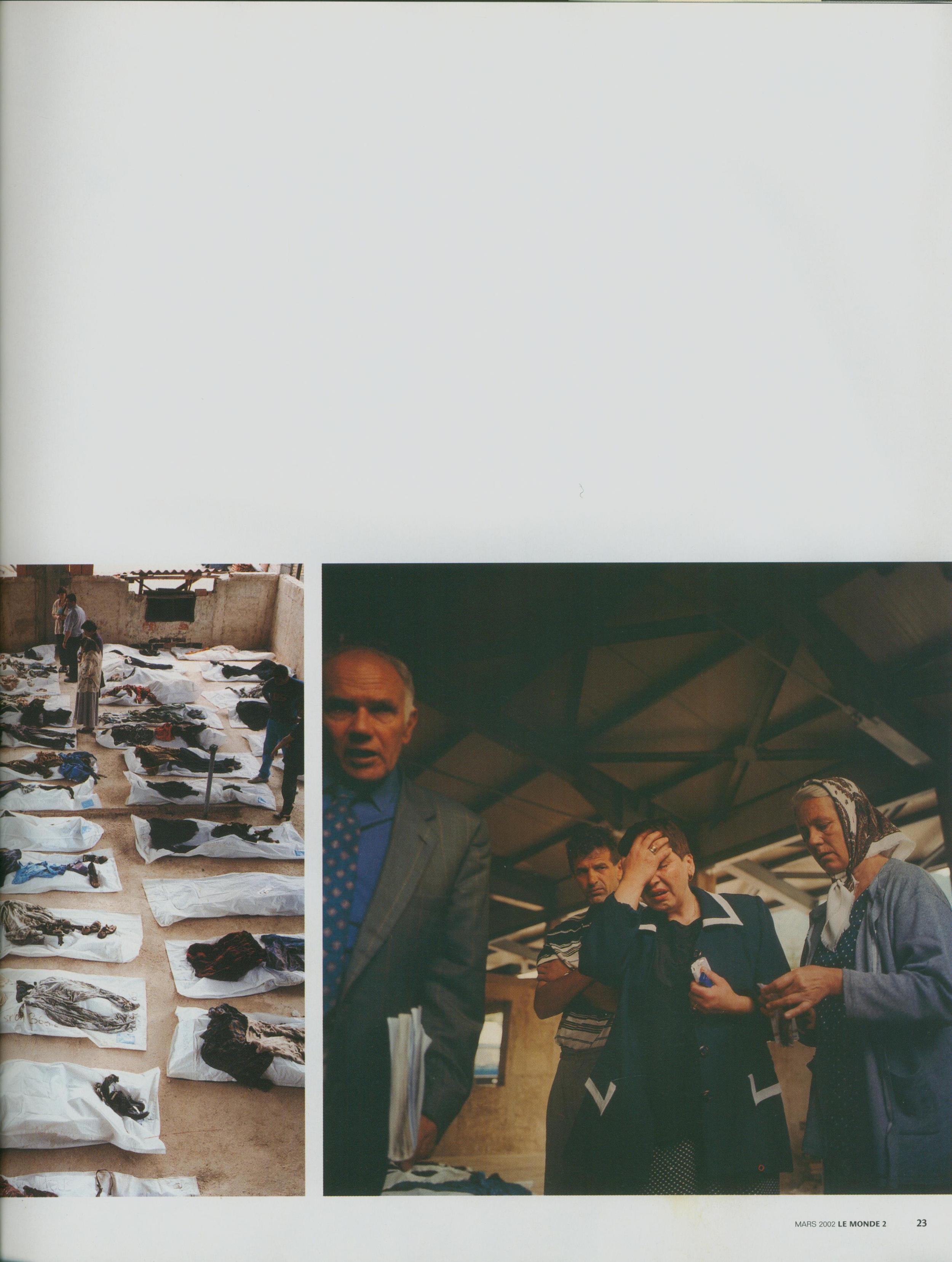

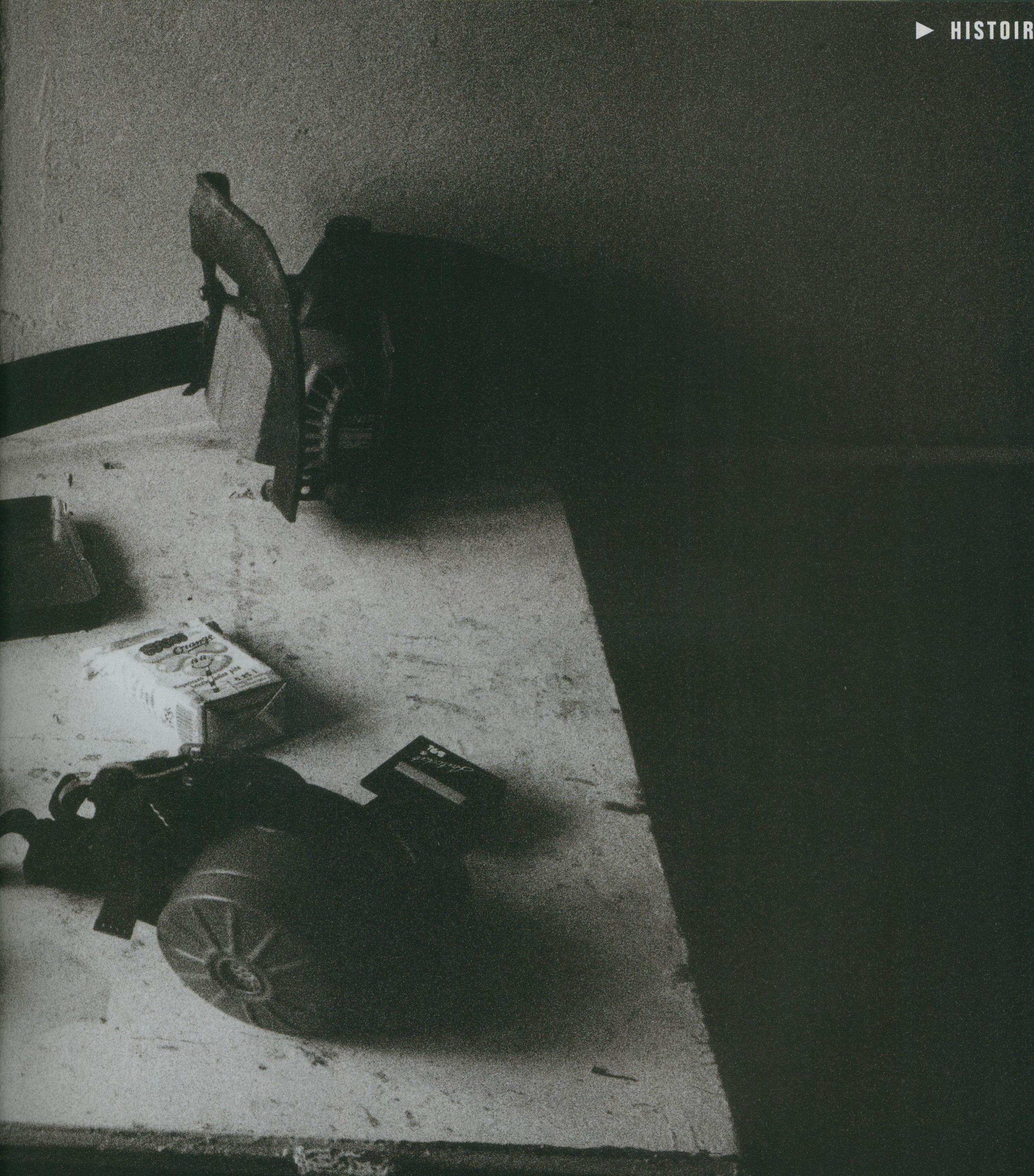
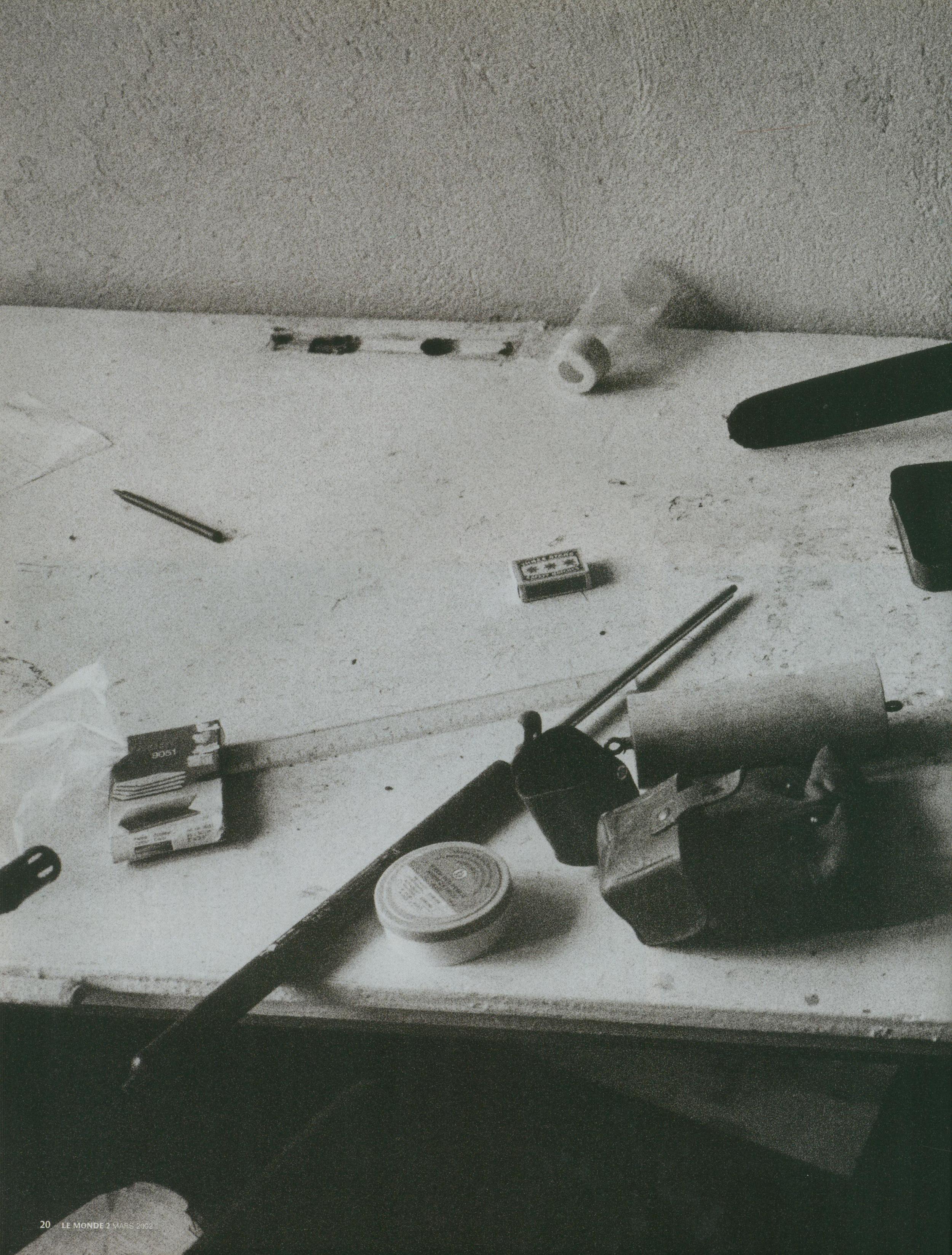
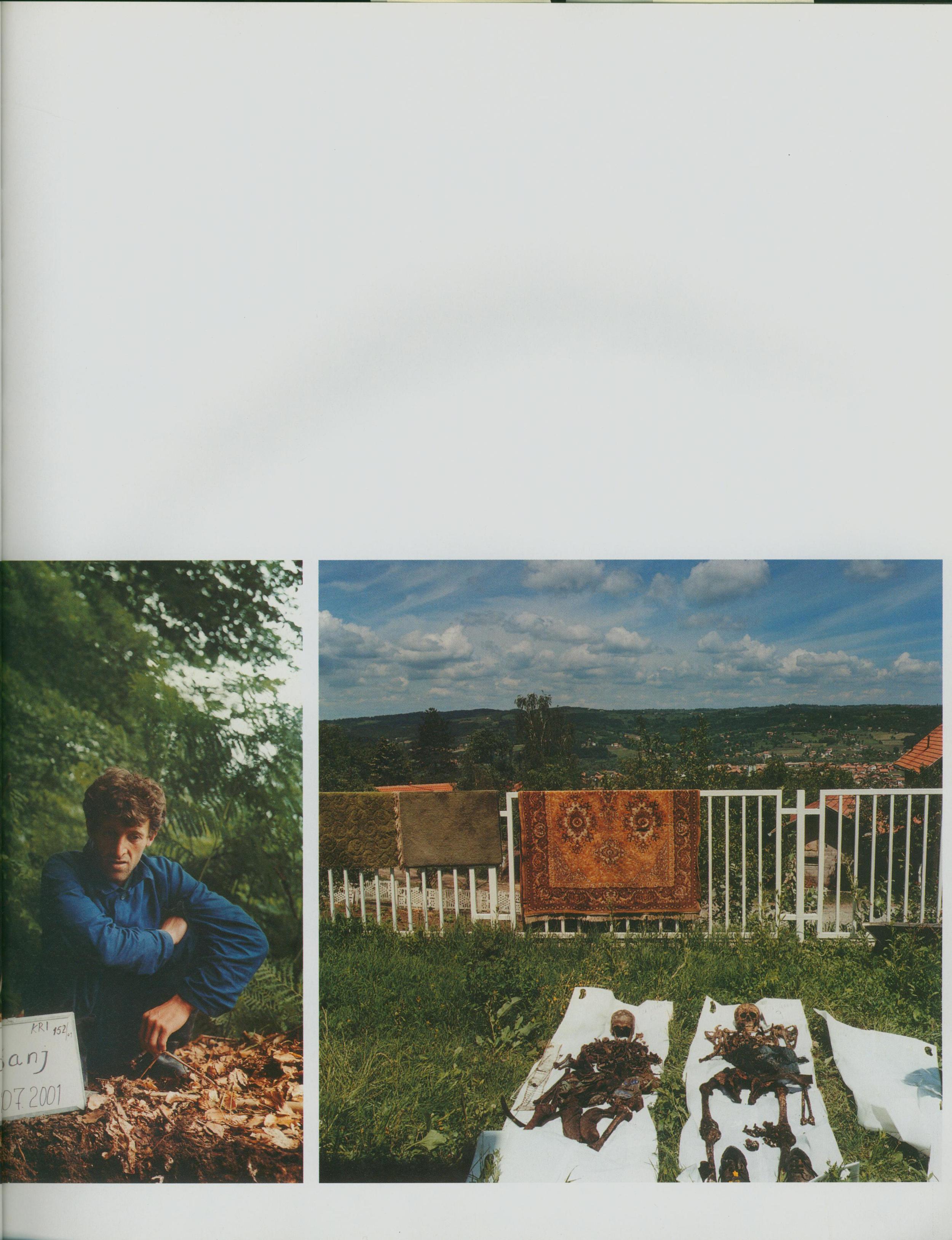
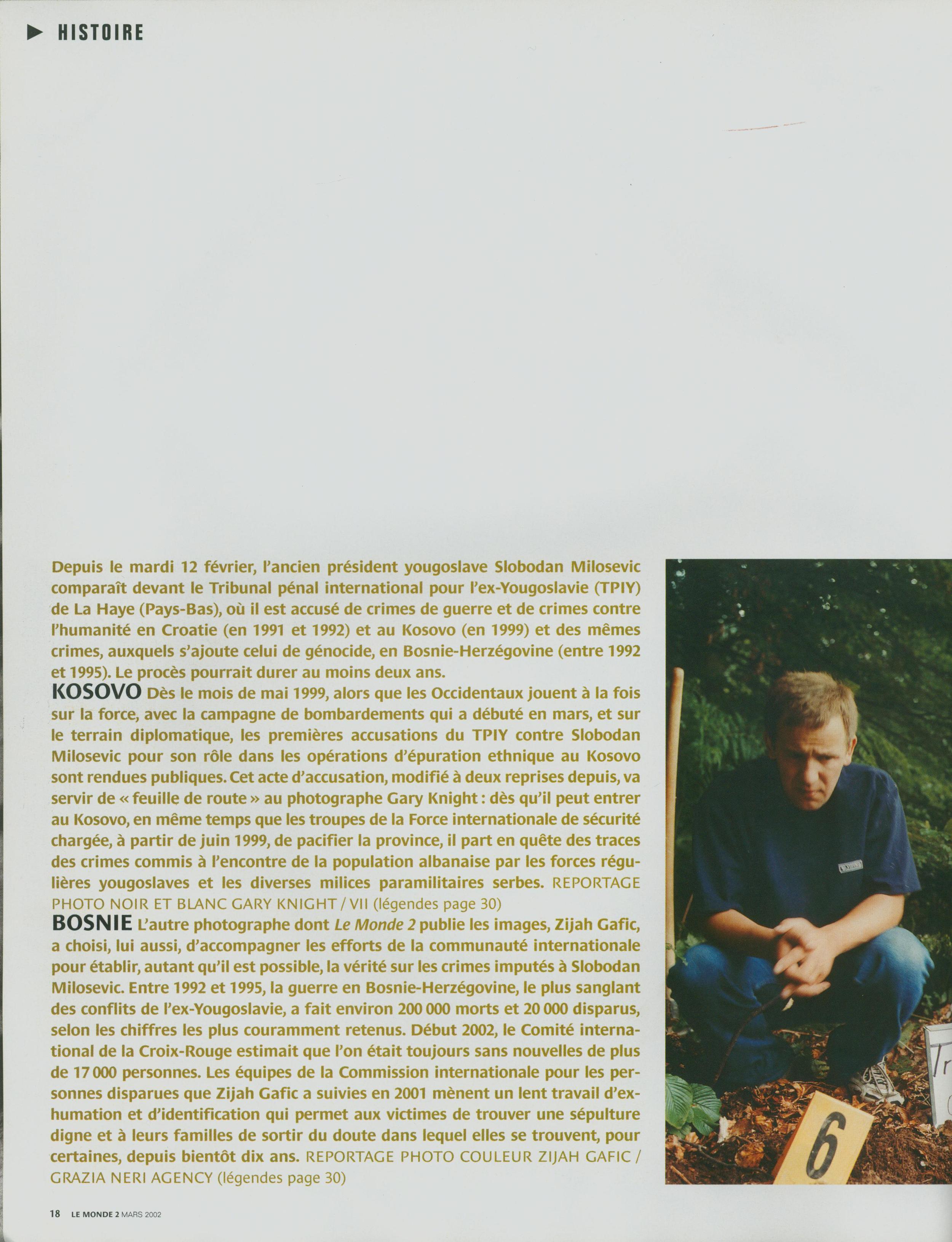
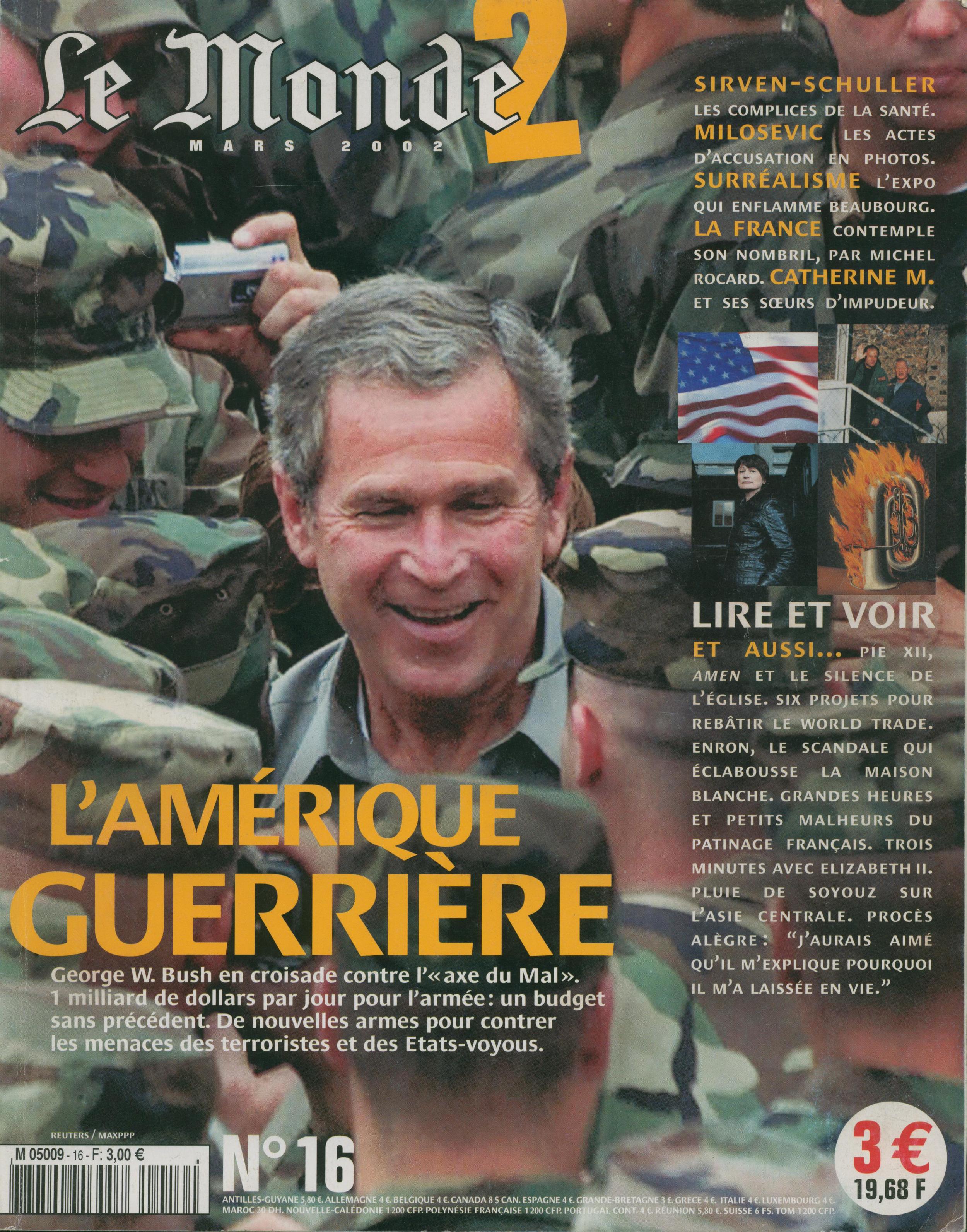
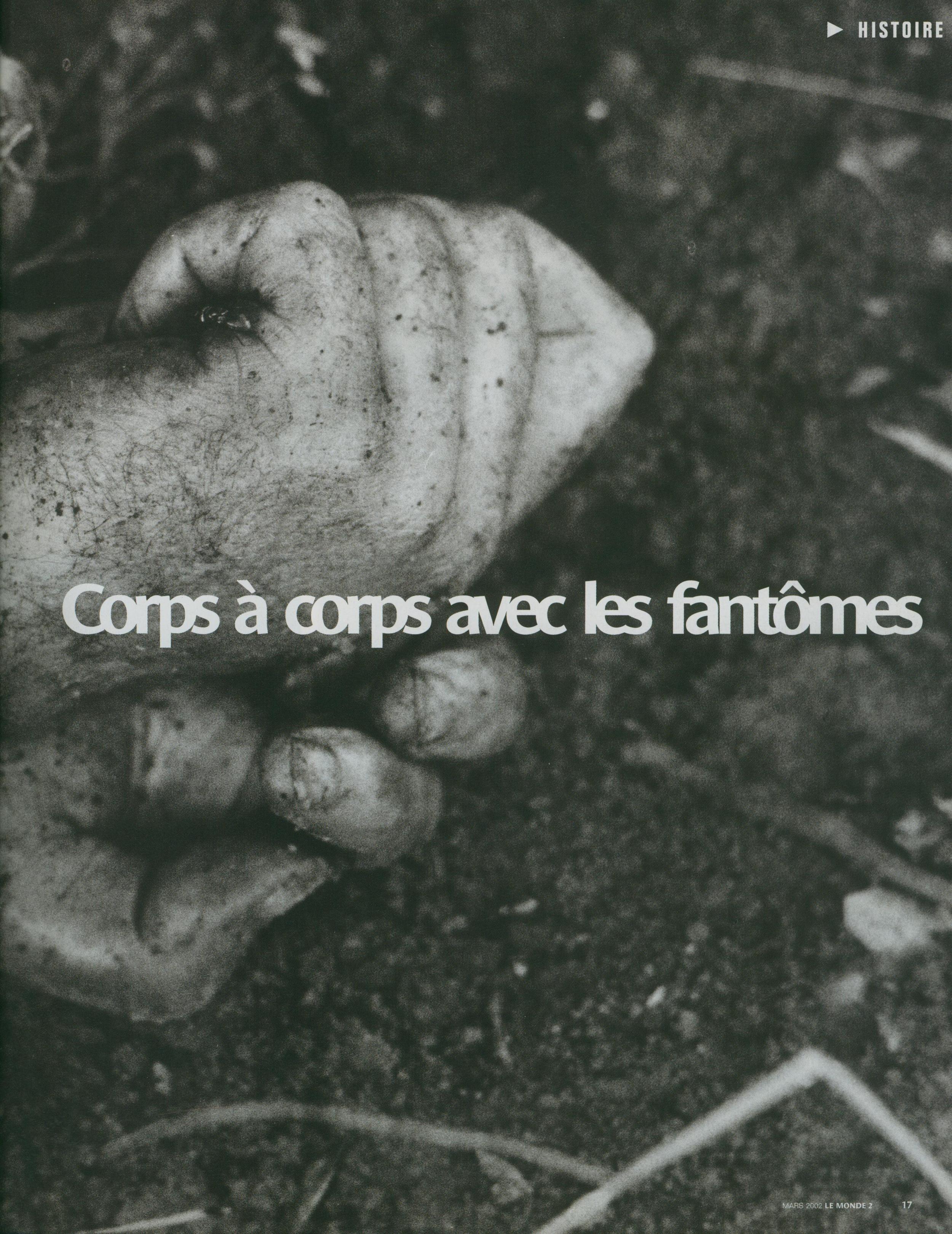
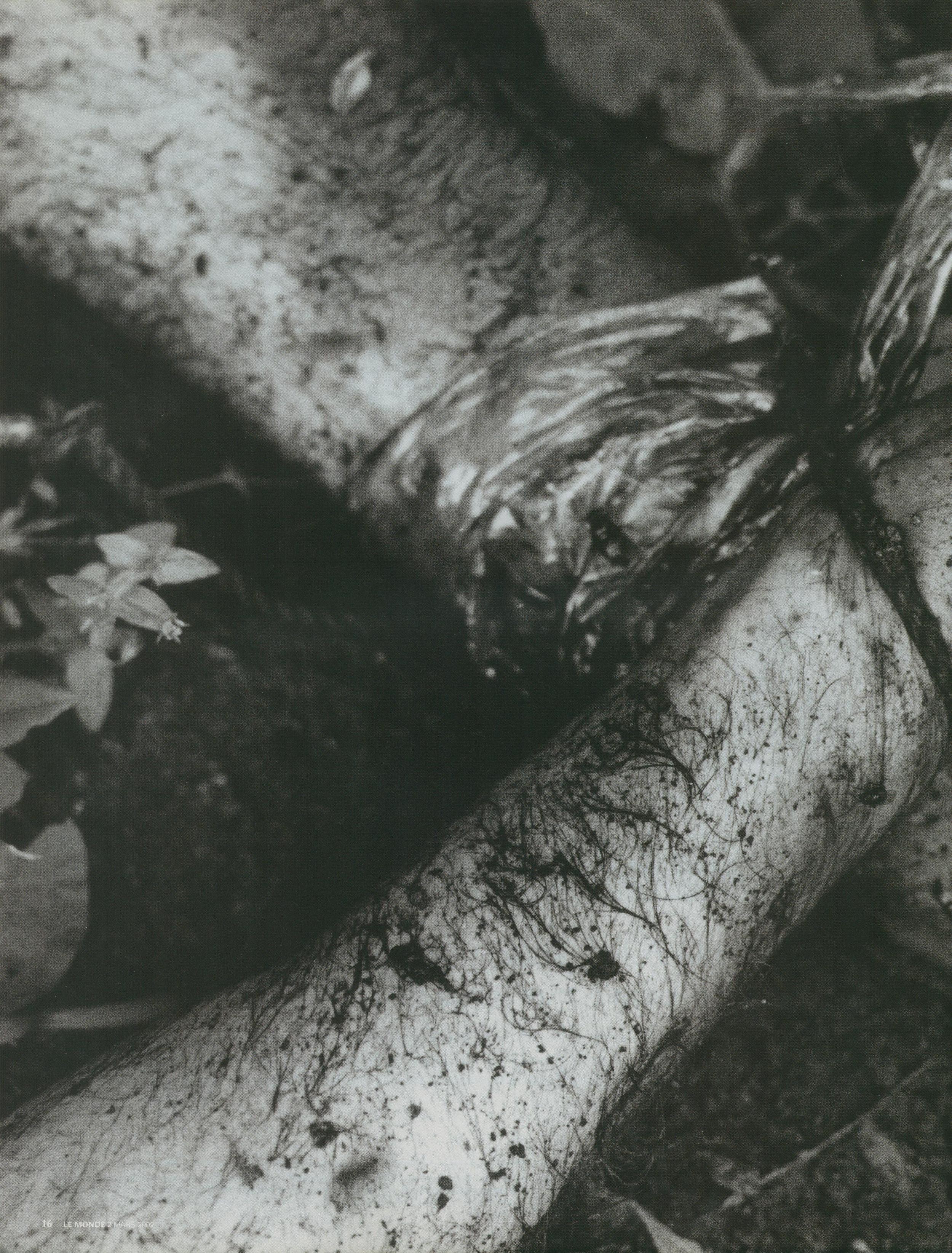
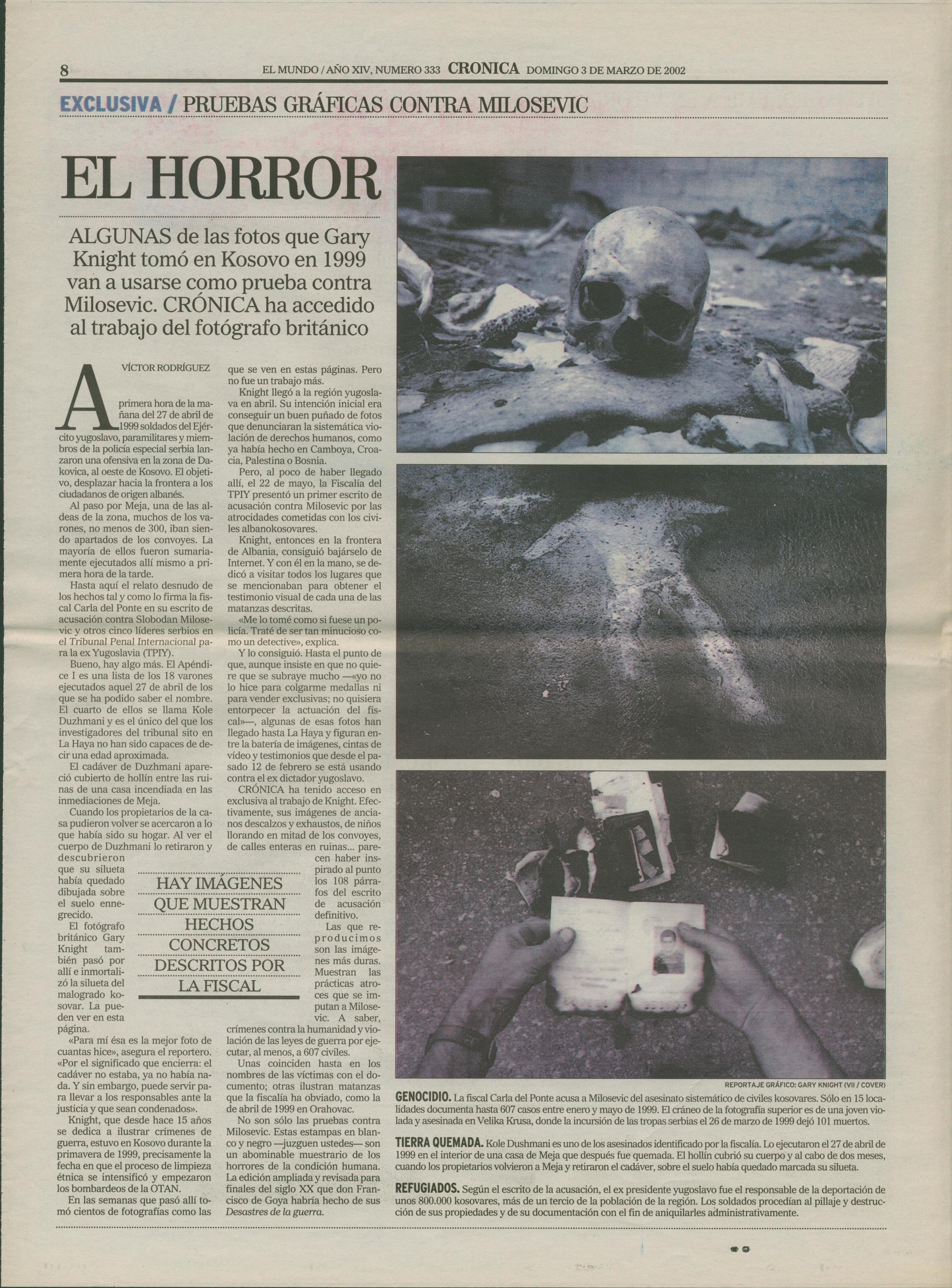
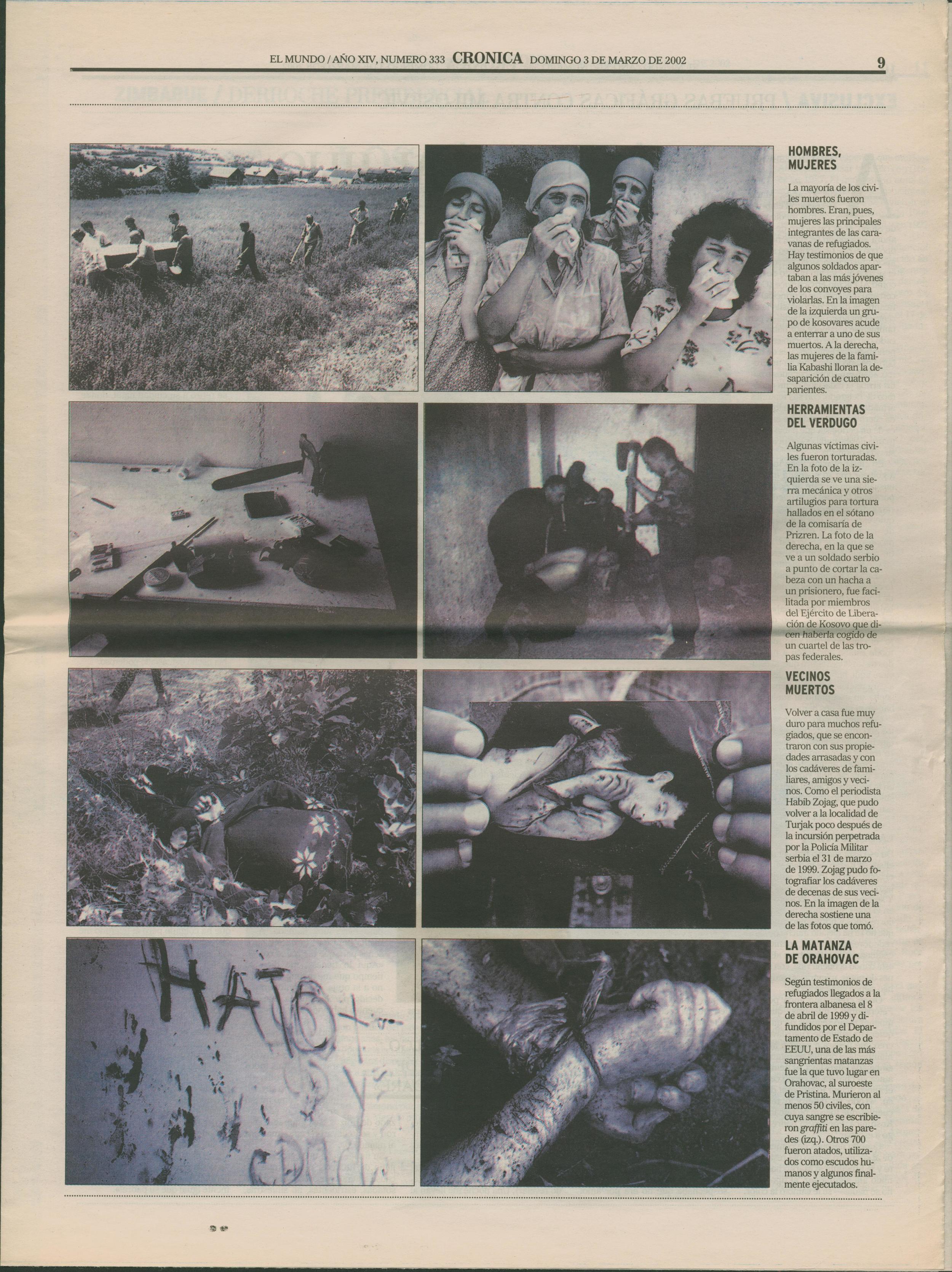




































Rare limited edition copy of 'Evidence, The Case Against Milosevic' by Gary Knight & Anthony Loyd. deMo 2002.
+ Reading List
Evidence: The Case Against Milosevic. 2002, by Gary Knight and Anthony Loyd
Black Lamb and Grey Falcon: A Journey through Yugoslavia. 1944, by Rebecca West
The Balkans: Nationalism, War, and the Great Powers, 1804-2011. 2012, by Misha Glenny
The Fall of Yugoslavia: The Third Balkan War. 1996, by Misha Glenny
The Bridge over the Drina. 1994, by Ivo Andric
Yugoslavia: Death of a Nation. 1997, by Laura Silber and Allan Little
Kosovo: A Short History. 1999, by Noel Malcolm
Liberating Kosovo: Coercive Diplomacy and U. S. Intervention. 2014, by David L Philips
Kosovo: War and Revenge. 2002, by Tim Judah
Kosovo: What Everyone Needs to Know. 2008, by Tim Judah
My War Gone By, I Miss It So. 2000, by Anthony Loyd
They Would Never Hurt a Fly: War Criminals on Trial in The Hague. 2004, by Slavenka Draculic
Eclats de Guerre. 2002, by Alexandra Boulat
Blood & Honey: A Balkan War Journal. 2001, by Ron Haviv
Ex Yougoslavie: 1991-1996. 1998, by Emmanuel Ortiz
Farewell to Bosnia. 1994, by Gilles Peress
The Silence. 1995, by Gilles Peress
Inferno. 1999, by James Nachtwey
Aftermath: Bosnia’s Long Road to Peace. 2005, by Sara Terry
Quest for Identity. 2012, by Ziyah Gafic
The Bone Woman: A Forensic Anthropologist’s Search for Truth in the Mass Graves of Rwanda, Bosnia, Croatia, and Kosovo. 2004, by Clea Koff